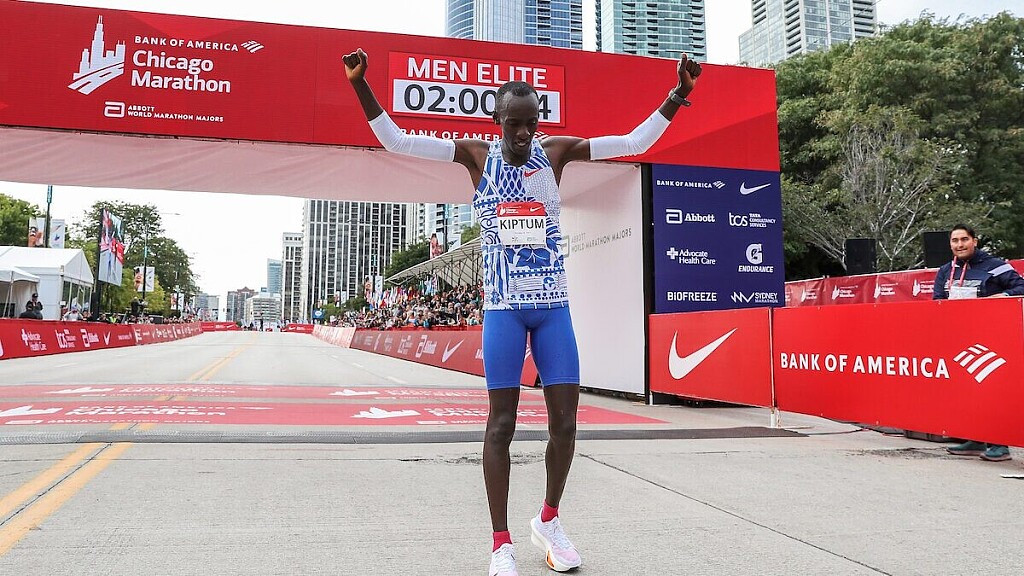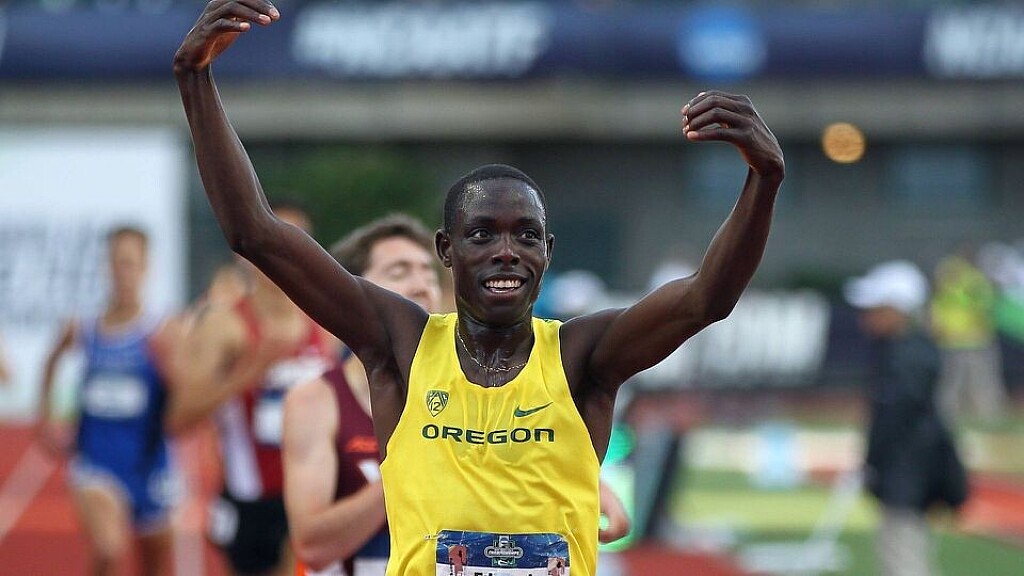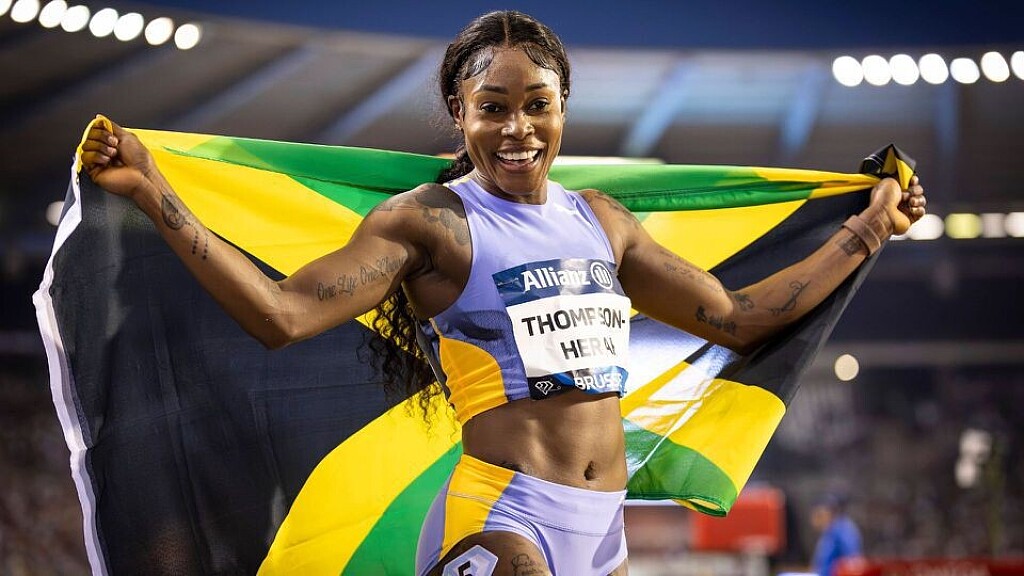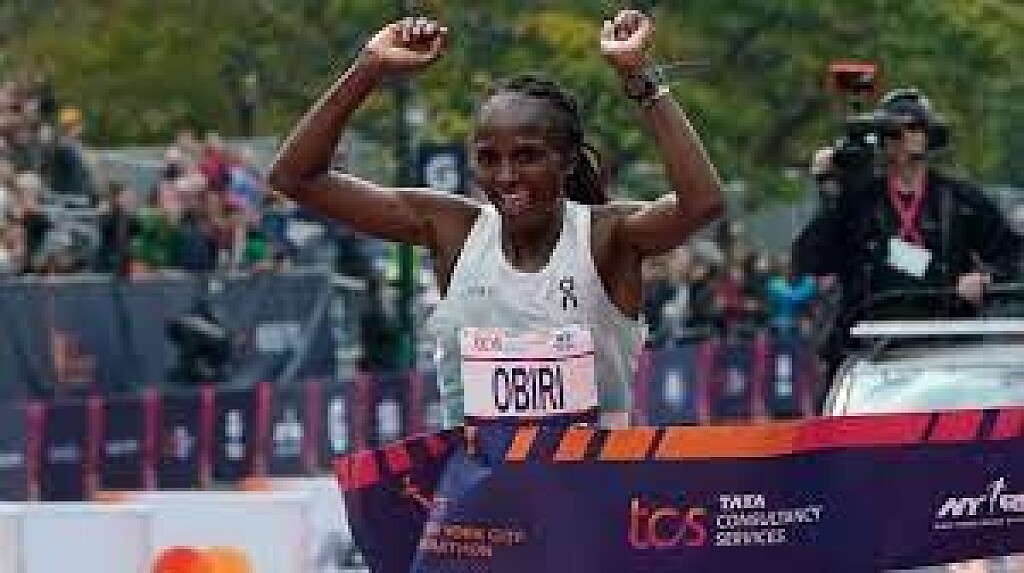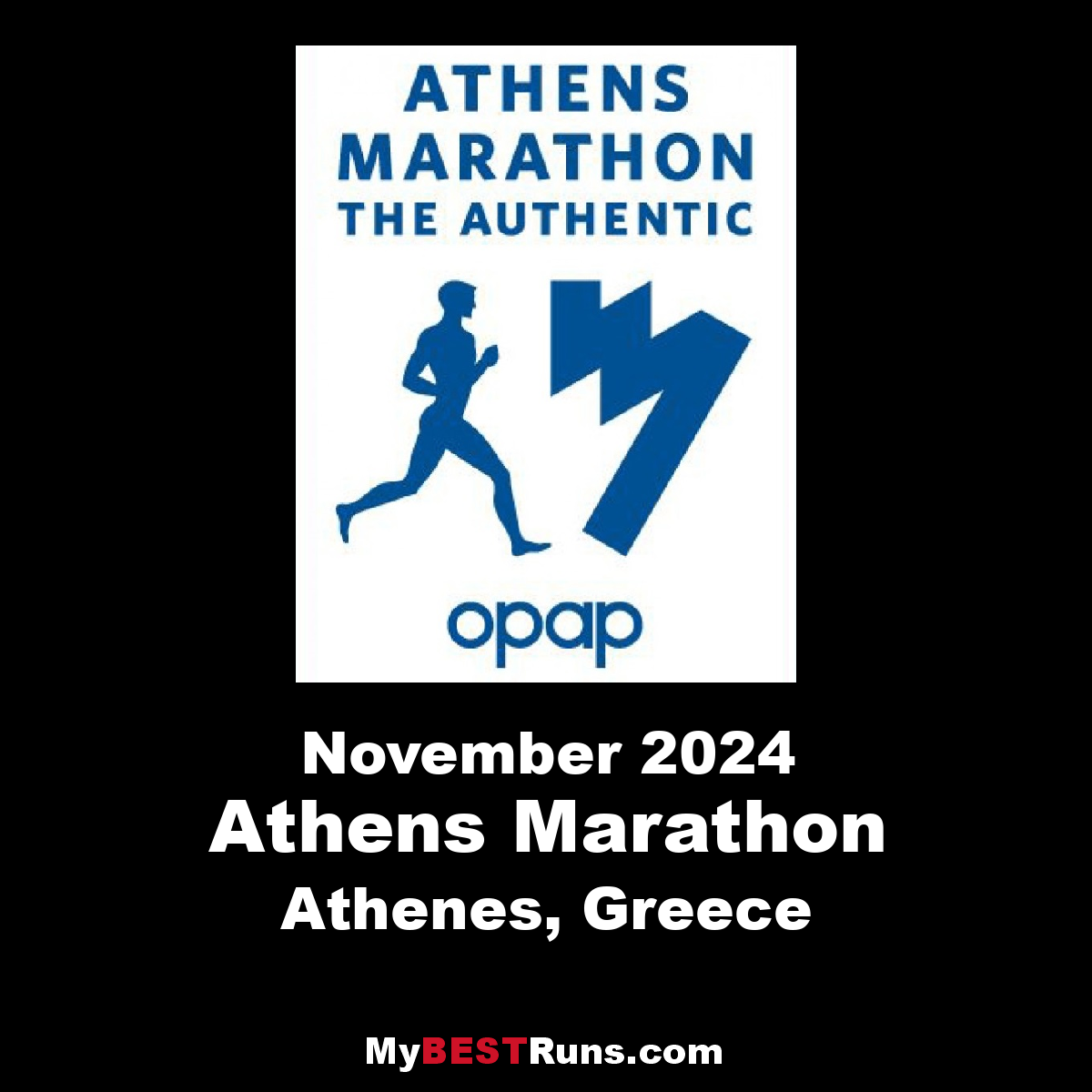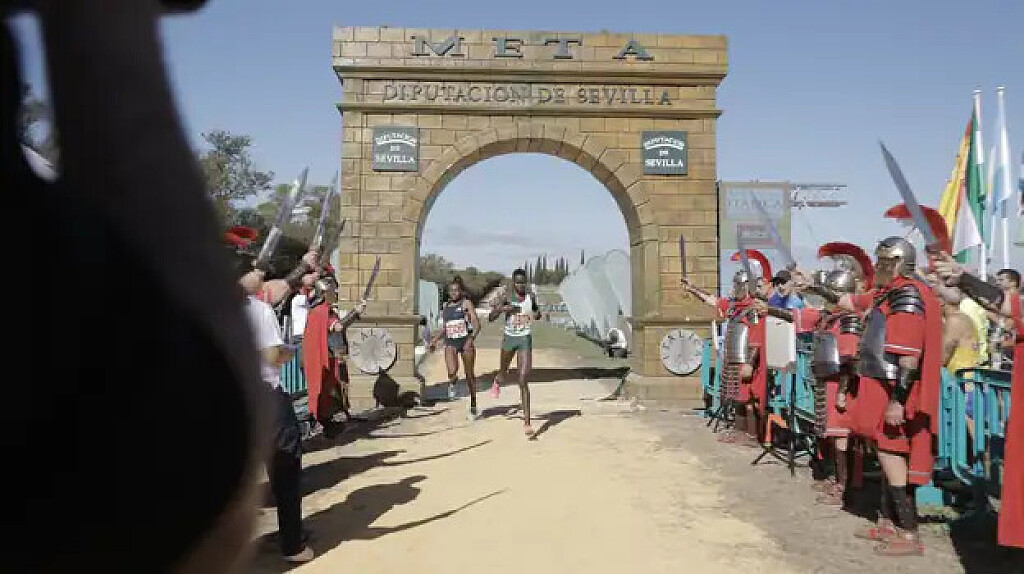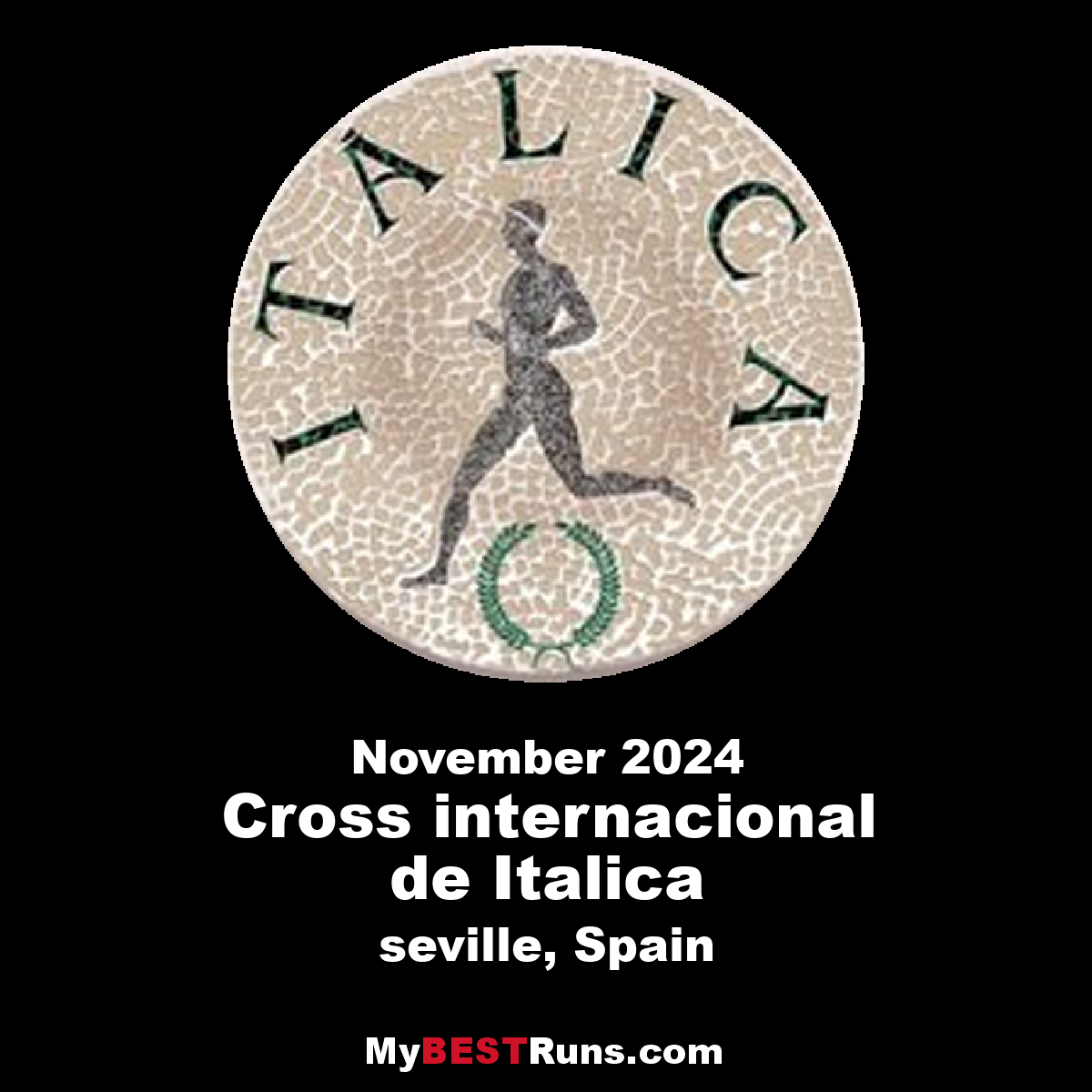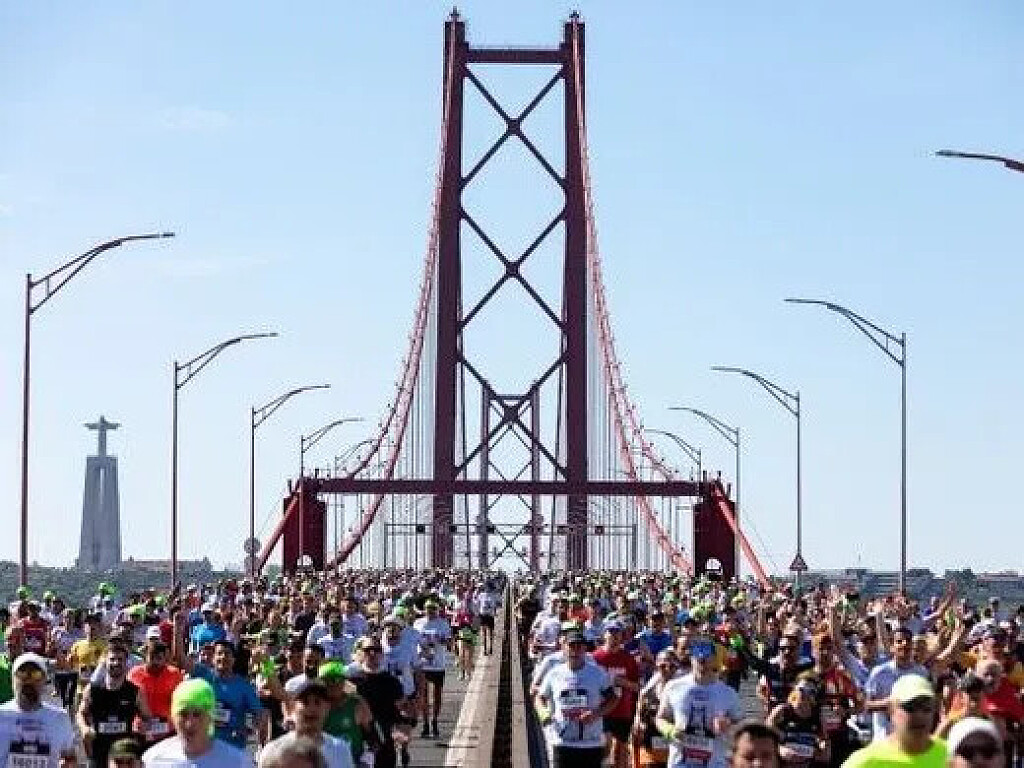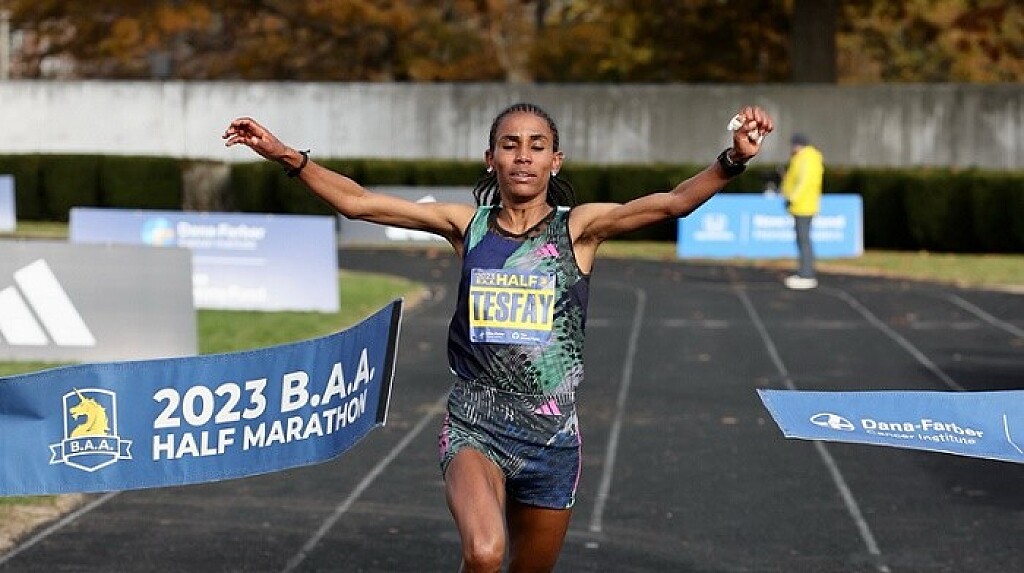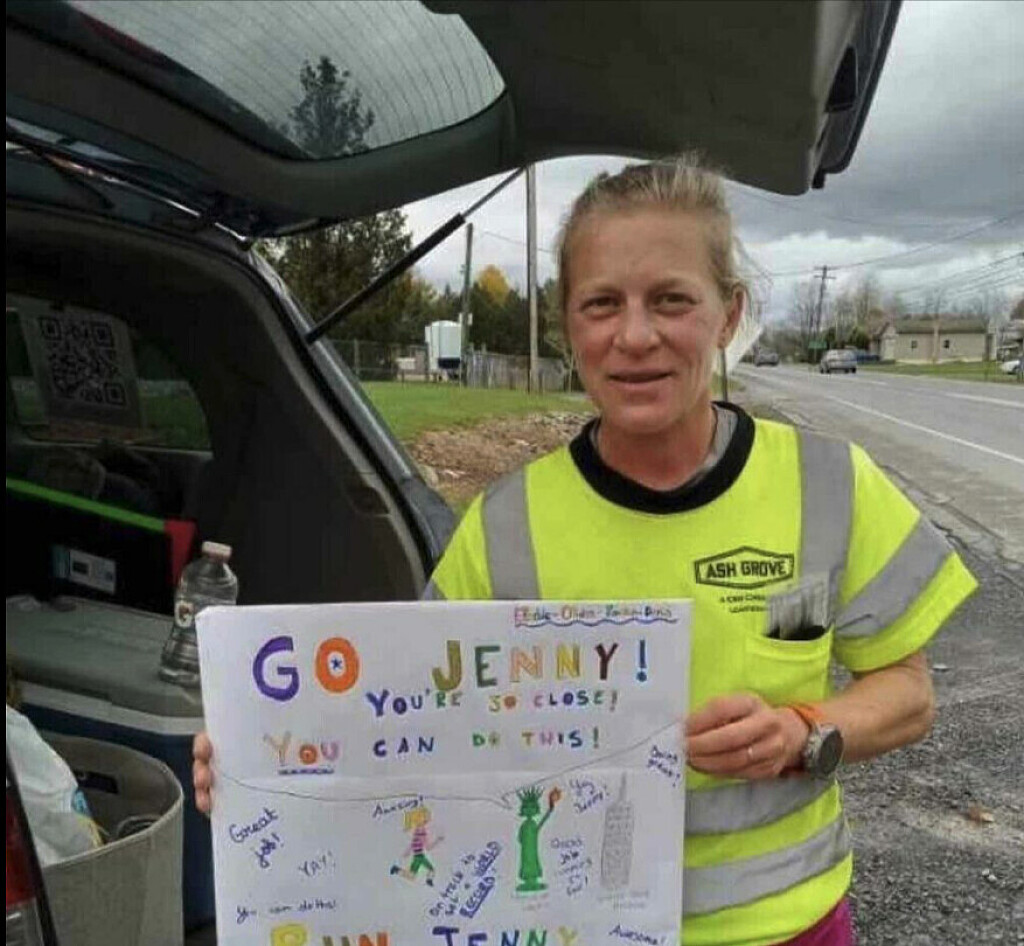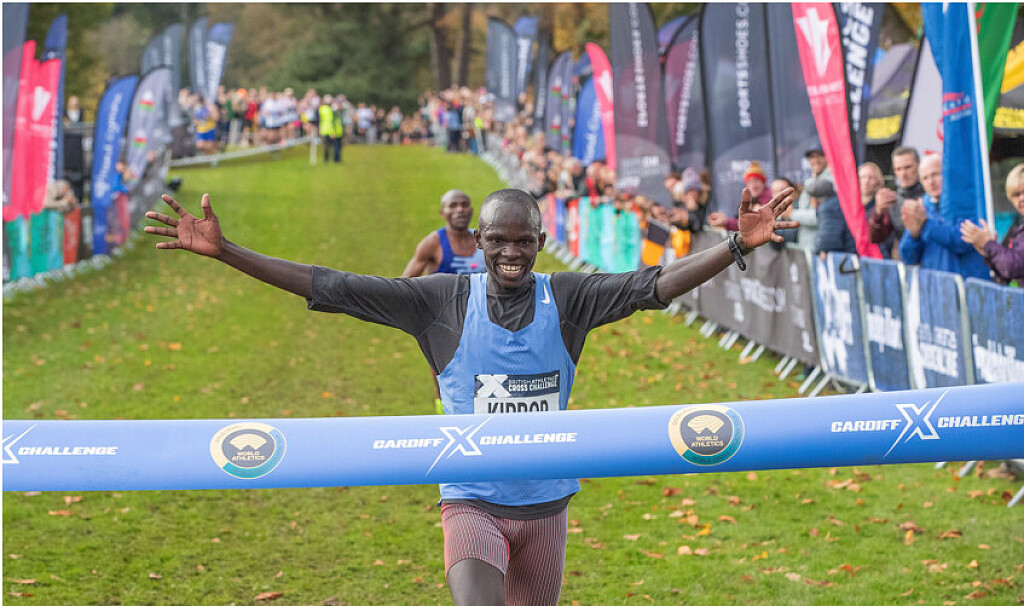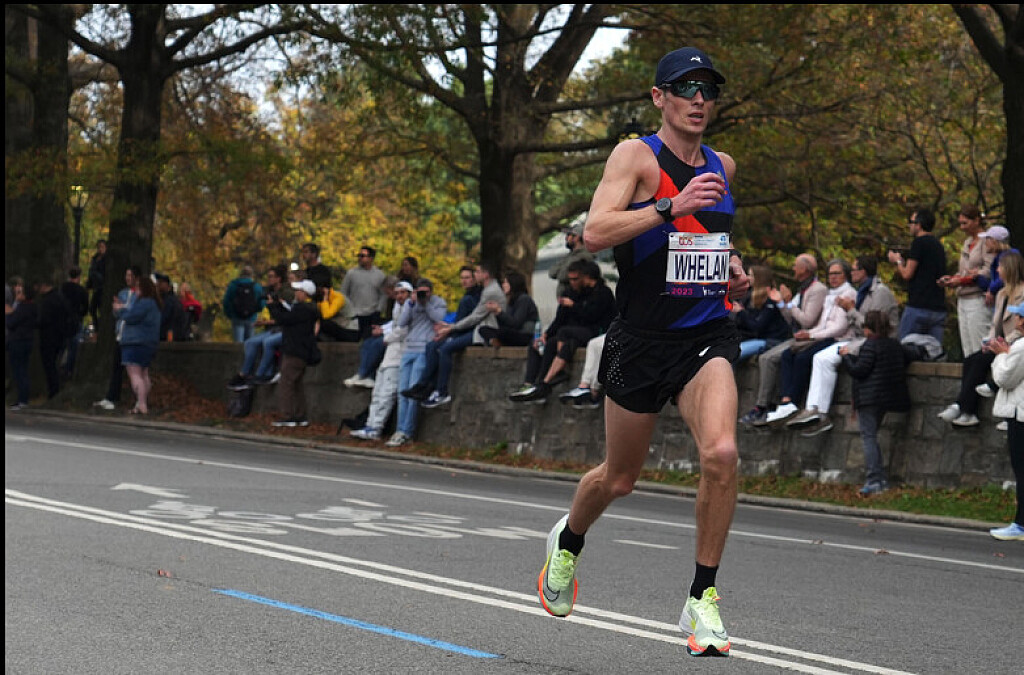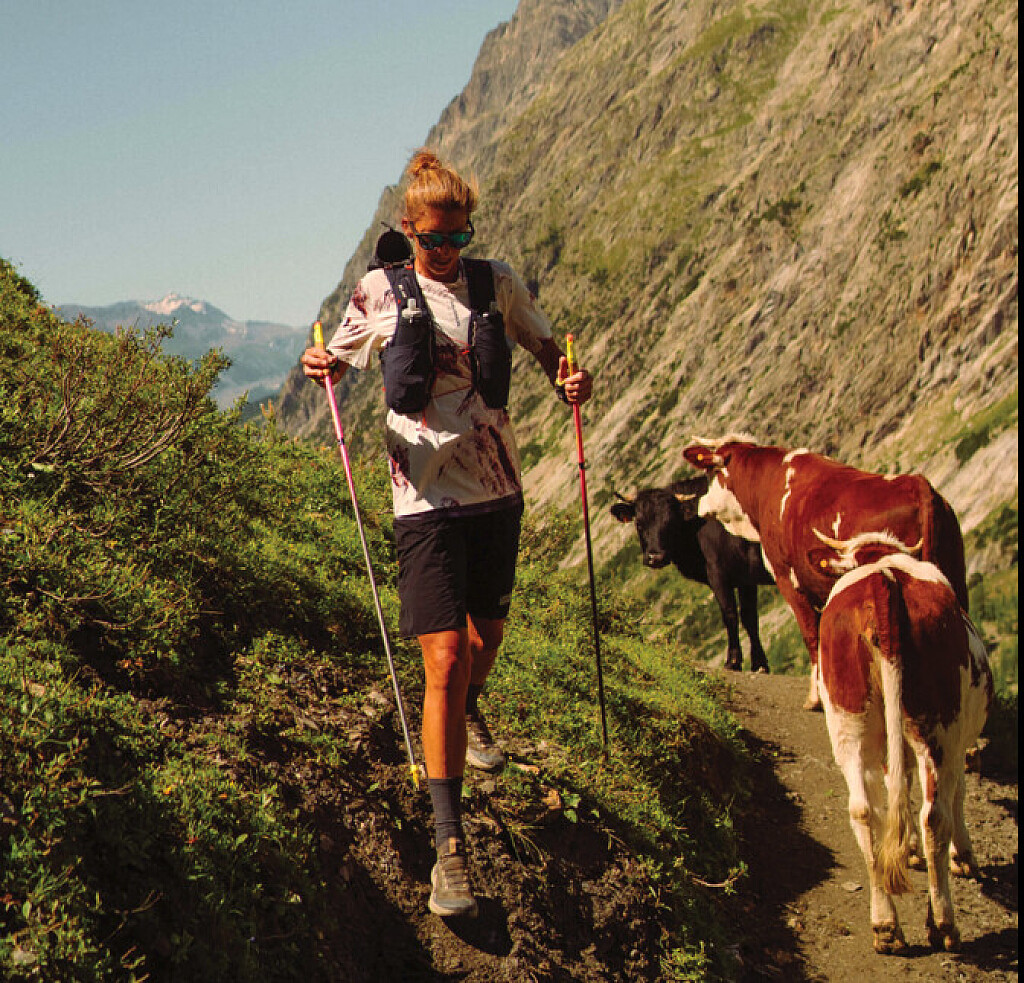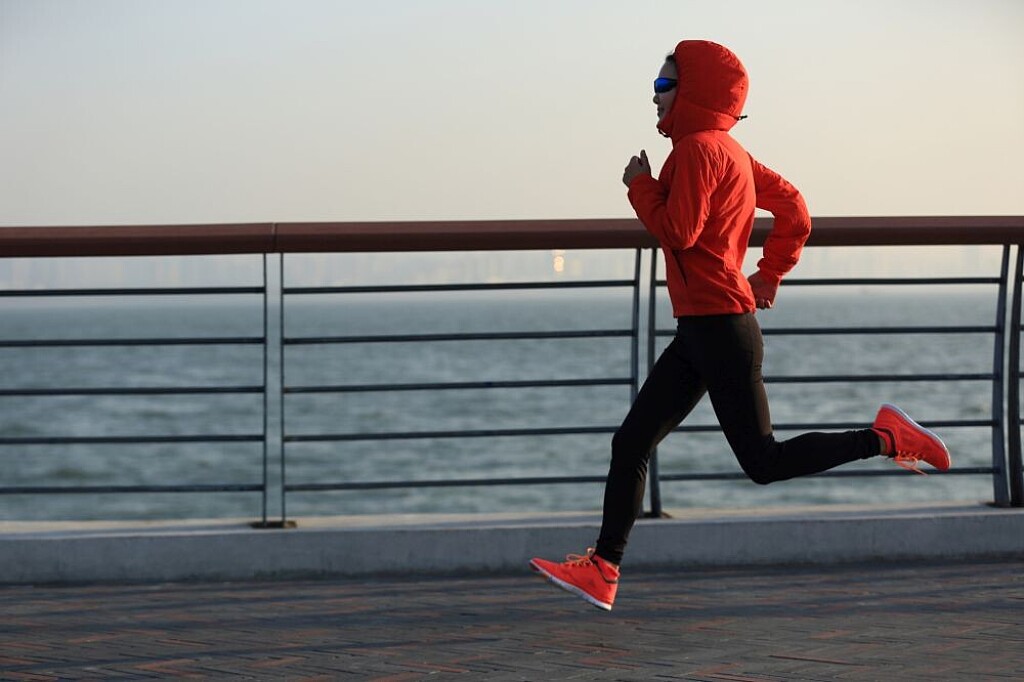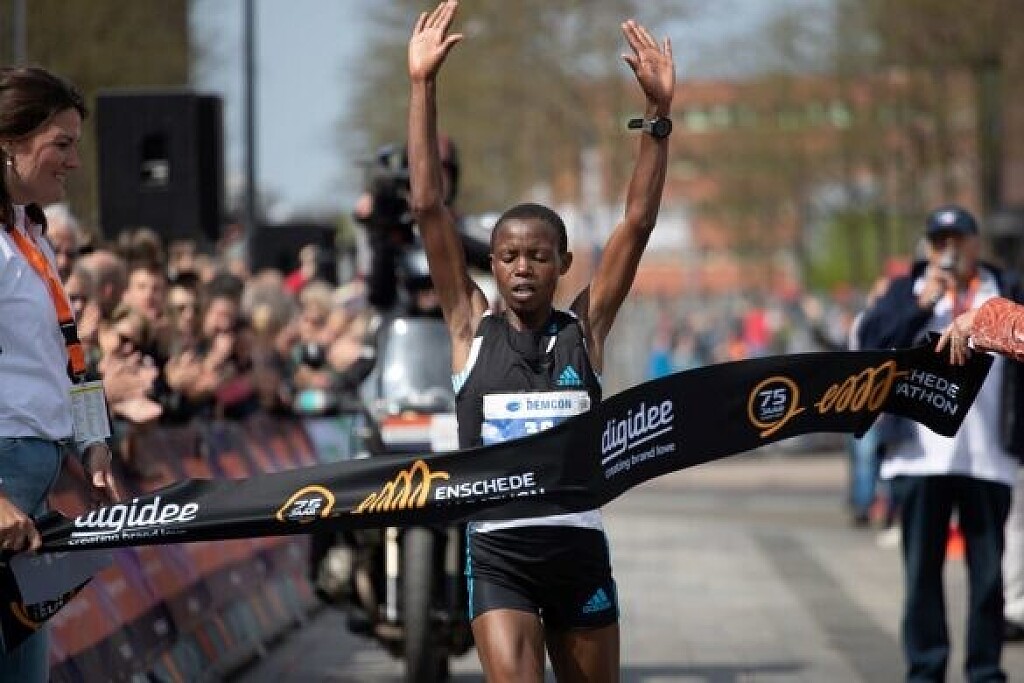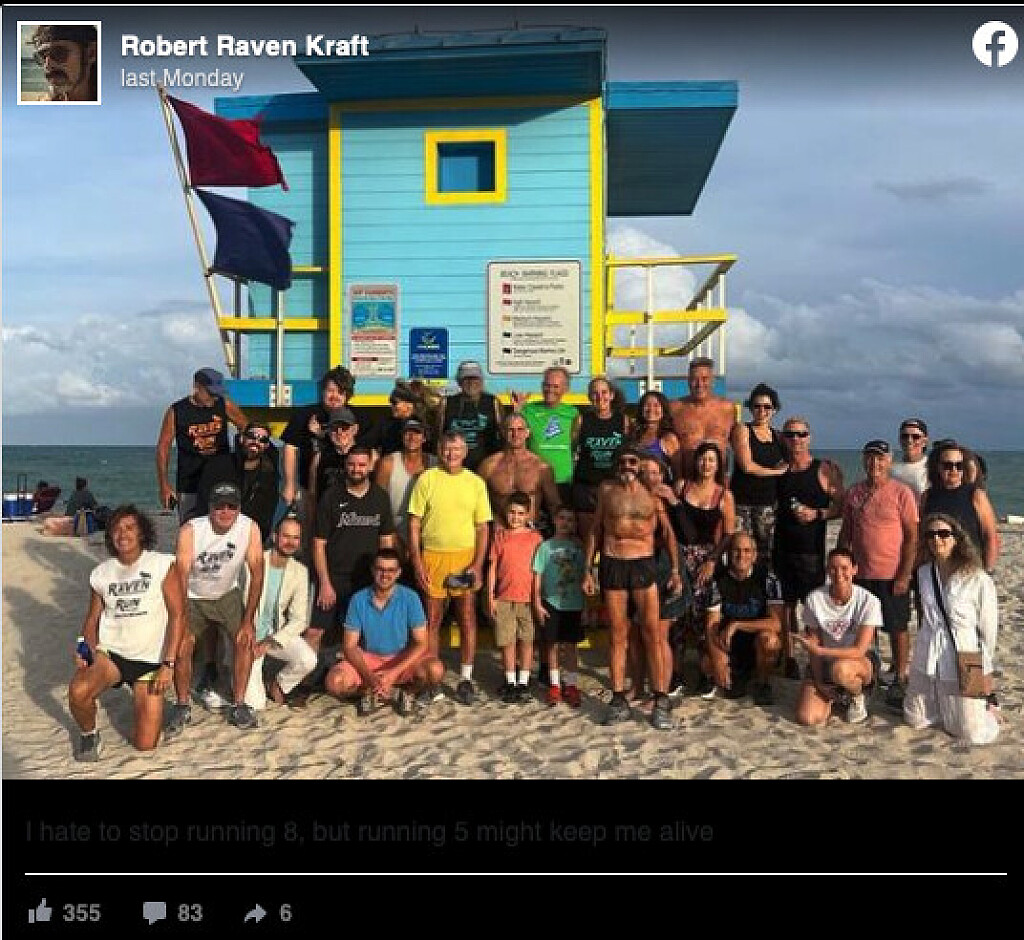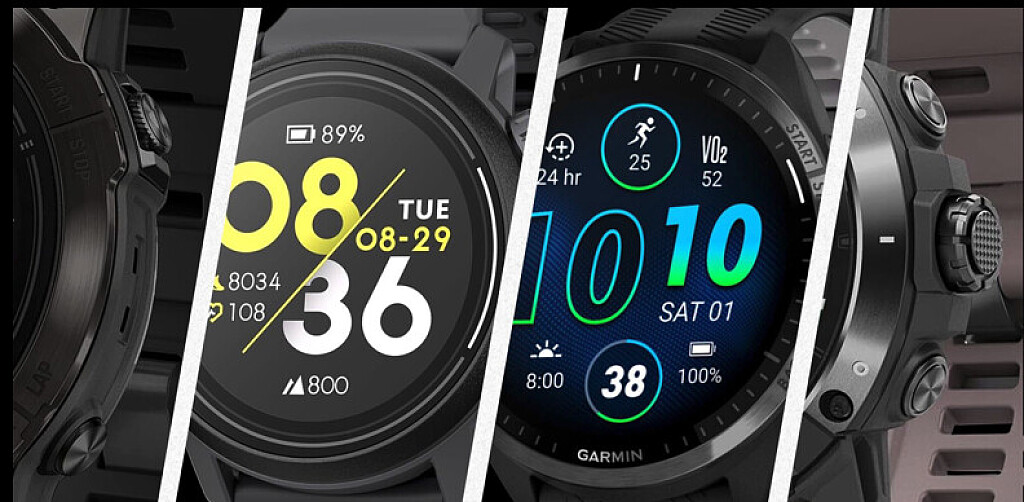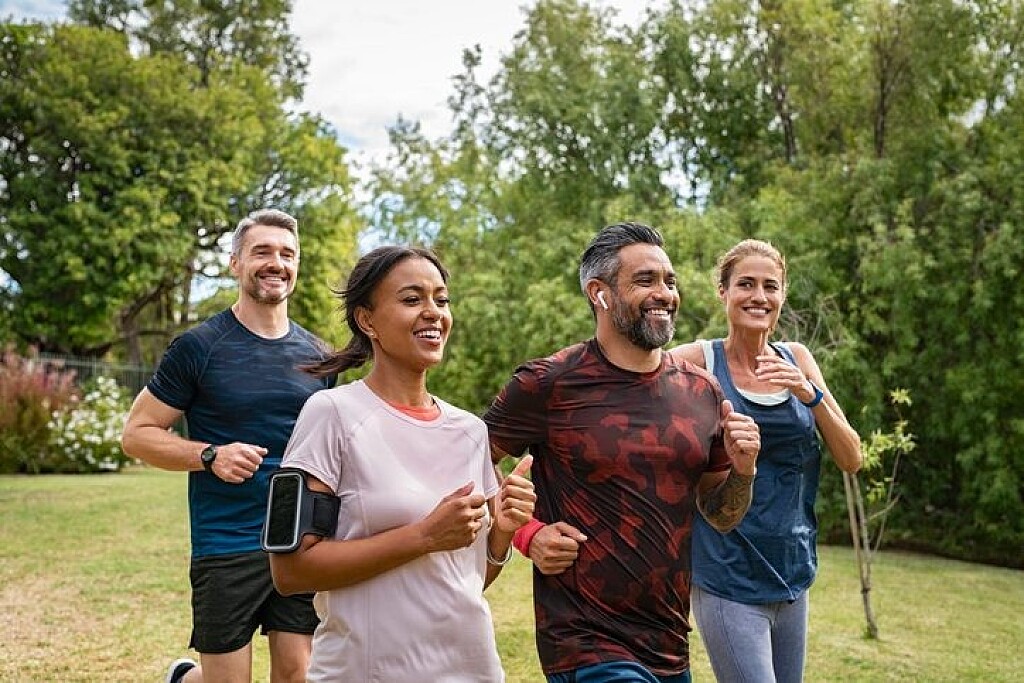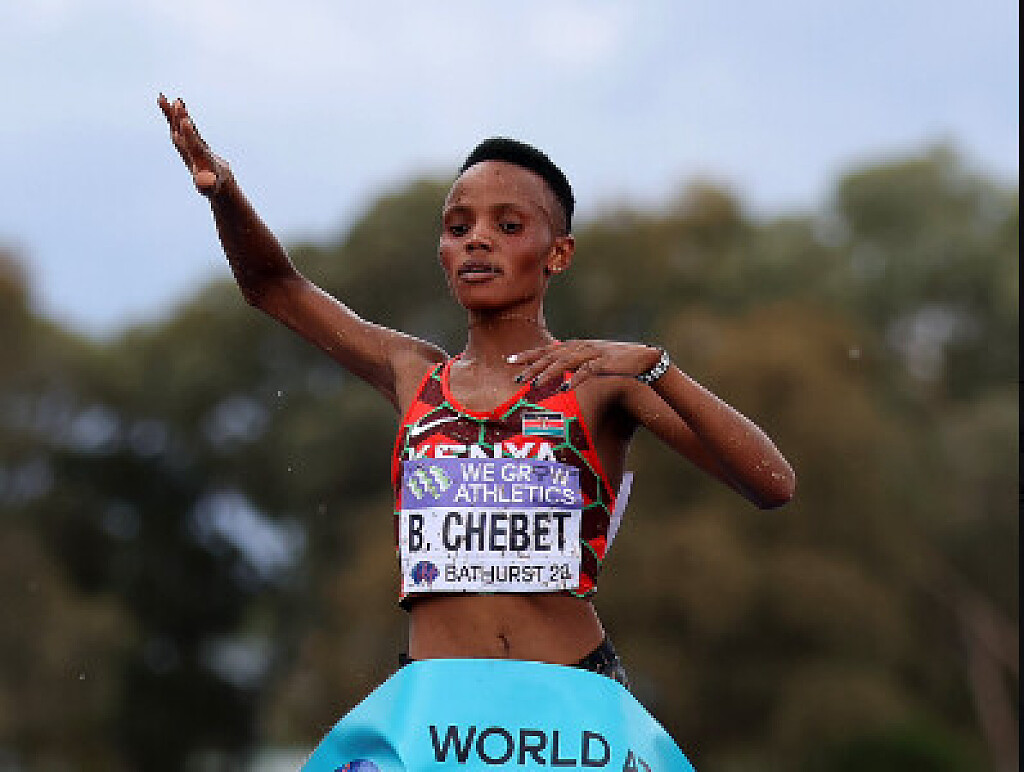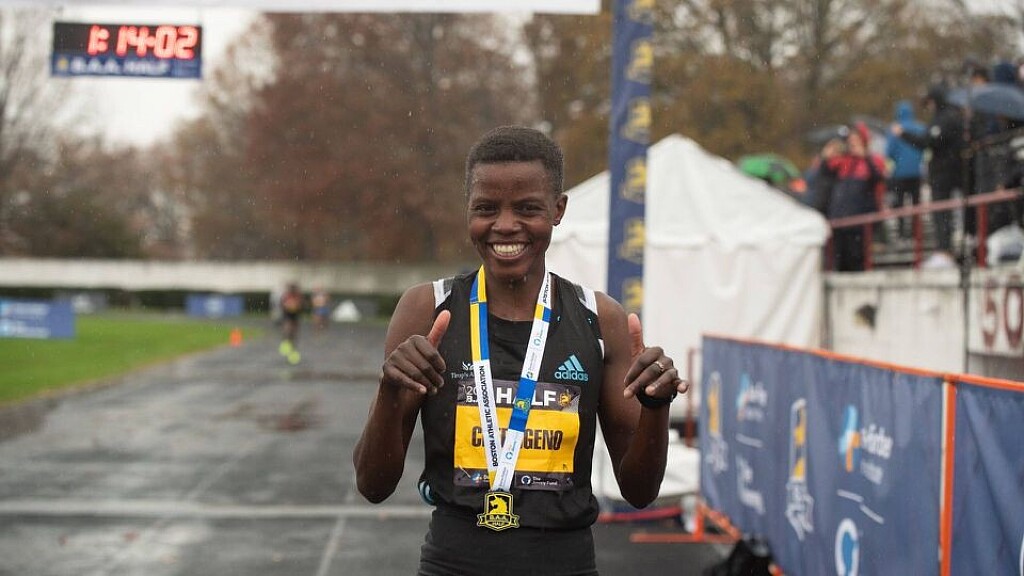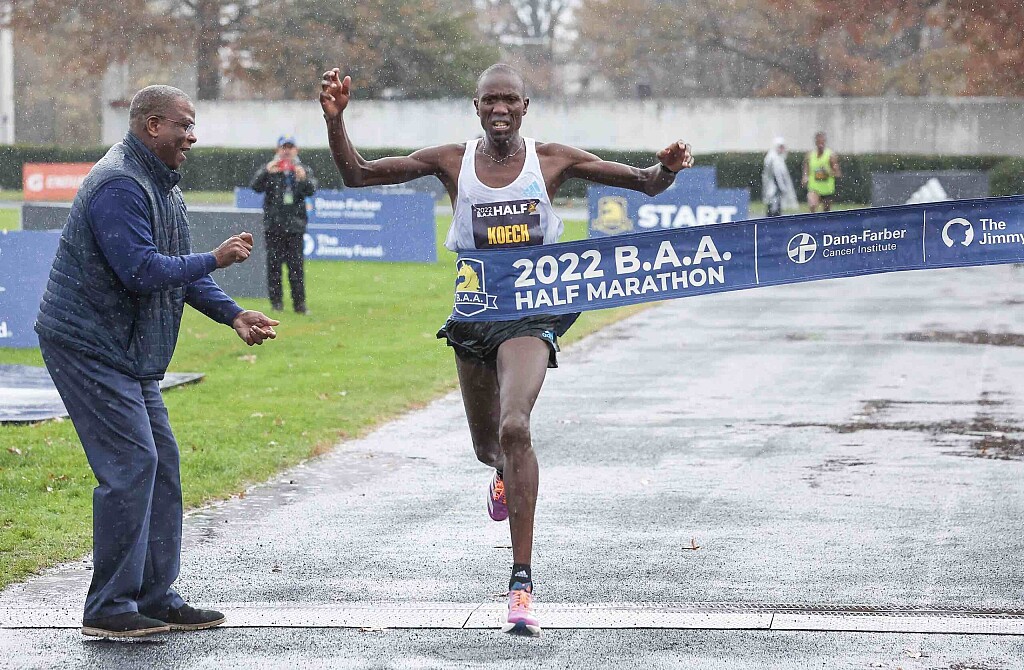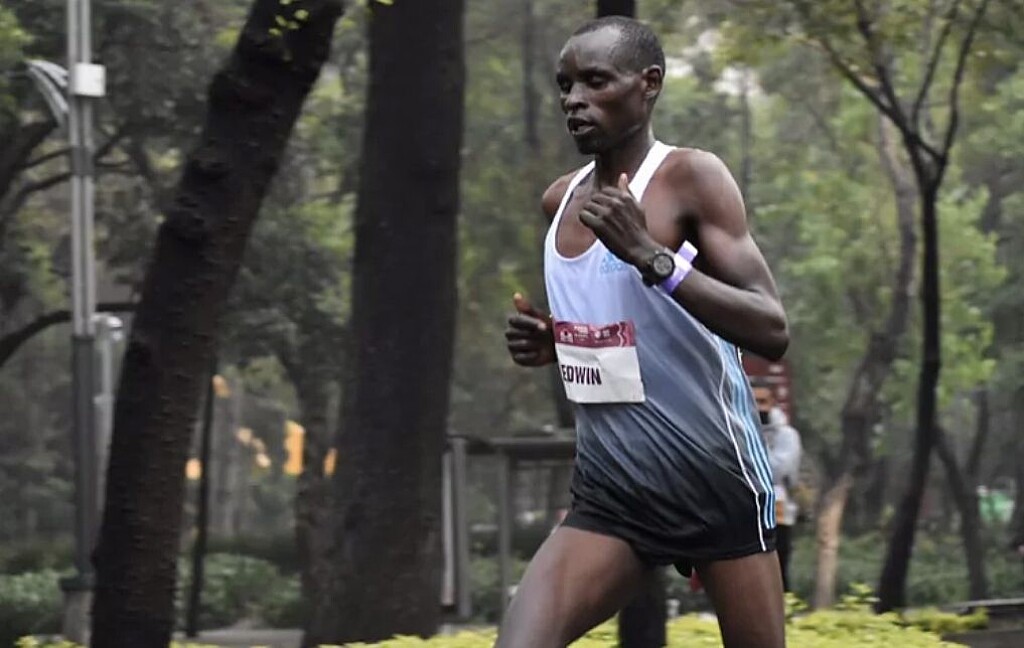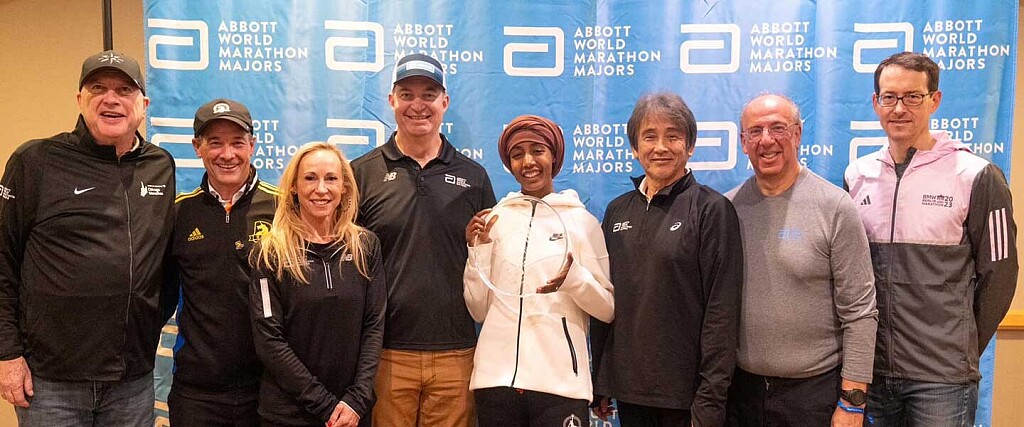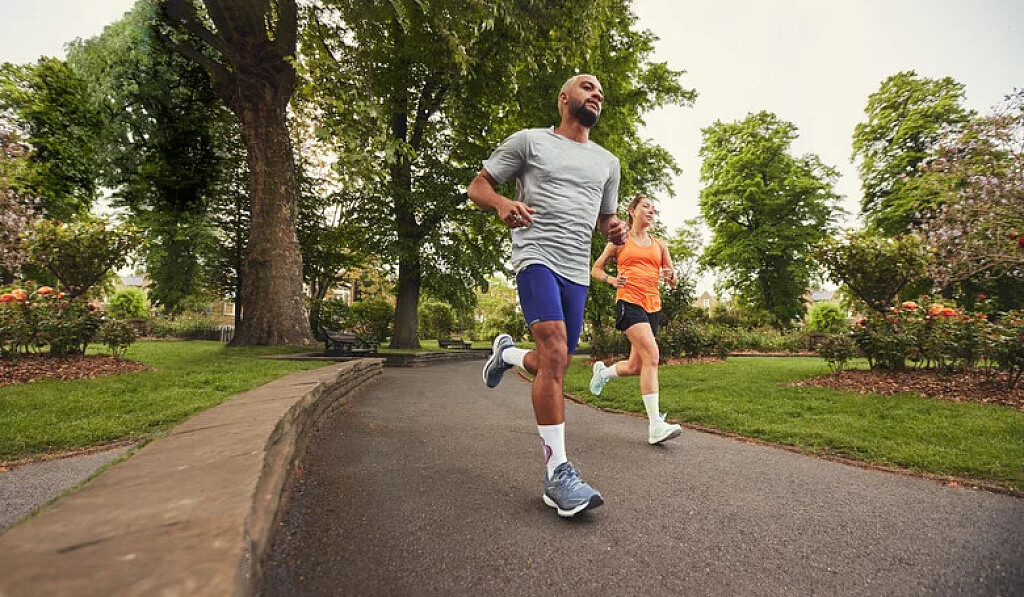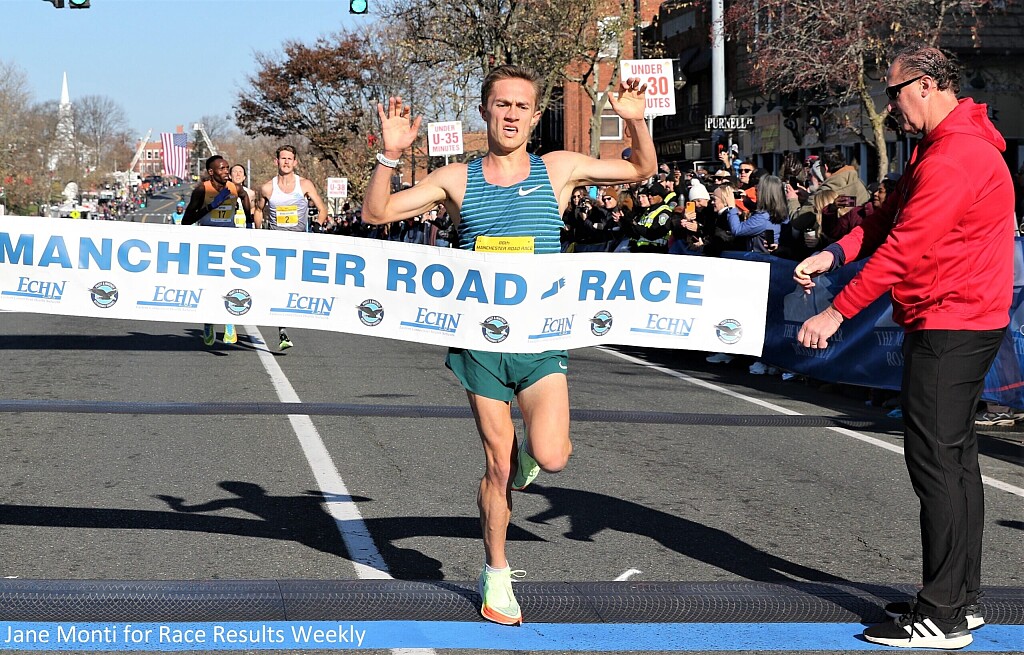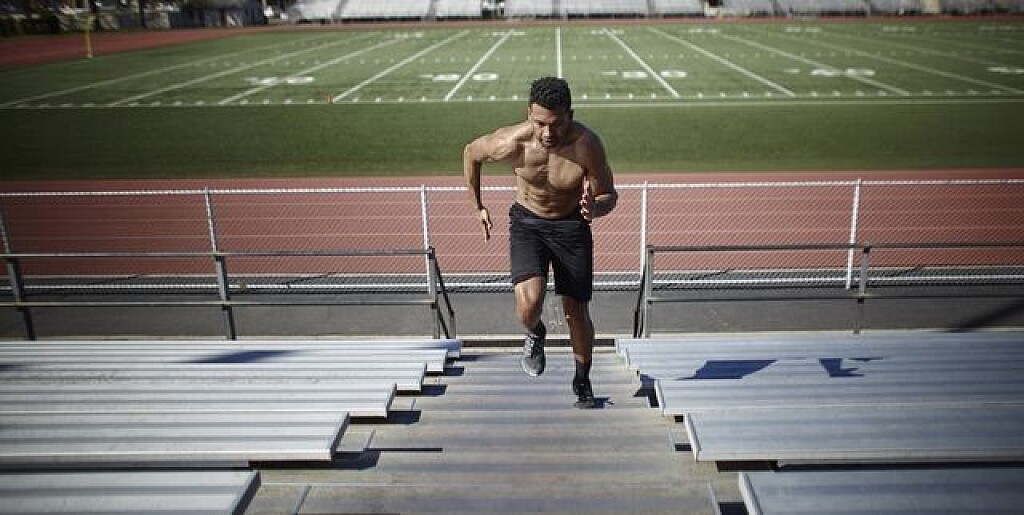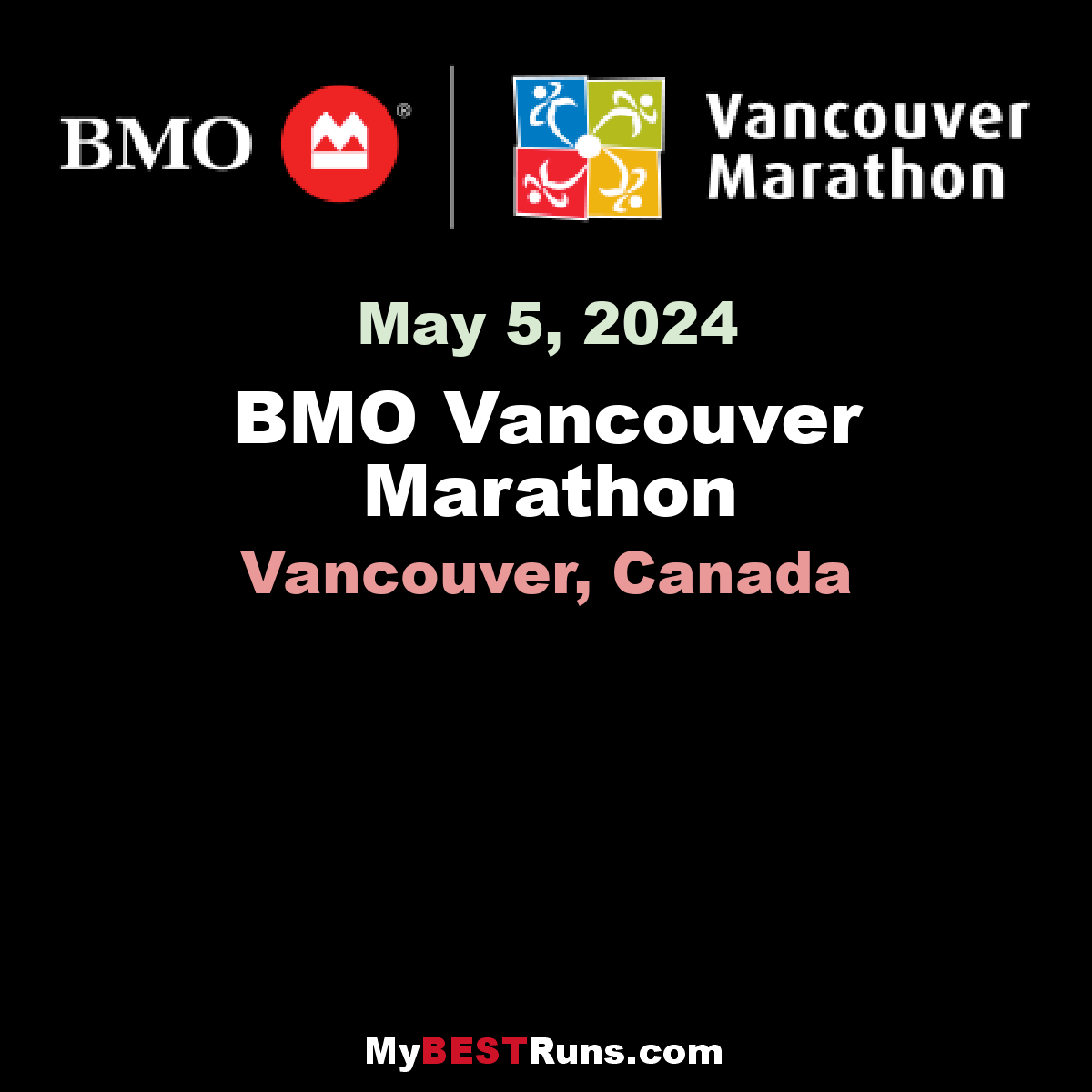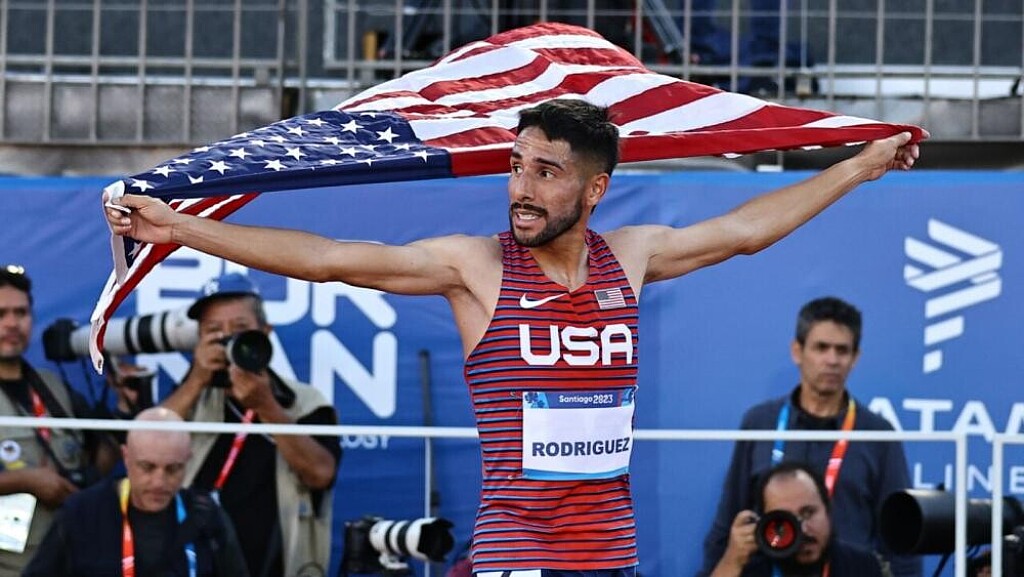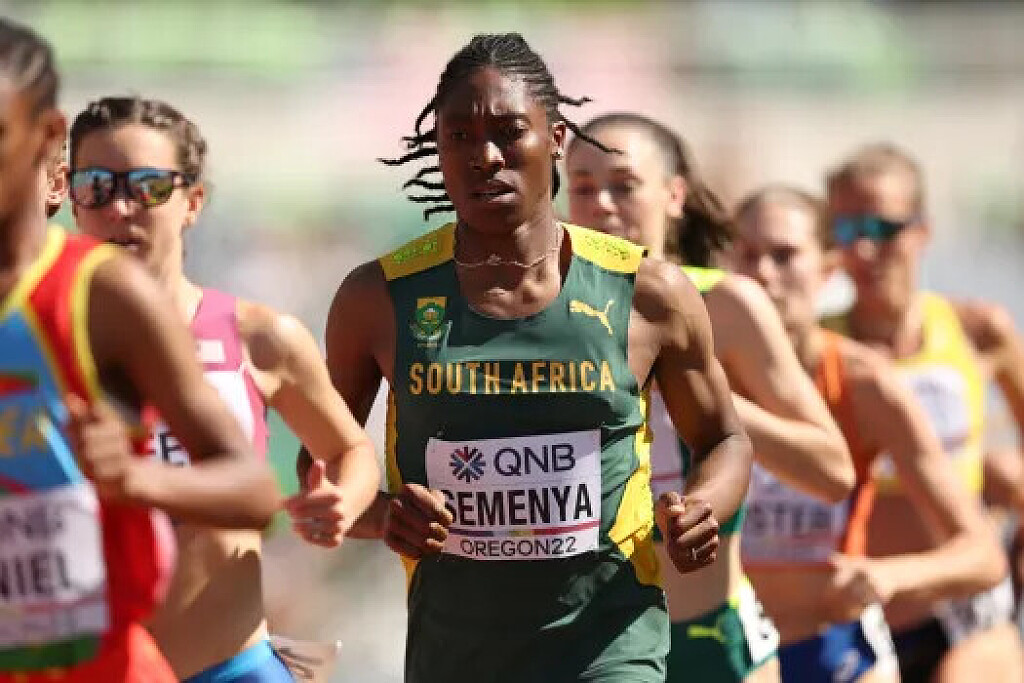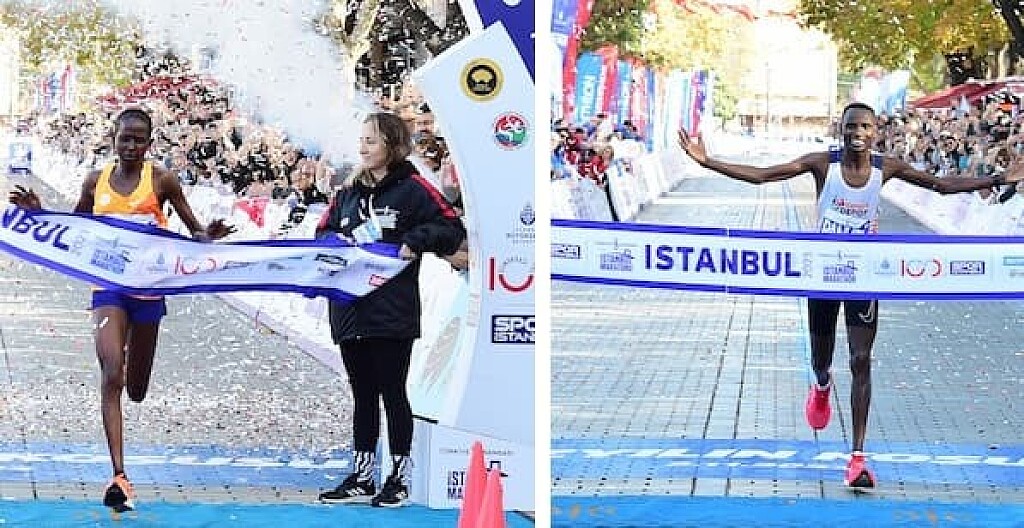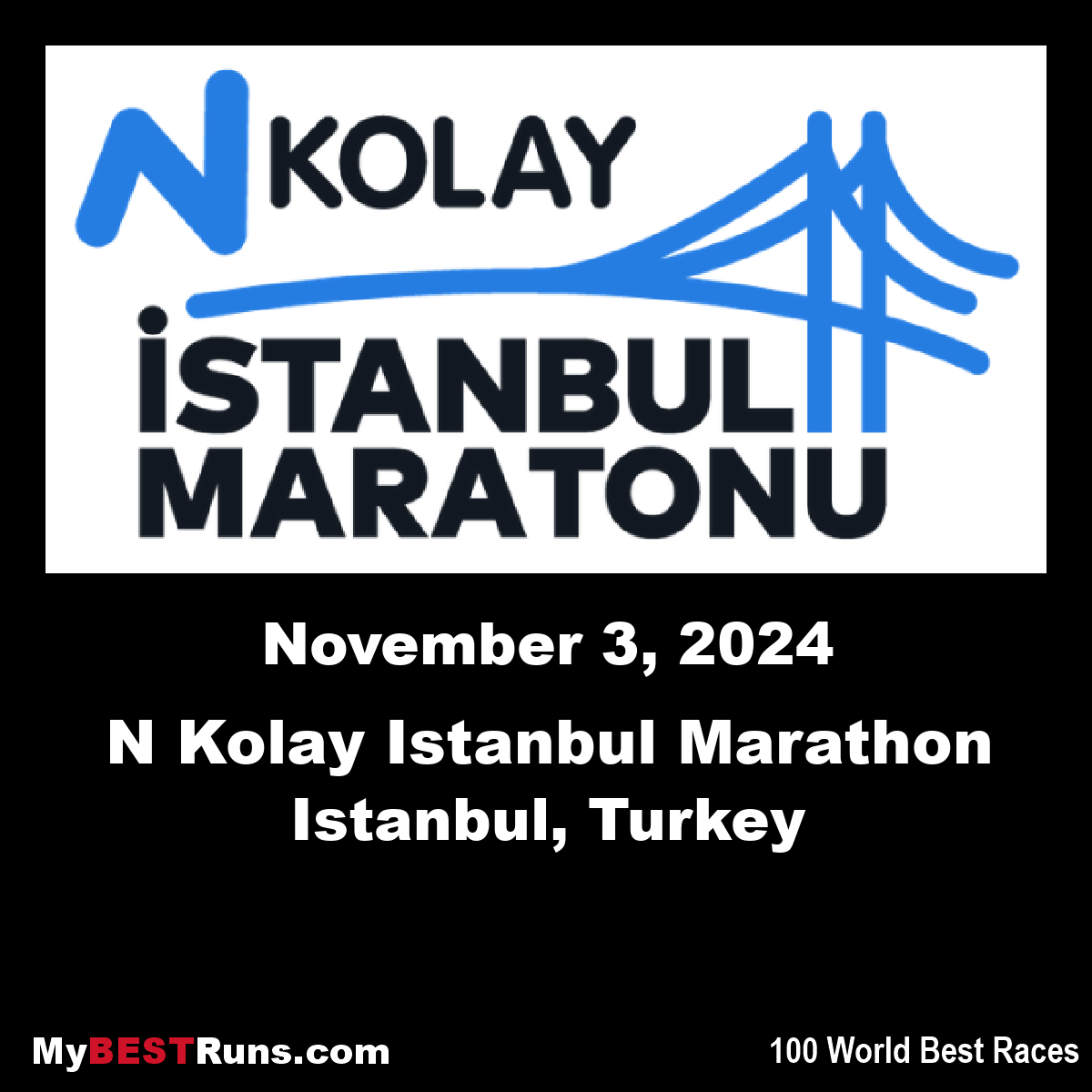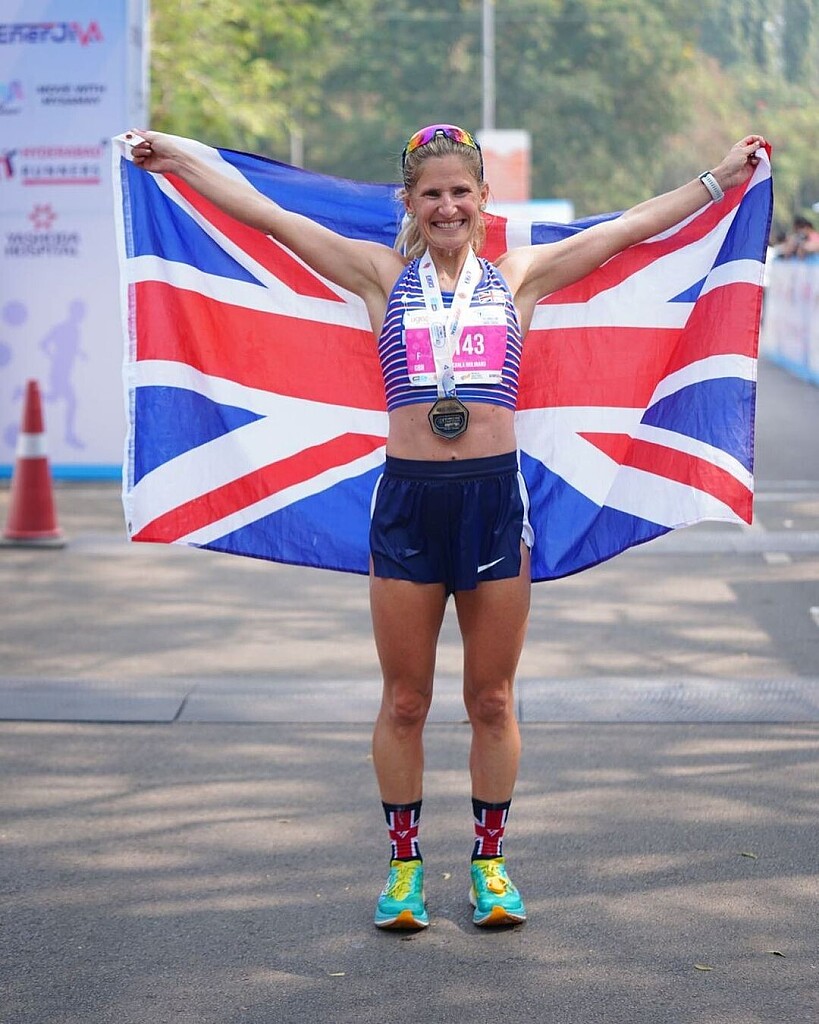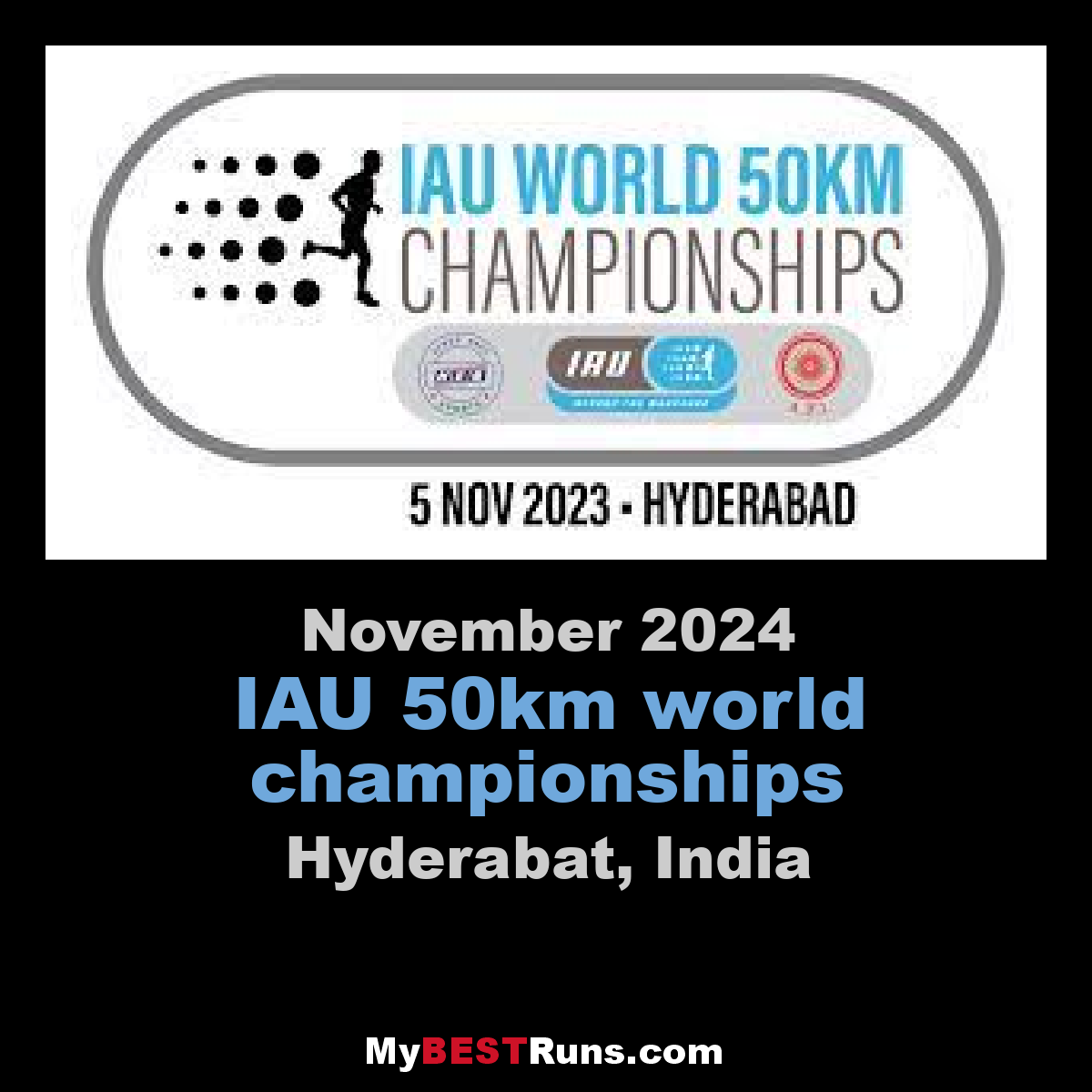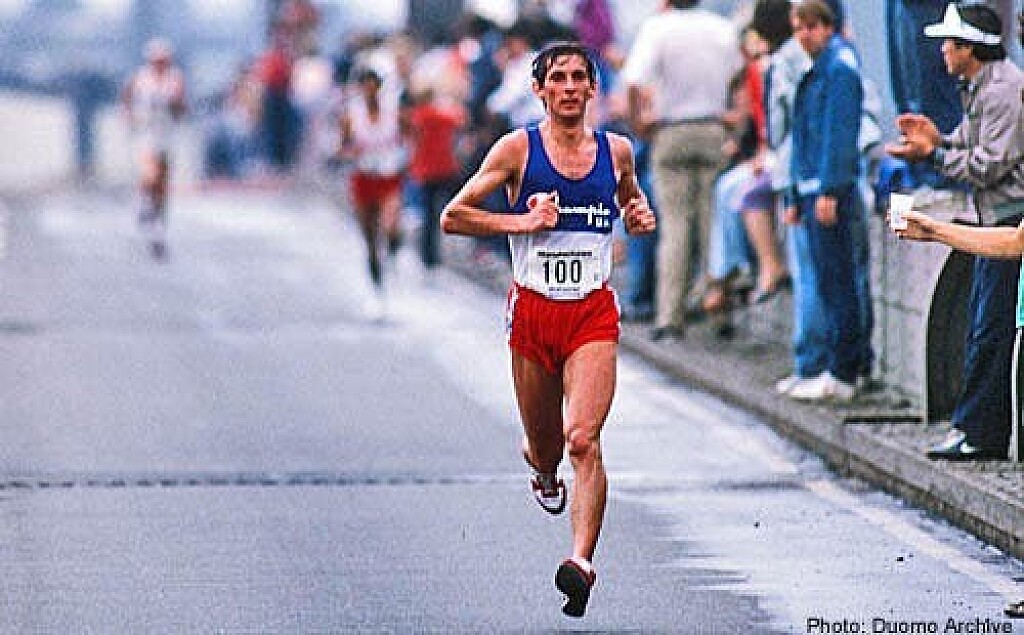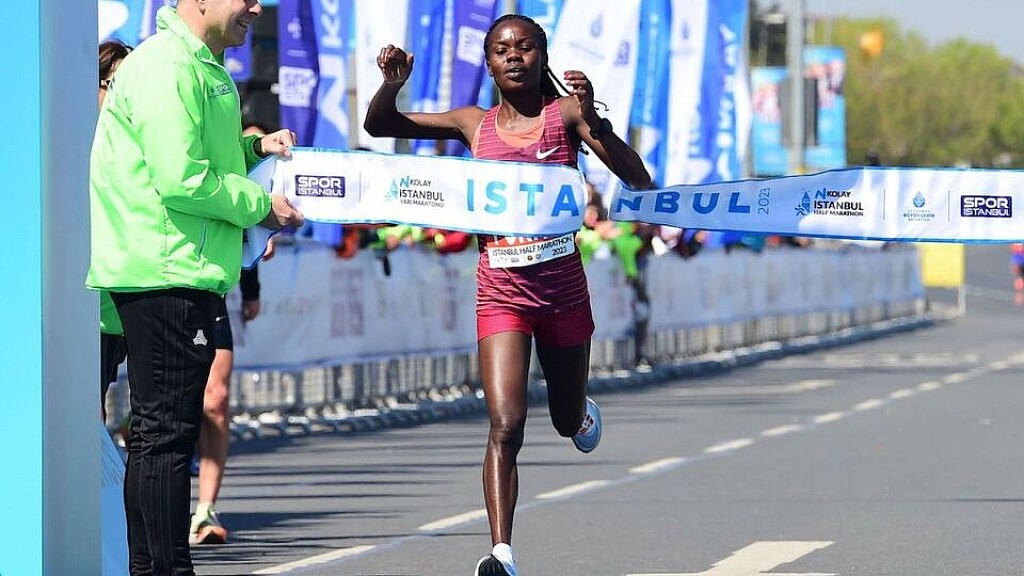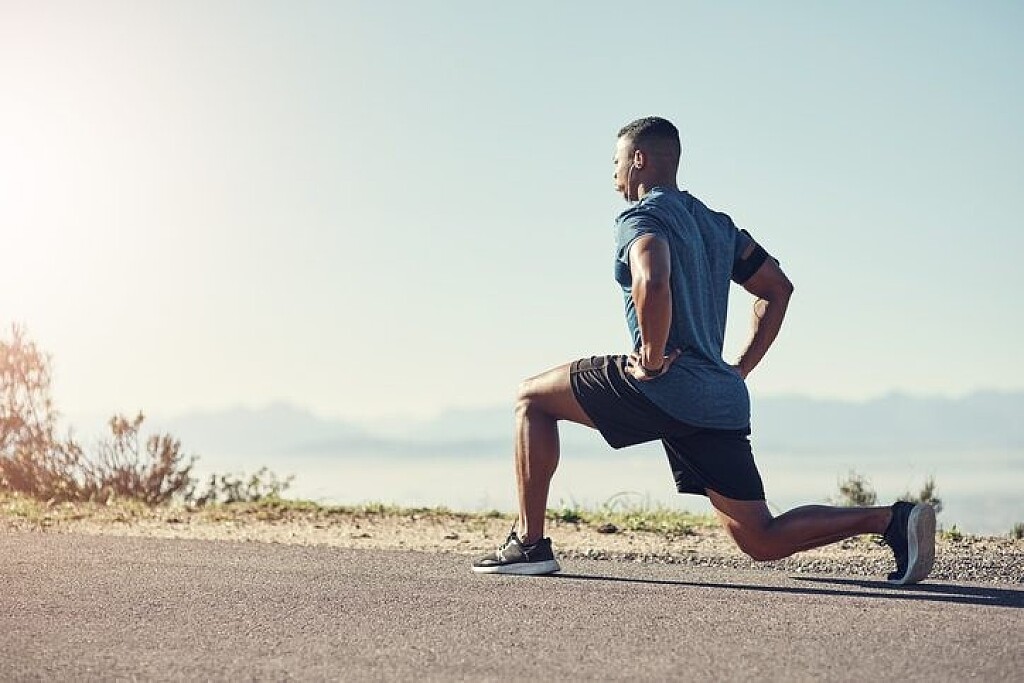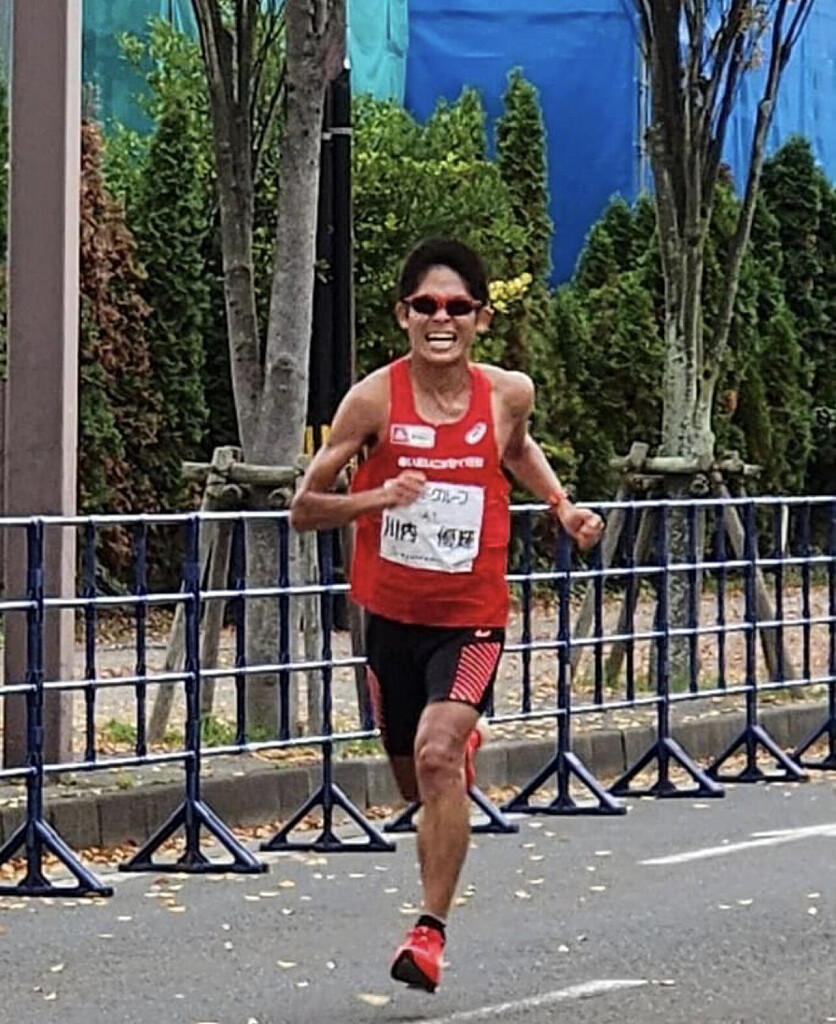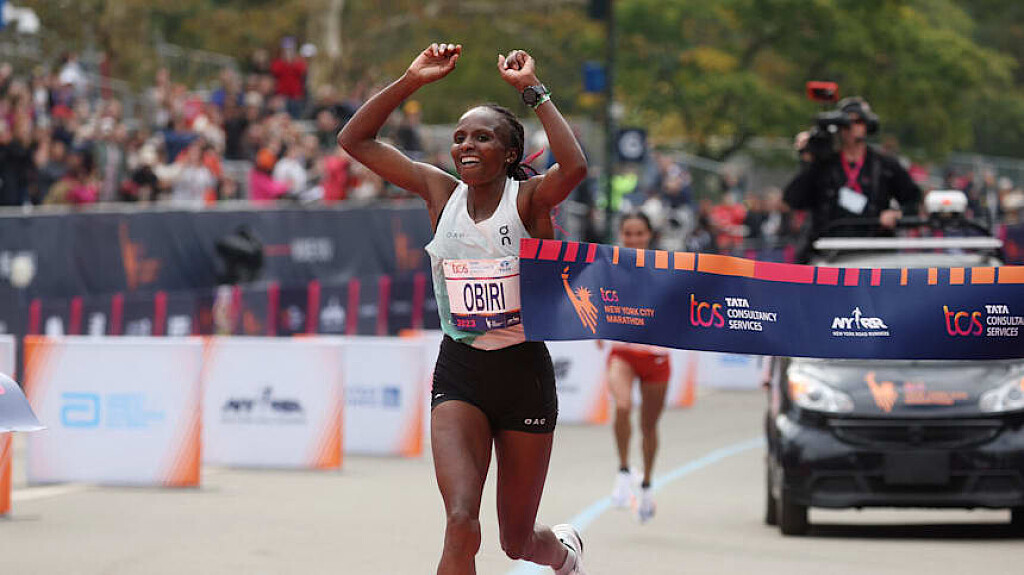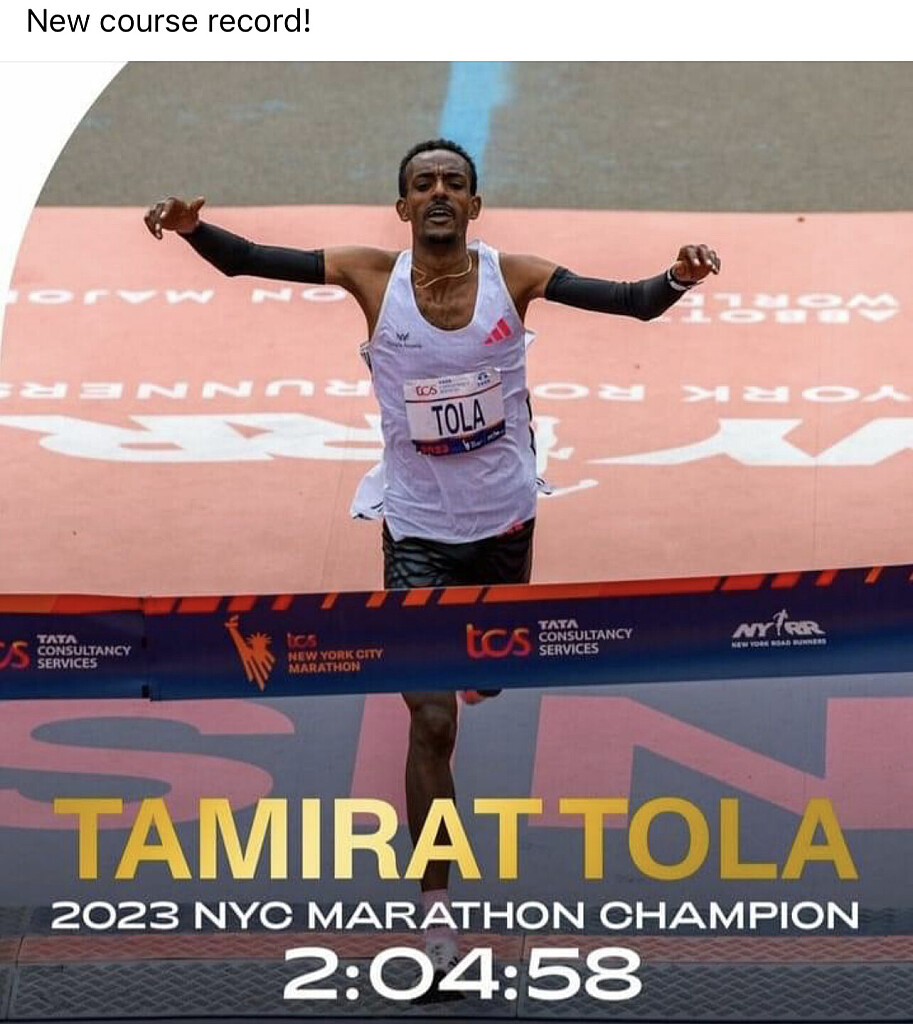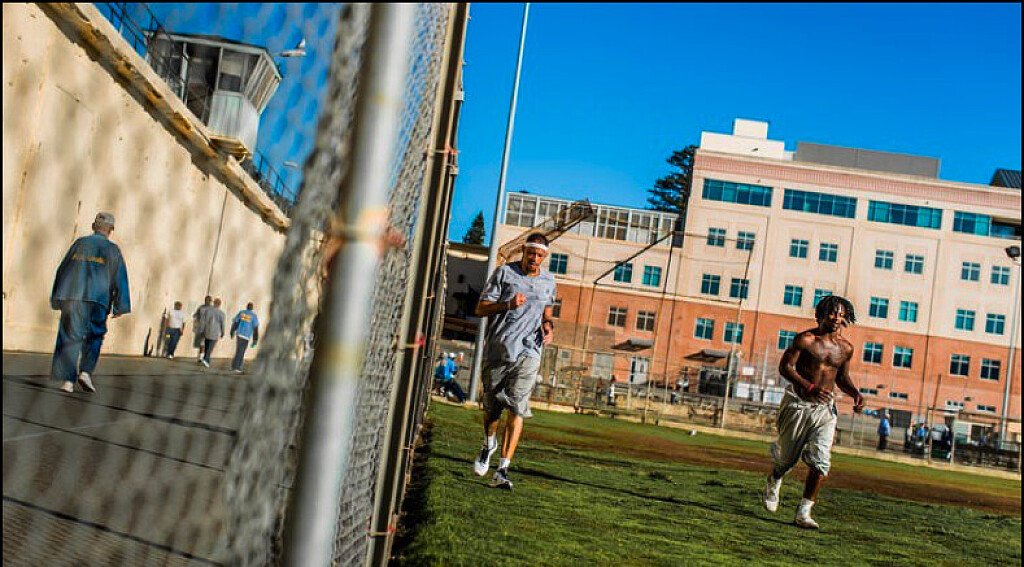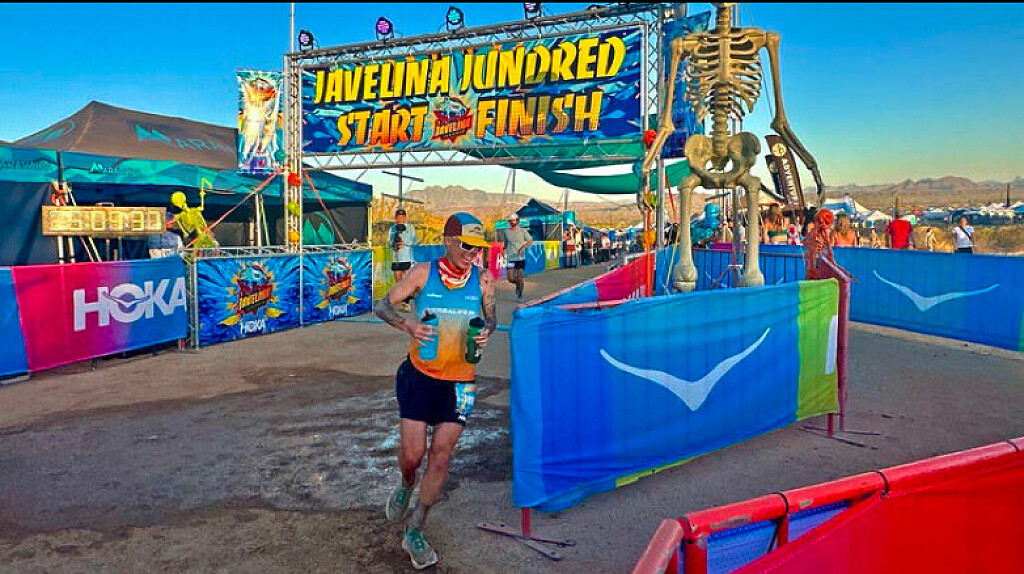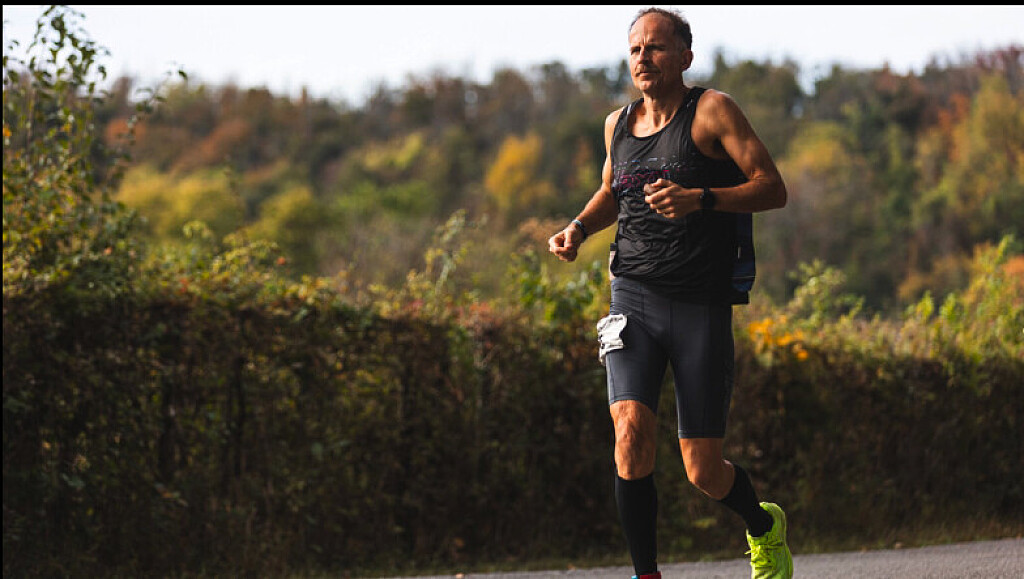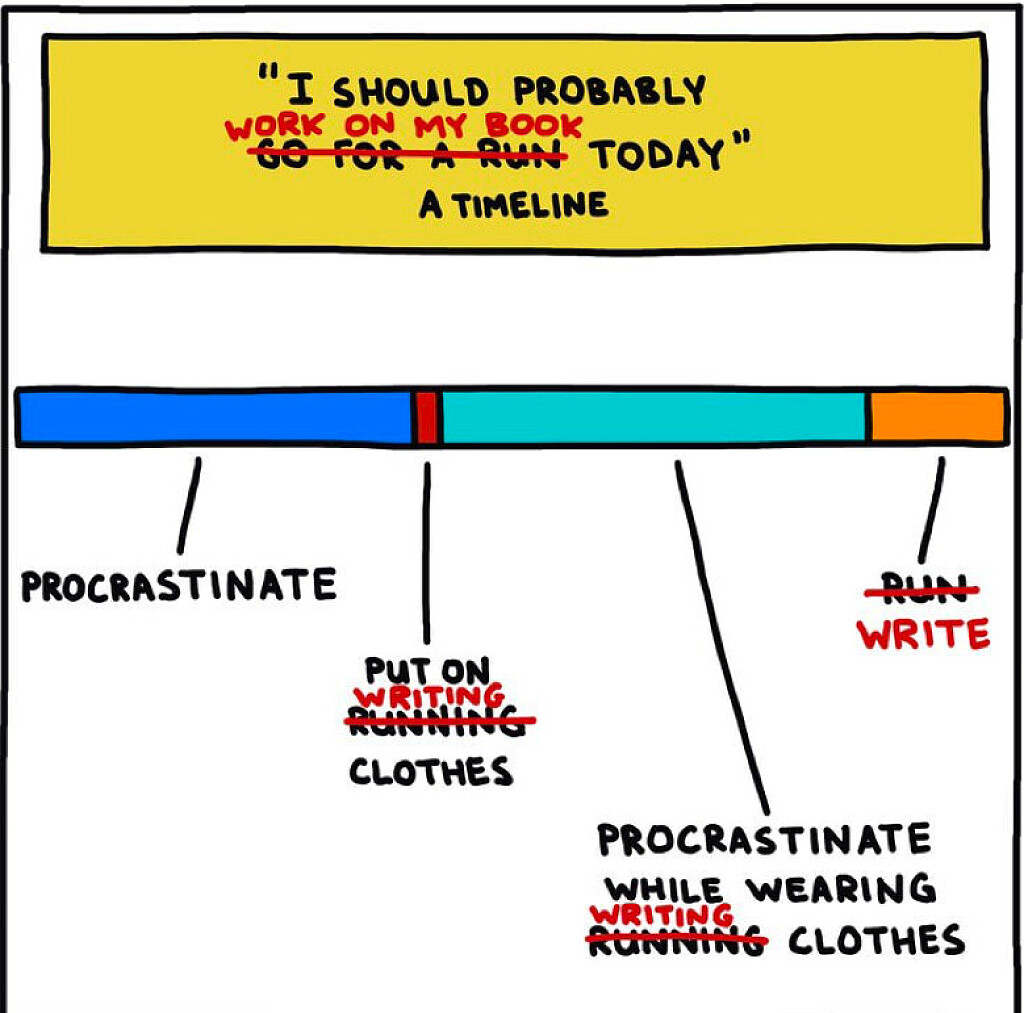Running News Daily
Running News Daily is edited by Bob Anderson. Send your news items to bob@mybestruns.com Advertising opportunities available. Train the Kenyan Way at KATA Kenya and Portugal owned and operated by Bob Anderson. Be sure to catch our movie A Long Run the movie KATA Running Camps and KATA Potato Farms - 31 now open in Kenya! https://kata.ke/
Index to Daily Posts · Sign Up For Updates · Run The World Feed
World Athletics unveils finalists for 2023 World Athlete of the Year
On Tuesday, the finalists for the 2023 World Athlete of the Year award were unveiled on World Athletics’ social media pages. This award showcases the remarkable performances of the 2023 season that captivated the track and field audience.
The 10 finalists, representing eight countries, have left their mark on the world of athletics. Their stellar accomplishments spanned various disciplines, from triumphs at the 2023 World Athletics Championships in Budapest to setting world records at one-day meeting circuits, road races and other prestigious events across the globe.
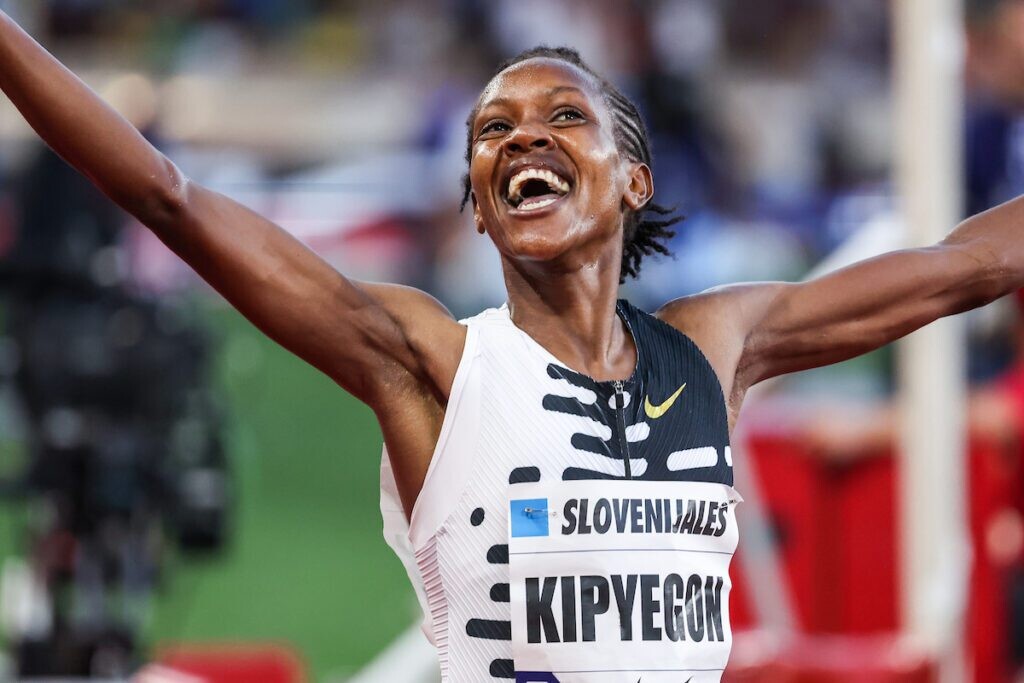
Here are the five male and five female finalists.
Male finalists:
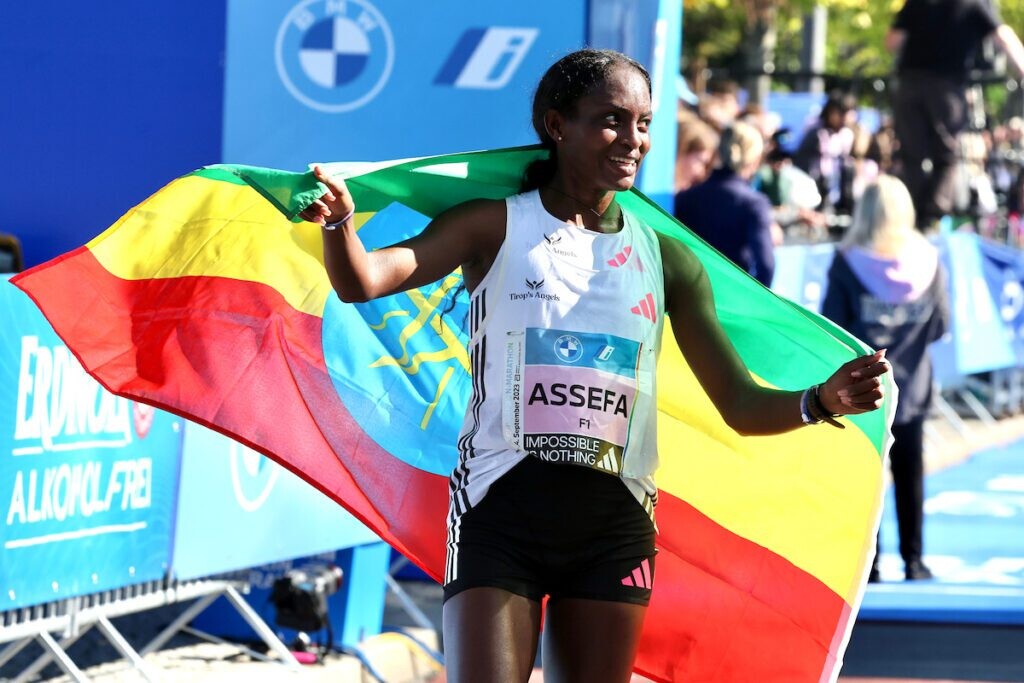
Neeraj Chopra (IND) – Javelin
World champion
Asian Games champion
Ryan Crouser (USA) – Shot Put
World champion
World record holder (23.56 meters)
Mondo Duplantis (SWE) – Pole Vault
World champion
Diamond League champion with a world record (6.23 meters)
Kelvin Kiptum (KEN) – Marathon
London and Chicago Marathon winner
Men’s marathon world record (2:00:35)
Noah Lyles (USA) – 100m/200m
World 100m and 200m champion (first man to win the double at worlds since 2015)
Undefeated in six finals at 200m
Female finalists:
Tigist Assefa (ETH) – Marathon
Berlin Marathon winner
Women’s marathon world record holder (2:11:53)
Femke Bol (NED) – 400m/400m hurdles
World 400m hurdles champion
World indoor 400m record holder (49.26 seconds)
Shericka Jackson (JAM) – 100m/200m
World 200m champion and 100m silver medalist
Diamond League 100m and 200m champion
Faith Kipyegon (KEN) – 1,500m/Mile/5,000m
World 1,500m and 5,000m champion
Set world records over 1,500m, mile and 5,000m (3:49.11/4:07.64/14:05.20)
Yulimar Rojas (VEN) – Triple Jump
World champion
Diamond League champion
The finalists were chosen through a three-way voting process involving the World Athletics Council, the World Athletics Family and track and field fans online. Fans had the opportunity to cast their votes online through World Athletics’ social media platforms, contributing to a record-breaking two million votes.
Canadian decathlon world champion Pierce LePage was one of the 11 nominees for the award but did not advance from the voting process. Voting concluded on October 28.
The World Athletes of the Year award will be named on Dec. 11, as part of the 2023 World Athletics Awards in Monaco.
(11/14/2023) ⚡AMPby Marley Dickinson
Edward Cheserek sheds light on why he made a switch to the full marathon
US-based Kenyan runner Edward Cheserek has explained why he made the switch to the full marathon after years of dominating the track.
Cheserek, a multiple NCAA champion, revealed that he had been running on the track for a long time and he was losing his speed.
He further noted that he made a switch to the roads and started with the shorter races but then eventually decided to make his debut. He debuted at the New York City Marathon where he finished eighth after clocking 2:11:07.
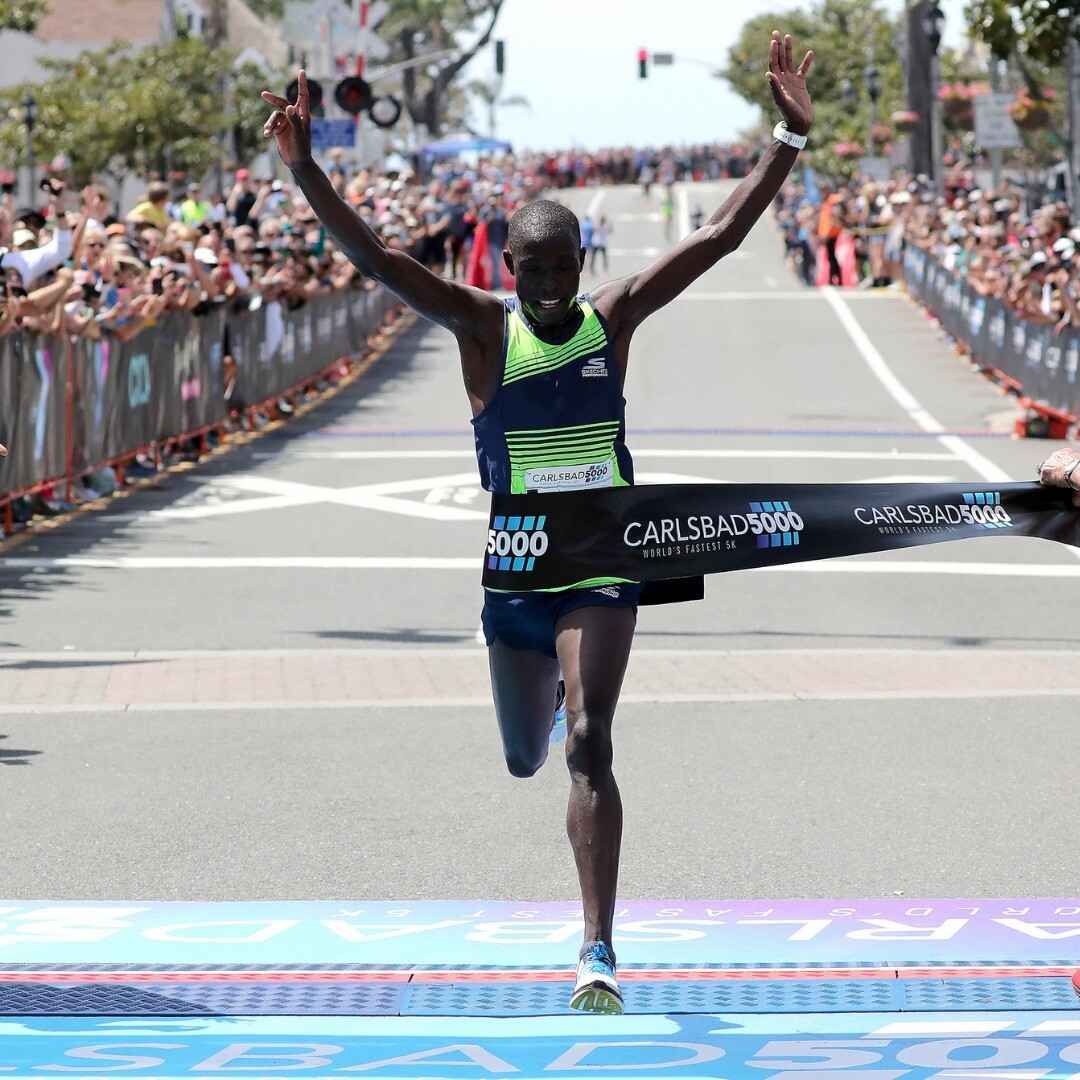
“I’ve been running on the track for a long time and I felt like I was losing my speed. I decided that it was the best option to slowly move back and switch to the roads," he explained.
"I started with the 5km and 10km and I noticed that I was running a bit slower…it wasn’t like back in the day when I used to run in the 800m and 5000m,”
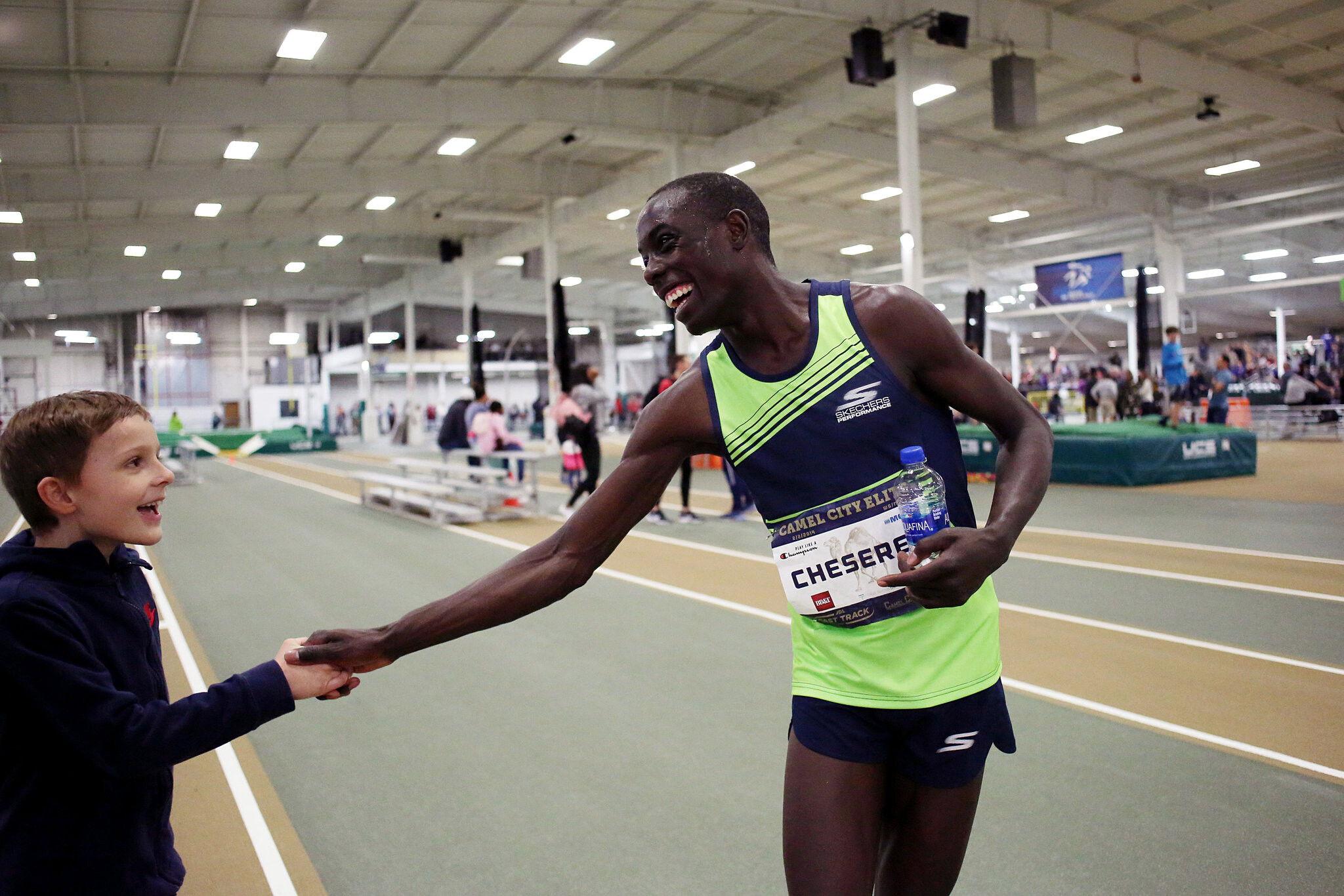
Cheserek added that he noticed the change back in 2019 and after the Covid-19 pandemic, he decided to try out road running. However, he explained that it was something normal and did not freak him out.
Meanwhile, Cheserek also made a revelation that his father was the one who convinced him to try out running. Before then, he was a football player.
“Back in the day, my father encouraged me to switch from football to running. However, I hated running but I decided to just give it a try,” he said.
(11/14/2023) ⚡AMPby Abigael Wuafula
TCS New York City Marathon
The first New York City Marathon, organized in 1970 by Fred Lebow and Vince Chiappetta, was held entirely in Central Park. Of 127 entrants, only 55 men finished; the sole female entrant dropped out due to illness. Winners were given inexpensive wristwatches and recycled baseball and bowling trophies. The entry fee was $1 and the total event budget...
more...Elaine Thompson splits with coach less than a year before Olympic Games
Jamaica's Elaine Thomspon has split with her coach Shanique Osbourne less than a year before the Paris Olympic Games.
As reported by Radio Jamaica Sports, Thompson’s agent Marvin Anderson could not be reached for comment and her coach, Osbourne declined to field questions when she answered her telephone late Monday night.
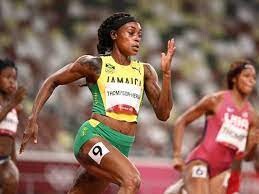
She only noted that she was not accepting any media to her training base. The specific reason for the split has not been disclosed, but speculation is that both parties could not agree on remuneration.
Meanwhile, Thompson had been struggling from an Achilles tendon injury, which saw her placing fifth in the 100m final with 11.06 seconds at the Jamaican Championship on July 7.

The Jamaican missed out on an individual slot at the World Championships in Budapest, Hungary, and did not even compete in the final of the 4x100m relay team.
After the World Championships, Thompson headed to the Diamond League Meeting in Zurich where she clocked 11.00 to finish third. She posted her first sub-11 performance at the Gala dei Castelli where she clocked 10.92 to win the race.
She then clocked 10.84 seconds at the Diamond League Meeting in Brussels on September 8, before ending the season with 10.79 seconds on September 16 at the Prefontaine Classic, the Diamond League Final Meeting.
(11/14/2023) ⚡AMPby Abigael Wuafula
Paris 2024 Olympic Games
For this historic event, the City of Light is thinking big! Visitors will be able to watch events at top sporting venues in Paris and the Paris region, as well as at emblematic monuments in the capital visited by several millions of tourists each year. The promise of exceptional moments to experience in an exceptional setting! A great way to...
more...Hellen Obiri explains why the New York City marathon course is tougher than Boston
Hellen Obiri has shared reasons why she thinks the New York City Marathon course is more difficult than the Boston Marathon course.
Reigning New York City Marathon champion Hellen Obiri has admitted that the New York City Marathon is the toughest course she has competed on since making her debut over the full marathon.
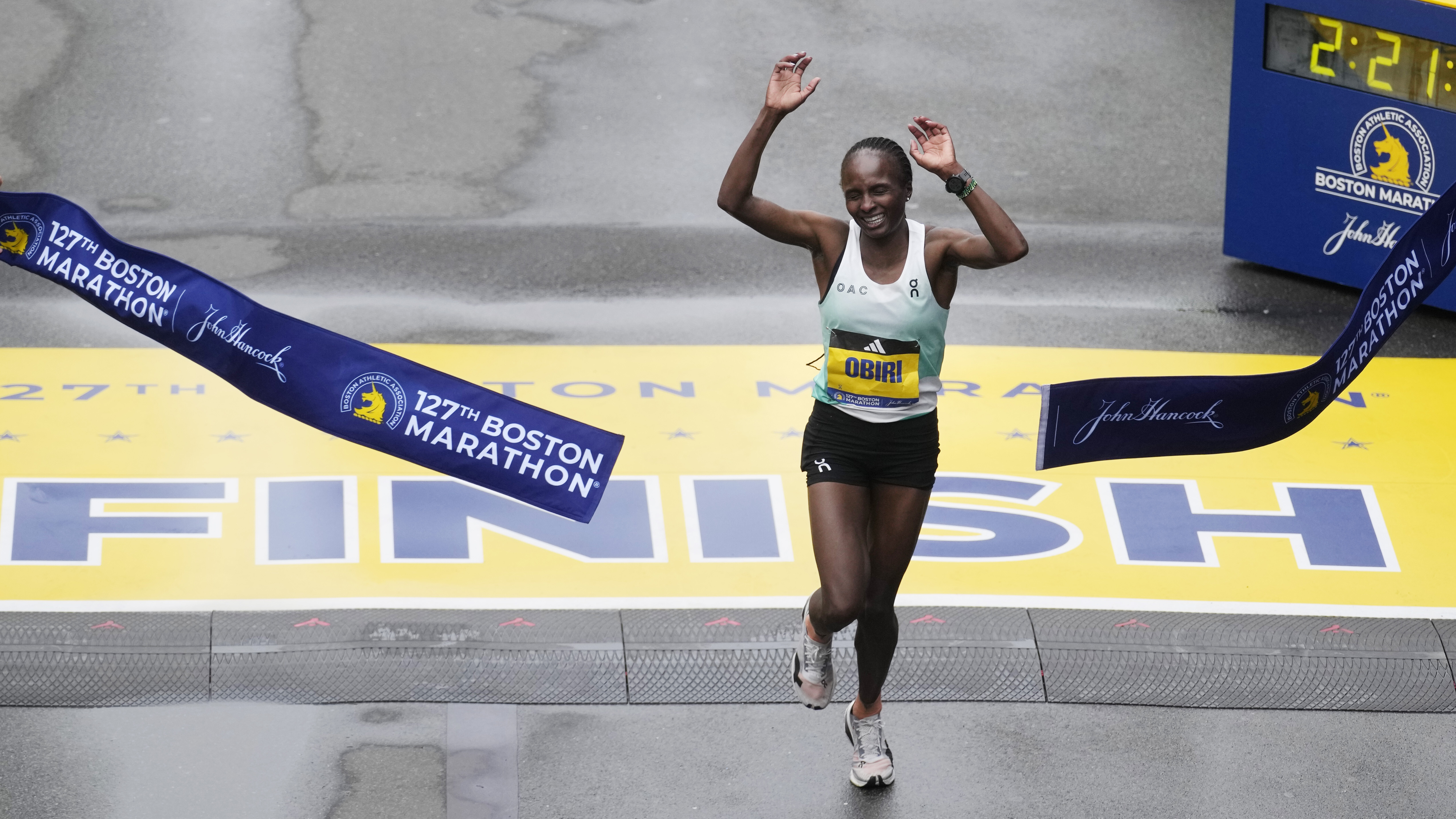
Obiri made her debut last year in the streets of New York City, and managed a sixth-place finish, clocking a Personal Best time of 2:25:49.
This year, she opened her season with a dominant win at the Boston Marathon, clocking 2:21:38 to cross the finish line.
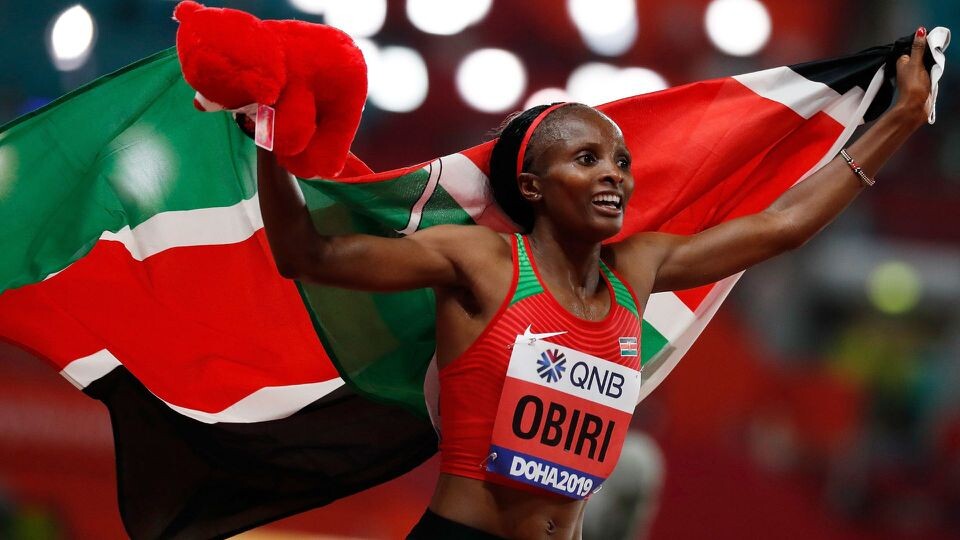
However, her time will not be recognized by World Athletics as a credible Personal Best time since the Boston course does not meet the rules of a standardized course by World Athletics.
Obiri then returned to the Big Apple and this time around, she clinched a win, in what seemed to be a very easy run for her.
The World 10,000m silver medalist clocked 2:27:23 to cut the tape. However, she has insisted that the course is a bit more difficult than the one in Boston.
“The New York course is harder than Boston…when you reach Central Park, there are a lot of hills and valleys unlike Boston where it was a bit flat towards the end,” Obiri said.
The two-time World 5000m champion added that she was competing in the streets of New York City to just win the race and not break any record because of the nature of the course.
(11/13/2023) ⚡AMPby Abigael Wuafula
TCS New York City Marathon
The first New York City Marathon, organized in 1970 by Fred Lebow and Vince Chiappetta, was held entirely in Central Park. Of 127 entrants, only 55 men finished; the sole female entrant dropped out due to illness. Winners were given inexpensive wristwatches and recycled baseball and bowling trophies. The entry fee was $1 and the total event budget...
more...Kenya's Edwin Kiptoo wins 40th Athens Marathon with new course record
Edwin Kiptoo of Kenya set a new course record at the 40th Athens Marathon in 2:10:34 on Sunday, slicing three seconds off of the previous record of 2:10:37 set by fellow Kenyan Felix Kipchirchir Kandie in 2014.
"I was not well prepared for the race. I did not expect to break the record. I thank my family for giving me ample time to prepare for this marathon," said the 30-year-old who shook off his main challengers over the second half of the course and ran the last 10 kilometers alone.

Kiptoo's compatriots Rhonzai Lokitam Kilimo and Felicien Muhitira of Rwanda finished second and third in the men's event. Moroccan Soukaina Atanane finished first in the women's category in 2:31:52, followed by Kenya's Caroline Jepchirchir and local Gloria Privileggio.
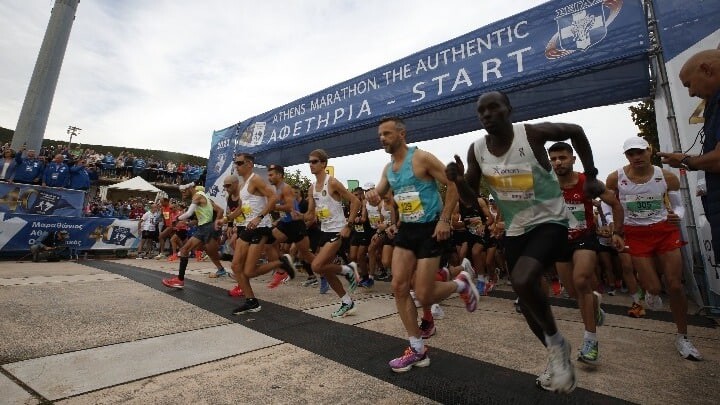
The event attracted some 70,000 runners from 140 countries and regions in the 42km course, as well as the 10km, 5km and kids' races, setting a record high of participants, according to the Hellenic Athletics Federation. The 42km classic course from Marathon city to Athens follows in the footsteps of ancient soldier Pheidippides who inspired the race.
The Athens Marathon has a relatively hilly route, which somehow makes it almost impossible for runners to set a world record here, with the course rising almost continuously between the 17th and 32nd kilometers before descending most of the rest of the way.
(11/13/2023) ⚡AMPAthens Marathon
The Athens Classic (authentic) Marathon is an annual marathon road race held in Athens, Greece, normally in early November. The race attracted 43.000 competitors in 2015 of which 16.000 were for the 42.195 km course, both numbers being an all-time record for the event. The rest of the runners competed in the concurrent 5 and 10 kilometers road races and...
more...You shouldn’t try to make up a missed workout–here’s why
It can be challenging to fit consistent running along with a busy life, and sometimes you may have to miss a scheduled run, or several. The nagging guilt when your running plans go awry can be insidious, but don’t let it tempt you into cramming the missed runs back into your schedule. You risk injury, overtraining and burnout. Here’s what you need to know about missing some scheduled training.
Don’t overload to compensate

Just don’t do it. It can be incredibly tempting to try to “make up” your missed workouts by doubling up on time and effort. Most runners already don’t focus enough on rest, and a few extra recovery days will not only not cause a huge setback in your training–you might just find that you feel stronger because of it.
Training plans are designed to be dynamic and adaptable, even though many runners feel like they are set in stone. If you miss a specific workout, it doesn’t mean that progress is lost. Tweaking your future workouts to accommodate the missed session (adjusting the actual running that is scheduled, ie. shifting your plan back a week if you can) can be more beneficial than trying to cram in extra training. If you are really concerned, talk to an experienced runner or coach to help you adjust your training. Just don’t squeeze more running in-adding more stress to an already overwhelmed schedule is a recipe for disaster.

Adjust your mindset
Running is all about the long game. While at the time, missing a few workouts may seem like a setback, in the long run, a bit of extra rest is probably the exact thing your body and mind need. Our bodies don’t differentiate between physical and mental stress, and it’s likely that whatever derailed your training has some form and amount of added stress.
Know that the break you are taking now, while perhaps uncomfortable, will likely be beneficial to you in the long run, and at the very least not detrimental. After all, you probably want to run for years and decades to come. Learning how to successfully navigate challenging times and missed workouts will become one more tool for you to boost your running longevity.
Reflect and move forward
Let that sh*t go, as they say. Recognize that you are doing the best that you can with the skills and supports available to you, even if that doesn’t look the way you’d like it to. Dwelling on what you’ve missed or worrying about lost fitness may actually set you back, as it contributes to burnout.
What can be useful is to look at why, exactly, you missed your workout (s). Were you sick, or were you simply not wanting to run? (Either reason is a valid one, you’re aiming to have no self-judgment here.) Maybe you were dealing with unexpected family or work stress–these challenges happen to everyone, even the pros, who also, you guessed it–occasionally can’t fit in planned runs.
Looking to the future, can you plan to give yourself more grace and cope more easily through the inevitable challenging times that life throws at us? Maybe there is a plan you can have in place to adjust your training temporarily to accommodate a different schedule, like hitting up a local 24-hour gym for a few sessions (if you must–missing workouts is normal and OK) or simply heading out for shorter runs just to get that healthy physical and mental boost. Make sure that you aren’t overdoing it–the most important thing to remember is that a few missed running days are not worth stressing over.
(11/13/2023) ⚡AMPby Keeley Milne
Edinah Jebitok and Ronald Kwemoi reign in Seville
Edinah Jebitok and Ronald Kwemoi achieved a Kenyan double at the Cross Internacional de Italica, the fourth World Athletics Cross Country Tour Gold meeting of the season, held on the outskirts of Seville on Sunday (12).
Making their debuts at the event, Jebitok and Kwemoi claimed the titles on a sunny and pleasant afternoon after respective sprint finishes against Ethiopia's world U20 champion Senayet Getachew and Kenya's Hillary Chepkwony.
In the absence of pre-race favourite Beatrice Chebet, who withdrew on the eve of the event because of illness, the women's 9918m contest opened at a brisk pace set by Jebitok, who only had her compatriot Winnie Jemutai, Ethiopians Getachew and Wede Kefale, and Uganda's Annet Chelangat for company just one minute into the race. Way back, Britain's Amelia Quirk, Kate Axford and Phoebe Barker led the chasing group alongside Spain's European U20 champion Maria Forero and her compatriot Carolina Robles.
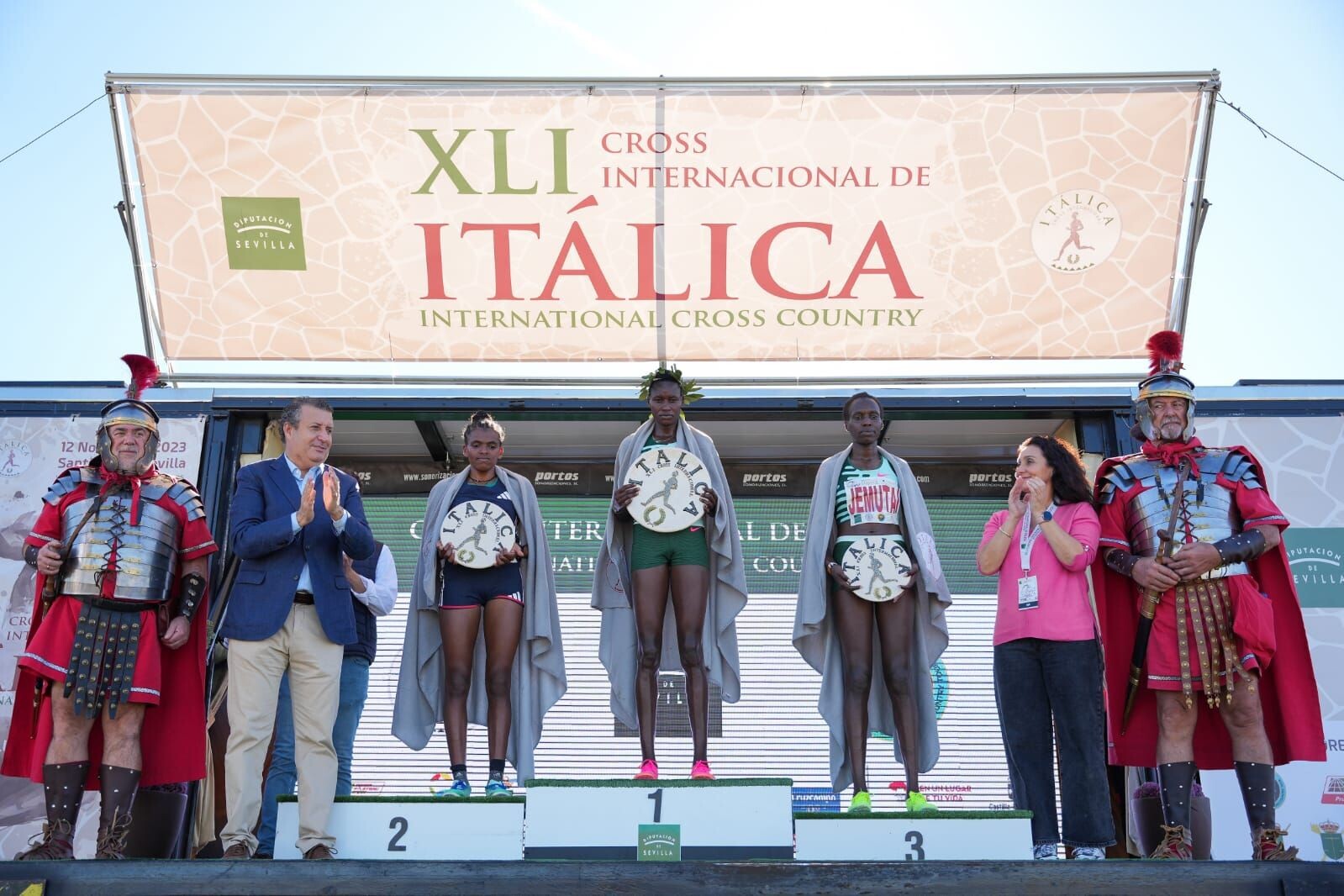
Jebitok broke away from the rest of the lead group at the start of the second 2450m circuit and built a five-second margin over Getachew midway through that lap. Getachew was another four seconds clear of Jemutai and gradually she reeled in Jebitok, until they were running together at the helm midway through the race. Jemutai was a lonesome third, while Kefale and Chelangat were further back. Behind them, Quirk and Forero took turns leading their group, followed by Robles and Axford.
Throughout the penultimate loop, Jebitok and Getachew tried to lose each other but neither managed to do so. By the bell, the pair had built a 20-second margin ahead of Jemutai, while Forero and Quirk were in sixth and seventh place, and would fight to be the first European home.
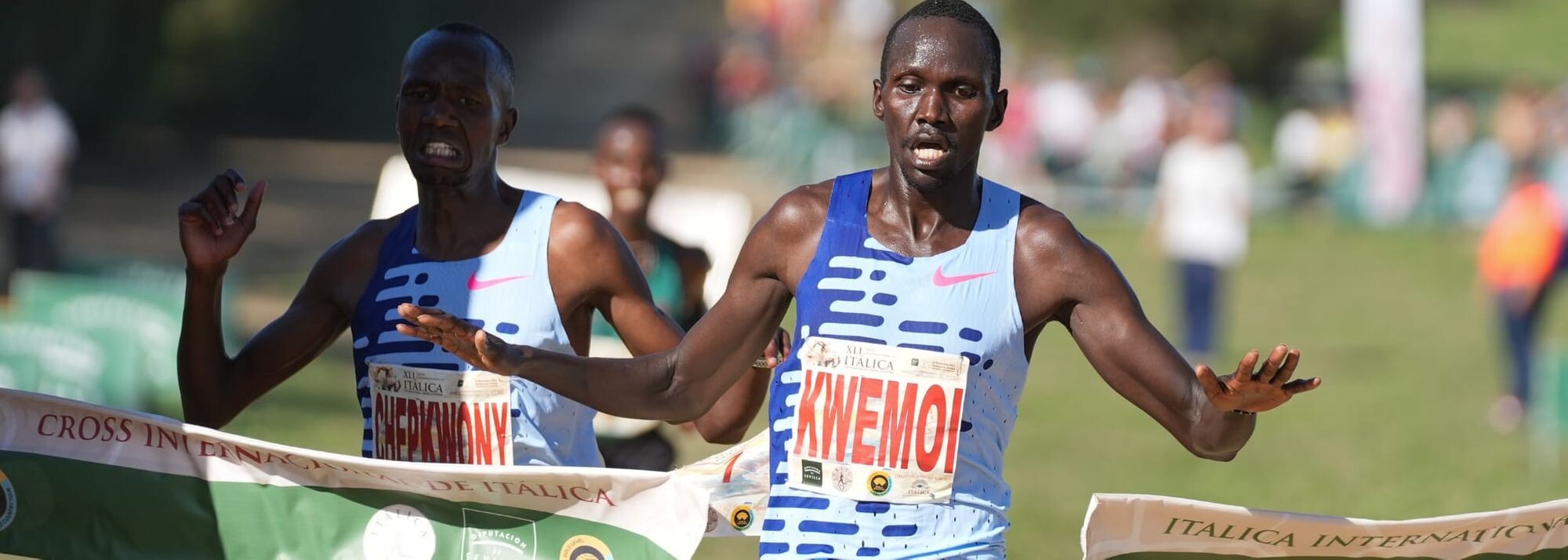
Already on the closing lap with the clock reading 25:40, Jebitok unleashed another kick and was able to leave Getachew behind for the second time, opening a six-second margin with 1000m remaining. Much to the delight of the large crowd watching, the Ethiopian bounced back and passed Jebitok with some 500m remaining. Jebitok then found another gear and reached the narrow final bend a few metres ahead, but to the astonishment of the crowd she stopped in the belief that she had crossed the finish line.
Getachew took advantage and overtook her, entering the home straight in the lead, but Jebitok – a 1500m specialist – didn't surrender and passed her rival in the final metre to win by the narrowest of margins. Both athletes were credited with a finishing time of 32:39, well clear of Jemutai who was third in 33:37. Chelangat was fourth and Kefale fifth, while 20-year-old Forero got the better of Quirk to secure sixth.
“I'm so satisfied with my European tour as I have won twice and was runner-up in Atapuerca,” said Jebitok. “My main goal is to be the overall victor of this season's Cross Country Tour.”
Kwemoi maintains momentum
The men's race was also held over 9918m and witnessed an early lead by the in-form Kwemoi, as the 28-year-old – who set the world U20 1500m record in 2014 – set a brisk pace that could only be followed by his compatriots Chepkwony and Ishmael Kipkurui, the world U20 champion, plus Burundi's Rodrigue Kwizera and Uganda's Martin Kiprotich. The opening lap was covered in 7:07, with the lead group also featuring the Spanish pair of world 5000m silver medallist Mo Katir and Abdessamad Oukhelfen, the 2019 European U23 cross country bronze medallist.
Clocking 7:17 for the second lap, Kiprotich, Kwemoi and Kwizera took on most of the pacing duties and Kipkurui and Chepkwony tucked behind. Some 6.7km into the race first Oukhelfen and then Katir could not live with the increasingly quick lead pace and lost ground. By the bell (7:13 for the penultimate lap), five men remained in contention while Katir and Oukhelfen travelled five and seven seconds in arrears, respectively.
The closing lap became more than thrilling as Kwizera pushed hard, trying to avoid a massive sprint, but the Burundian’s efforts only managed to leave Kiprotich behind, while Kwemoi, Kipkurui and Chepkwony, who ran conservatively always at the back of the main group, remained at Kwizera's shoulder.
The next casualty was Kipkurui and the race turned into a fascinating three-horse battle. Chepkwony moved to the front for the first time with around 500m remaining and his change of speed could not be replicated by Kwizera. Chepkwony reached the final bend still ahead of Kwemoi, but the latter finally prevailed after an epic battle for the win.
(11/13/2023) ⚡AMPby World Athletics
Cross internacional de Italica
The Cross Internacional de Itálica is an annual cross country running competition it will be held on 21st of November in Santiponce, near Seville, Spain. Inaugurated in 1982, the race course is set in the ruins of the ancient Roman city of Italica. As one of only two Spanish competitions to hold IAAF permit meeting status, it is one of...
more...Lisbon Half Marathon postponed
The 33rd edition of the Lisbon Half Marathon has been postponed by one week, from the 10th to the 17th of March, due to the call for legislative elections, following the dissolution of the Assembly of the Republic, announced today the organisation.
“In view of the decision of the President of the Republic, communicated on 9 November, to call legislative elections for March 10, 2024, the Maratona Clube de Portugal is forced to postpone the EDP Half Marathon of Lisbon and Vodafone 10K for one week, for March 17, 2024”, reads the statement from the organising club.
The Lisbon Half Marathon is one of the world's main distance races, holding the world record since 2021 when Ugandan Jacob Kiplimo completed it in 57.31 minutes, but it is also a relevant popular race, allowing approximately 30 thousand people to cross the April 25th Bridge, among participants in this race or in the mini-marathon.
Also according to Maratona Clube de Portugal, Saturday's races are also postponed to the following week, to 16 March, and registrations made are automatically transferred to the new dates.
“We regret in advance all the inconveniences that this change may cause to athletes already registered, and we ask for everyone's understanding in the face of this situation with which we were faced and to which we are unaware”, explained Carlos Moia, president of Maratona Clube de Portugal.
Contacted by Lusa, the organisation said it already had around 15,000 registered for the various distances of the race.
However, it will postpone the publication of the dissolution decree, allowing the final global vote on the State Budget for 2024, scheduled for 29 November, which is guaranteed approval due to the absolute majority of the PS.
(11/13/2023) ⚡AMPby The Portugal News
EDP HALF MARATHON OF LISBON
EDP Lisbon Half Marathonis an annual internationalhalf marathoncompetition which is contested every March inLisbon,Portugal. It carries World Athletics Gold Label Road Racestatus. The men's course record of 57:31 was set byJacob Kiplimoin 2021, which was the world record at the time. Kenyanrunners have been very successful in the competition, accounting for over half of the total winners, withTegla Loroupetaking the...
more...Ethiopians sweep women's B.A.A. Half Marathon, Kenyan wins men's race
The 2023 B.A.A. Half Marathon presented by Dana-Farber Cancer Institute and the Jimmy Fund took place today, November 12, starting and finishing within Boston’s Franklin Park. Personal bests and fast times were achieved on a chilly fall day. Preliminary results can be found here.
In the professional open divisions, Fotyen Tesfay (Ethiopia) and Abel Kipchumba(Kenya) took home the women’s and men’s titles respectively, while Jenna Fesemyer and Hermin Garic, both of the USA, captured the wheelchair division victories. American Paralympian Liz Willisset a world record in the T61-64 division (lower limb impairment) in a time of 1:45:19. Among today’s finishers were more than 600 athletes representing the Dana-Farber Cancer Institute and Jimmy Fund, raising more than $700,000 to defy cancer.
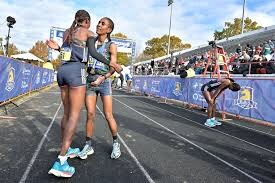
Warming up through the early miles, Tesfay and a sizeable lead pack passed 5 miles in 27:10 and 10 miles in 53:17. The race began to intensify as Tesfay, American record holder Keira D’Amato, B.A.A. 5K champion Senbere Teferi, and World Cross Country Championships silver medalist Tsigie Gebreselama covered the hilly course along Boston’s Emerald Necklace Park System.
While it was a pack with 5K to go, Tesfay was all alone entering White Stadium, breaking the tape in 1:08:46. In her Boston debut, Tesfay not only conquered the competition but also the cold temperatures.
“The pack was so big, but I managed to move ahead of them as I got close to the finish to take the win,” said Tesfay. “This is my first time running a half marathon in Boston and the coldest race I have ever run, so I am very happy to win.”

Teferi (ETH) and Gebreselama (ETH) rounded out the podium in 1:09:00 and 1:09:06, followed by D’Amato as the top American in 1:09:12.
In the men’s race, Kipchumba was determined to improve upon a ninth place finish a year ago. Running with Australian Olympian Pat Tiernan and defending champion Geoffrey Koech (Kenya) through five miles, Kipchumba began to break away little by little. At six miles it was a seven second lead, then at 10 miles the gap stood 30 seconds.
Kipchumba’s broke the tape all smiles in 1:01:32 with a hard-charging Tiernan second (1:01:56) and Yemane Haileselassie third in 1:02:17. Sam Chelanga, who won a silver medal in the 10,000m at the Pan Am Games on the track last week, was top American, seventh in 1:02:49.
“Today was difficult because it was very cold. And as we know, Boston has a lot of hills. But I managed to win the race, so I am happy,” said Kipchumba. “I like the crowds. They cheered me and I got a lot of energy to push the pace.”
(11/12/2023) ⚡AMPB.A.A. Half Marathon
Dana-Farber and the Jimmy Fund have partnered with the B.A.A. in the Half Marathon for 13 years as the race’s presenting sponsor. Through this relationship, team members have collectively raised more than $5 million to support groundbreaking cancer research, and enabled Dana-Farber scientists and clinicians to positively impact the lives of cancer patients around the world. Dana-Farber runners often participate...
more...Harvard physics professor destroys transamerica speed record
Harvard physics professor Jenny Hoffman just crushed the cross transamerican speed record, running from San Francisco to New York in 47 days, 12 hours and 35 seconds, more than a week under the previous record (54d 16h 24m, set by Sandra Villines in 2017).
Cambridge, Mass. based Hoffman, 45, kicked off her nearly 3,000-mile (4,828 km) run in September, aiming to average just over 60 miles (100 km) per day. Hoffman had her sights set on the transamerican record and the women’s transcontinental Guinness World Record. Pending verification, she’s nailed those goals with time to spare.

The Trans American FKT (fastest known time) has a long and storied history. Before Villines broke the women’s record (by more than two weeks), it had not budged since 1978, with South African runner Mavis Hutchinson claiming a record 69d 2h 40m. Ultrarunner (and friend to Hoffman) Pete Kostelnick holds the men’s record of 42d 6h 30m, set in 2016.
“This morning I walked from New York City Hall to the Atlantic Ocean at Coney Island,” Hoffman posted on Strava on Friday. “My daughter and I took off our shoes and waded in. Total mileage from sea to shining sea is 3,048 miles.”
Hoffman rowed on the varsity crew team as an undergraduate student at Harvard, and began to run marathons in her senior year. From there she progressed to triathlons and ultras. She won the national title in the USA Track and Field National Championship 24-hour run in 2014, 2015 and 2016, and was selected as the USATF athlete of the week in Sept. 2016. She also competed on the gold medal-winning team at the IAU 24-Hour world championships in Belfast in 2017.
The runner’s accomplishment is a redemption of sorts: she also made an attempt at securing the transamerica record in 2019, before ending her run prematurely in Cleveland, Ohio, after she injured her knee. In that attempt, Hoffman ran 2,560 miles in 42 days, averaging 61 miles per day (six days under world record pace). “Through surgery and rehab and pandemic and work and family life, I have dreamed every single day for 4 years about redoing and completing this run,” Hoffman wrote on her blog.
Hoffman shared parts of her journey on her blog, titled Run, Jenny, Run–a nod to the fictional Forrest Gump and its main character, who also made a cross-country run. Her run was also documented on the FKT website, and she shared a daily journal on Strava.
“It’s a beautiful country filled with beautiful people,” Hoffman said post-run.”God Bless America.”
(11/12/2023) ⚡AMPby Running Magazine
Keith and Kiprop claim Cardiff Cross Challenge crowns
Megan Keith secured a clear win while Keneth Kiprop prevailed after a sprint finish at the Cardiff Cross Challenge – a World Athletics Cross Country Tour Gold event – on Saturday (11).
European U23 5000m champion Keith built on her fifth-place finish at the Cross Internacional de Atapuerca last month, beating a strong international field to win the 6.4km senior women's race by 17 seconds.
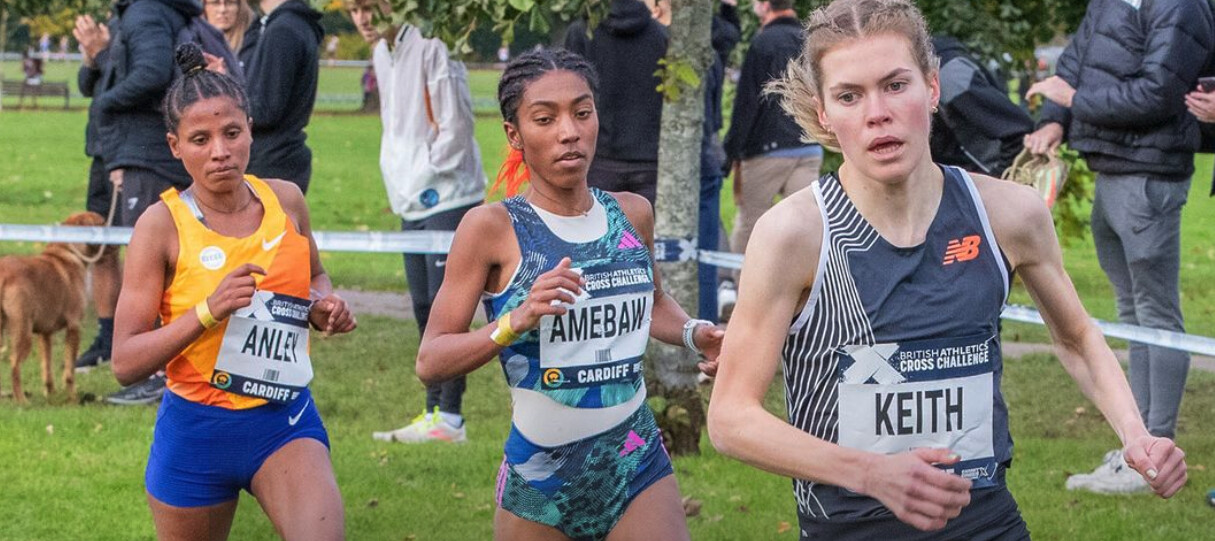
The 21-year-old, who started her year by finishing third at the CrossCup de Hannut and then raced for Great Britain at the World Athletics Cross Country Championships in Bathurst, clocked 20:35 to win unchallenged on the muddy but relatively flat and winding course at Llandaff Fields.
Behind her, Ethiopia’s Likina Amebaw – who started as one of the leading contenders thanks to her Cross Country Tour Gold wins in Albufeira and Amorebieta this year – clocked 20:52 to secure the runner-up spot, seven seconds ahead of her compatriot Asmarech Anley.
Their fellow Ethiopian Meseret Yeshaneh, the world U20 steeplechase bronze medallist, was fourth a further three seconds back, while Britain’s Jessica Warner-Judd, who won in Cardiff in 2017, placed fifth.
“That was great fun. I’ve run here before, this is my third year now. Every year I love this course and I love coming here and running really hard so it was just another really good day out,” said Keith, who will be targeting a place for the European Cross Country Championships in Brussels next month.
“I love Cardiff as a box to check on my way to Liverpool (British trial race).”
While Keith opened a considerable advantage over her rivals, the senior men's race was much closer and the end of the 9.6km contest came down to a head-to-head battle.
Uganda’s 18-year-old Kiprop, who was sixth in the U20 event at the World Cross Country Championships in Bathurst, led for much of the race, establishing a lead in the opening stages and staying ahead until Kenya’s Vincent Mutai attacked.
Kiprop placed 15th in the road mile at the World Road Running Championships last month and he used some of that speed to respond to Mutai’s challenge, with the finish line in sight.
Mutai – who won the Cardiff Half Marathon in October – had been tracking Kiprop but as he tried to pass him in the closing stages, Kiprop kicked again and won in 28:32, three seconds ahead of Mutai.
Ethiopia’s Abele Bekele Alemu was third, half a minute behind them, with Britain’s Zak Mahamed fourth and Burundi’s Egide Ntakarutimana fifth.
“I enjoyed winning this race in Cardiff because it was my first time to run in Europe in cross country,” said Kiprop. “I thought that the sprint was going to win this race.”
(11/12/2023) ⚡AMP
by World Athletics
Should You Take Pain Relievers for Exercise-Induced Aches?
When to take cues from your body and rest, and when to treat soreness with pain relievers
For some athletes, taking pain relievers like Tylenol (acetaminophen) or Advil (NSAID) to ease muscle soreness after a hard workout is second nature. However, while pain relievers may have their place in lessening discomfort, pain can also be an important signal from the body that you’ve overdone it.

So, how do you know when to take an occasional Advil for an achy knee, and when to see a professional for help?
One of the most common reasons people feel sore after a workout is due to delayed onset muscle soreness, or DOMS. This can feel like tenderness in the muscles, stiffness, or mild swelling. For instance, if you had a tough leg workout, you might spend the next few days walking funny up and down the stairs. You can still exercise when you experience this kind of soreness as long as the tenderness doesn’t affect your movement. However, if you can’t properly execute an exercise without shifting form, then it’s wise to take it easy. It’s always important to warm up before a workout, especially if you’re feeling muscle fatigue. This can decrease the chance that your soreness will get in the way of your routine.
Dr. Hallie Zwibel, Doctor of Osteopathic Medicine, the Director of the Center for Sports Medicine, and Assistant Dean of Clinical Operations at the New York Institute of Technology, says that this kind of soreness is typical and shouldn’t be cause for concern. “After exercising, our muscles are inflamed,” he says. “If there’s no larger injury, this is normal and healthy. When the muscle heals after inflammation, it becomes stronger.”
In cases such as this, you can take an anti-inflammatory (such as ibuprofen) until DOMS subsides. Take note, however, of how often you’re doing this. Dr. Reuben Chen, MD, a Board-Certified Sports Medicine Physician, Holistic Pain Management Expert, and the Chief Medical Advisor at Sunrider International, notes that DOMS isn’t necessarily reoccurring, and thus you shouldn’t need to be popping pain relievers after every workout. In fact, as you progress in your physical fitness, DOMS should go away completely within a few weeks to a month.
“If there’s occasional swelling in the knee joint, for example, then taking an anti-inflammatory would be appropriate,” says Chen. “But if you notice the need to take an anti-inflammatory every time you exercise because of swelling and pain, then it’s time to seek professional help.”
To differentiate between injury and DOMS, you should pay attention to how the painful spot feels when you move around. With DOMS, the pain should lessen when you warm up and move your body. Injuries, however, usually become more painful with movement. Instead of soreness, an injury will feel like localized sharp pain and bruising that doesn’t go away.
Chen makes it clear that, while NSAIDs can be helpful for short-term pain management, continuous use can be dangerous. Research shows that long-term usage can impair healing, make someone more prone to injury, and create health problems down the line. He adds that, if you really need a pain reliever, it might be best to take Tylenol, which has been shown to produce fewer GI issues in the future.
“Try some other over-the-counter (OTC) medications, like Tylenol, about 30 to 60 minutes before you hit the gym,” Chen advises. “Also, be sure to consult with your doctor on any OTC meds you take and stay hydrated by drinking fluids before and during any workout.”
Chen, who has a background in traditional Chinese medicine, recommends also considering some Eastern medicine modalities for managing aches and pains. He adds that acupuncture is a beneficial holistic pain reliever alternative. Studies suggest that it’s effective at treating various forms of pain, including osteoarthritis and myofascial pain syndrome.
“Modalities like controlled breathing, ice, and osteopathic manipulative medicine (OMM), are safe, inexpensive, and effective ways to reduce pain,” Zwibel says. “They also empower patients by allowing them to feel more involved in their own care.”
Food, as we know, can often be the best medicine. Turmeric, for example, has been studied for its anti-inflammatory effects on irritable bowel syndrome, psoriasis, atherosclerosis, and other diseases. Hydrolyzed collagen, fatty fish, and ginger also have anti-inflammatory properties. The good thing about these options is that you can consistently take them, unlike NSAIDs that, over time, may cause issues with your heart, kidney, liver, and blood circulation. It’s always a good idea to look into alternatives before opting for pills. Overall, it’s best to avoid regular use of pain relievers like Advil and Tylenol after a workout to ease sore muscles.But if you need to occasionally take the edge off muscle aches and soreness, Tylenol is the best option.
Most importantly, remember to listen to the signals your body is giving you. If that aching isn’t clearing up, or seems more sharp and pronounced, it’s time to see a doctor.
(11/12/2023) ⚡AMPby Outside Online
Should You Exercise While Under the Weather?
While a light jog or quick weights session might help clear out lingering congestion, there are times when exercise might actually do your body (and others) more harm than good
If you are consistently active, you probably feel strong, healthy and at times utterly invincible. This can make it doubly painful when your body does succumb to illness which, let’s face it, happens to the best of us. Not only do you feel icky when you’re sick, but you’re also discouraged from doing the one thing that makes you feel great: exercise.
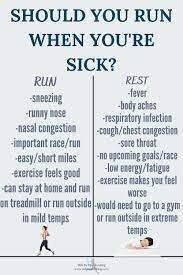
There are a number of infections we can pick up throughout the year, some worse than others. While we’ve always been told to avoid working out while sick, it’s tempting to ask how sick is sick, and what counts as “working out”? Is a light walk OK, or should you avoid any activity altogether? Can you do weights at home? Here’s the real question: When (if ever) is it OK to exercise while you’re sick?
As it turns out, the question of whether you should work out while sick may depend on what you’re sick with and the severity of your symptoms. While a fever and upset stomach would stop most of us from even thinking about touching a weight, a stuffy nose and headache might actually benefit from a few minutes of movement. Here’s what you need to know to decide whether you should be working out while sick.
Under “normal” conditions, exercise is an acute stress that can temporarily suppress your immune system. As Kristina Kendall, Ph.D., lecturer at Edith Cowan University’s School of Medical and Health Sciences, explains, this really isn’t as bad as it sounds. “Your body’s immune system usually recovers within a couple of hours, assuming you are healthy and not already battling an infection,” she says. Over time, this pattern can actually build a stronger immune system.
However, when your immune system is already compromised (i.e., when you’re already sick), exercise will only make things worse. “Rarely would I recommend working out while sick, especially if it is a viral illness,” Kendall says. Viral infections can be spread through the air or on surfaces, while bacterial infections are spread through direct contact. Since working out while sick puts you in close proximity to others touching the same equipment, it’s best to stay out of the gym when you’re sick, both for your own health and for others.
“Working out while experiencing symptoms of a cold or flu not only can slow down the recovery process, but it also can put those around you at risk,” Kendall says.
How much rest you take also depends on the type of illness you have. If you’re experiencing a sinus infection or a head cold, for example, you can start working out once your primary symptoms (headache, sinus pressure, etc.) subside. You may feel good enough to go for a walk or a light bike ride after five to seven days, although in some cases, cold symptoms can last up to two weeks.
As long as you’re not battling below-the-neck symptoms like fever, tightness in the chest, sore throat or stomach ache, a light workout might even help clear up some of that lingering congestion. On this point, Kendall agrees. “Once the heavy symptoms are gone, getting some fresh air, sweating a bit, increasing blood flow and moving your body can actually feel pretty nice,” she says.
Infections that affect your respiratory system — chest cold, flu, pneumonia — are a whole different story. These types of illnesses can make breathing very difficult during exercise, so Kendall recommends waiting to work out until symptoms have passed completely. This is also another instance when your health can affect the health of those around you. If you have a respiratory infection and are coughing and contagious, stay away from public gyms. Nobody wants your germs.
Another thing to consider when weighing whether to work out is whether other factors might be off. As Kendall points out, in addition to making you feel crummy, illness can throw your sleep schedule, hydration and eating patterns off.
“Poor sleep, inadequate nutrition and dehydration only compound the negative effects of working out while sick,” she says. So not only will your performance during the workout suffer, but you’ll also probably do more harm than good and lengthen the time it takes your body to recover.
The take-away message? You really won’t see any improvements in performance and/or physique if you exercise while sick. Use this forced downtime to sleep, hydrate and recover. According to Kendall, if you allow your body to fully rest and recover, you’ll gain back any fitness losses more quickly than if you try to push through.
“Rest does a body good,” she says. “If you let your body fully heal, it’s also less likely you’ll catch another cold/virus in a couple of weeks.” So take a week off — big deal! You’ll gain back any fitness that you lost pretty quickly once you’re feeling better.
If you absolutely must exercise, you can get outside (not in a public gym where you can spread germs) and do some light exercise once your symptoms subside. When in doubt, check with your doctor for his or her recommendations and to learn how long you might be contagious for. This will definitely let you know when you can safely return to the gym.
(11/12/2023) ⚡AMPby Outside Online
Which Shoe Brand Won the NYC Marathon?
We scored the race like an XC meet. Here are the results.One problem with pro running is that there’s no real team system to create legit rivalries and wild fan support. The major sports have figured this out—grown men wear Detroit Lions jerseys to Costco. Nobody’s slipping on a Hansons-Brooks singlet to hit up the Home Depot.
That could be in part because there is no league. Casual fans can’t throw their undying faith behind NAZ Elite and root for them to beat up on OAC during a showdown in the summer road racing season. Plus, there aren’t really any competitions where teams square off for bragging rights and team trophies—well, maybe USATF Cross Country Championships.
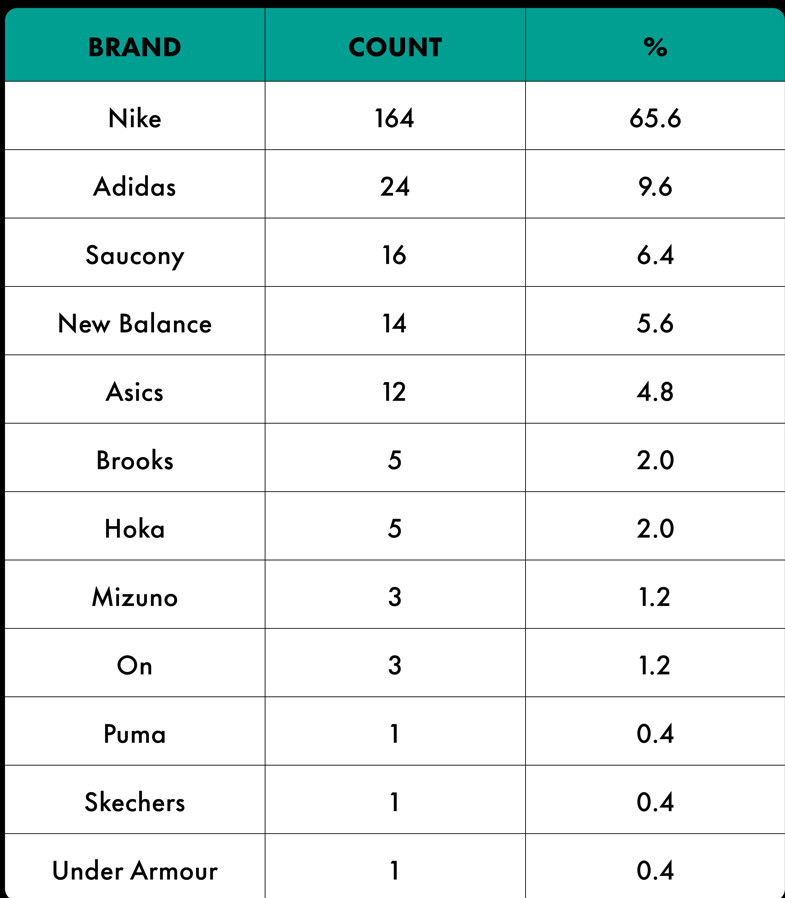
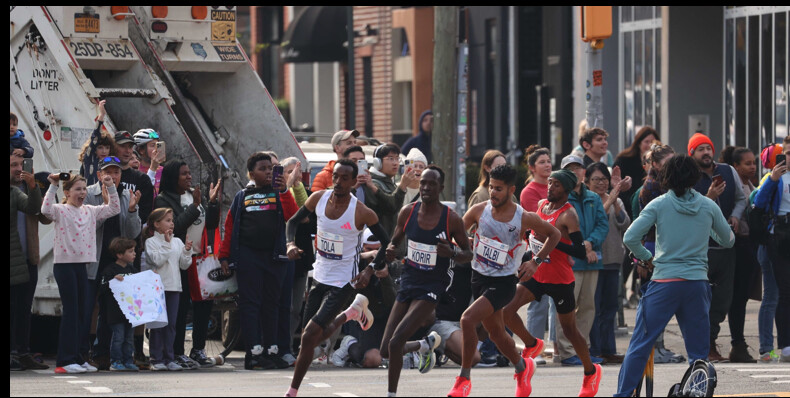
With XC in mind, let’s apply that kind of scoring to the NYC Marathon and manufacture some team drama.
In another article, I looked at the top 10 shoes from the marathon. But what happens when we go a bit deeper and look behind the pros? Which brand’s team is the best?Standing on the sidelines, I snapped photos of runners until the packs became too thick for me to capture everybody clearly. Then I sat with the results and matched runners to their shoes based on their bib numbers.
The elite fields were fairly small this year, so I left the pros in the scoring mix. Congrats, David Puleo from New York City, you were actually on Team Adidas with Tamirat Tola this year.
This is meant to be a fun look at shoes but, to be fair, there are many holes that can be poked into this scoring system. Nike and Adidas have bigger budgets and brought in more ringers. Likewise, because there were so many people wearing Nike, more were bound to make it to the finish line—Cam Levins (Asics) and Reed Fisher (Adidas) both dropped out but would certainly have scored well for their squads.
SWOOSHES EVERYWHERE
First, let’s take a look at the stunning number of Nikes that dotted the course. Here’s a count of the shoes among the top 250 runners. Nearly ⅔ of these runners had the swoosh.The ratio of Vaporfly and Alphafly to other shoe models got even more skewed as the times slowed. Of the final 35 runners I tagged, only 4 weren’t wearing Nike—1 Hoka, 1 Saucony, and 2 Adidas.SCORING
Now, on to the race results. Given the sheer number of Nike runners, it seemed inevitable that they’d win this meet in 2023. But, are other squads competitive? How close are they? And how strongly do the smaller brands compete on the streets?
A primer on XC scoring: In traditional cross-country, teams can have 7 runners, but only 5 actually figure into their own team’s score. But the 6th and 7th runners on a team can have a huge impact in the standings, because their place can affect their opponents’ scores. If they finish in front of another team’s 5th runner, that pushes the opponents’ score one point higher.
Let’s illustrate that with our top two teams.Not every brand in the race had enough runners across the line to yield a team score. This is only because I stopped keeping score when roughly 250 men had run by me at the 24-mile mark. They all certainly would have had five runners, in a field of 51,933 runners. But, by that time, the packs of runners became too thick for me to reliably capture bib numbers and shoes so that I could match them with their final standing later. I even peeped MarathonFoto for a few runners that I missed—some second-wavers ran really fast times!—but it was a painfully slow process and the images are too low res to accurately tell shoes apart unless they were garish neon colors that instantly gave away the brand. So I abandoned the exercise at 250 men.
(For this same reason, I was unable to score the women’s race. I made an attempt, but bib numbers were blocked too consistently to reasonably get enough data.)
Once I had the top finishers matched with their shoe brand (team), I omitted any who had finished outside their team’s top 7. In some XC races, you can run a big team, but runners 8 and up are yanked from the results for team scoring purposes.Interestingly, New Balance athletes ran in a tight pack, with the team’s 7th man finishing 31st. But they just didn’t have the pro-caliber runners needed at the front of the race to hang with the teams that made our podium.
MORE CHOICES, BUT ONE CLEAR LEADER
The takeaway from all this? There are many brands building great racing shoes right now, as evidenced by the parity in the top finishers of marathons. But, further back in the pack, Nike still dominates with competitive runners. That stands to reason, as they had a few years head start on everybody else in the super shoe race.
How will these standings look in a few years, after other brands have had more time for their innovations to proliferate? If it follows suit with the pro field, expect to see some of the also-rans make a strong challenge for the podium and team title.
(11/12/2023) ⚡AMPby Runner’s World
The Queen of Pain Dauwalter Shares Her Secrets for Going Long
WITH COURTNEY DAUWALTER, WHO HAD ONE OF THE MOST LEGENDARY YEARS IN TRAIL-RUNNING HISTORY IN 2023, BECOMING THE FIRST PERSON TO WIN THE TRIPLE CROWN OF 100-MILE RACES IN A SINGLE SEASON.
LET ME EXPLAIN (1) Comfort is key! I prefer [shorts with] long inseams because I am most comfortable in them. We should all wear the clothes that make us feel our best when we’re out trying hard things. (2) I love any type of route, really, but loops definitely feel like big adventures. Not knowing what’s around each corner or what view you might be rewarded with is exciting. (3) Early mornings feel so simple and peaceful. I love to drink my coffee and watch the sun rise while I plan out my day. (4) Smiling always helps! (5) Staying in the moment, focusing on taking the next step, and repeating a positive mantra are things I try to do during the toughest moments of any run.
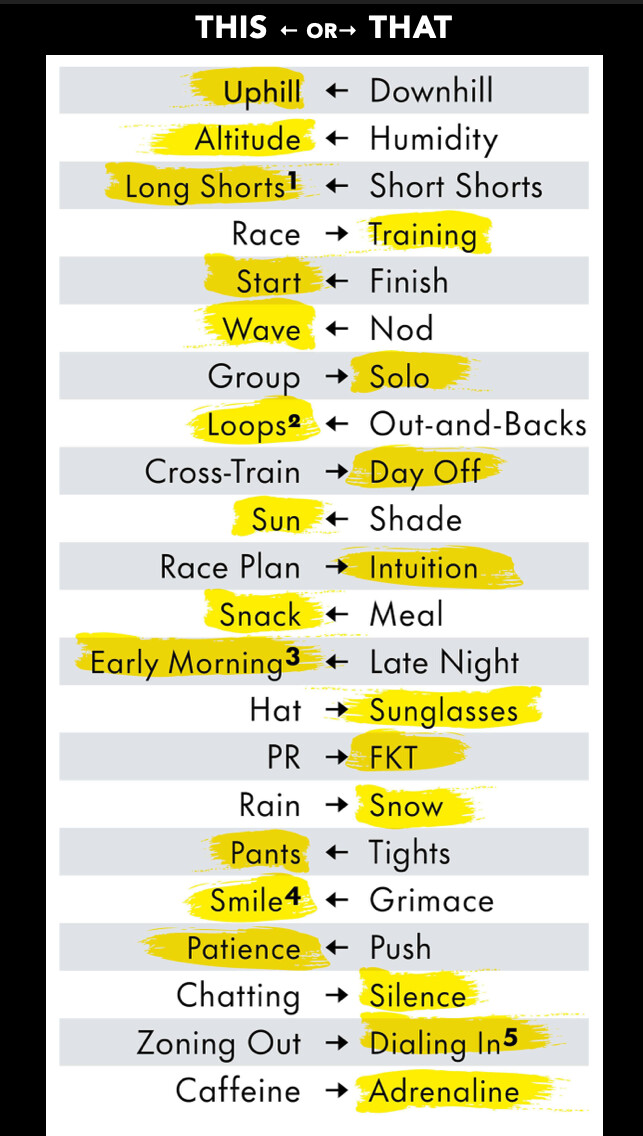
How to use time off to make you a stronger and faster runner
New Brunswick-based coach Stephen Andersen explains how to use time off to make you a stronger, faster runner.
The fall racing season is coming to a close, and if you’re not already there, the off season is at your doorstep. Whether you appreciate taking some time off training or you loathe getting out of your regular running routine, one thing is certain: downtime is an important part of your training plan. We spoke with coach and agent Stephen Andersen of Fredericton, who explained how runners can maximize their downtime so they come back healthier and stronger for their next training block.
For starters, Andersen doesn’t like the term “off-season:” “Running is a year-round sport, despite the sometimes crummy weather we get in Canada,” he says. “Instead, I like to frame it as taking downtime.”

This downtime, he says, should usually follow a big goal race or tough training block. For example, he says it’s important to take some time off after a marathon, because it allows your body to rest and recover. He adds that taking some downtime can also help your body absorb your previous block of training, so you can return to running feeling rested and ready to work hard. It also helps to mentally reset and prepare for your next goal.
How long should your downtime be?
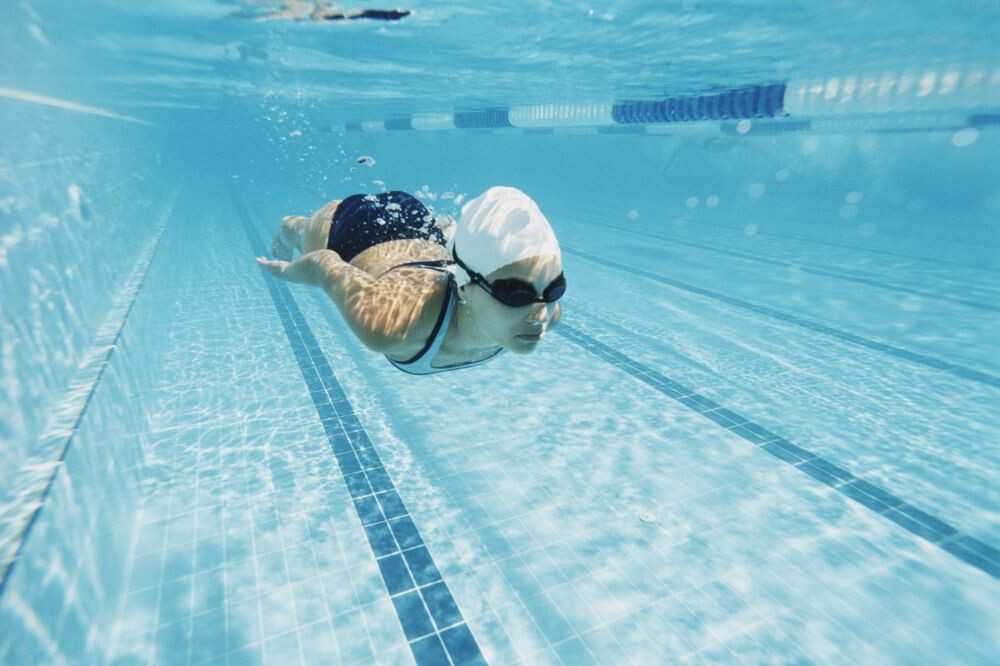
This, Andersen says, will vary from runner to runner, and will depend on several factors, including what kind of race you’re training for, what your cross-training is like and how your body is feeling. “It is very contextual and individualistic,” he says. “For some people, one week of downtime is plenty. Others need a couple of weeks to a month of downtime before ramping back up into training.”
He notes that even two-time Olympic champion and former world record-holder Eluid Kipchoge takes it easy for about a month following a big goal marathon.
Should you run during your downtime?
Again, this depends. Andersen says the important thing is that runners keep moving during their downtime, since not moving can lead to tendon issues and other injuries when you start running again. Being too sedentary during downtime is one of the biggest mistakes he sees runners make.
“It will shock the system when you return to run,” he says. “Think of a gas fireplace. You leave the pilot on for most of the year, so when you need to turn up the heat, you are able to do it seamlessly and quickly, usually with no issues.” Turning that pilot off for too long, on the other hand, can lead to trouble.
He encourages runners to incorporate cross-training to maintain some base fitness during their downtime, such as cycling, pool running, swimming, cross-country skiing or using the elliptical. “This takes some of the impacts off the body, but also ensures you are keeping your muscles and tendons active, so there isn’t a shock when you return to running,” he says.
This doesn’t mean you can’t do any running at all during your downtime. If you’re taking more than one week off training, Andersen says you can incorporate one or two short, easy runs per week to keep your body used to the impact of running. “If someone is taking three weeks of downtime, the first week off I may suggest running once, the second week two or three times, and the third, three or four runs, with some easy elliptical and biking mixed in during each of those weeks,” he says.
You can also try participating in other sports during your downtime, which can help you develop skills that will make you a better runner, such as explosiveness, mobility and stability. Just be careful that you don’t get injured playing a different sport if you have a big running goal on the horizon.
The bottom line
Taking downtime to allow your body to rest and recover is an important part of your training plan and shouldn’t be neglected. As long as you continue moving and then return to running gradually so your body has time to adjust, a little time off will make you a better runner.
(11/11/2023) ⚡AMPby Brittany Hambleton
Three ways to build a strong running base this winter
While it’s exciting to be training toward a very distinct goal race or distance, it’s important to have a strong running base before you begin to direct your effort toward something more intense. Having a strong aerobic and structural foundation to build on helps prevent injuries, and your body will adapt more easily when you introduce race-specific training. Even experienced runners should consider inserting a base-building block (or several) into their training.
The colder months are a great time to focus on your base before ramping up your training for the spring race season–a running base is usually built over a minimum of four weeks. Here’s how, and why, you can build a strong base this winter.

What exactly is base-building?
On his website, McMillan Running, renowned endurance coach Greg McMillan explains there are five goals of base-building. Runners work toward building aerobic efficiency, improving musculoskeletal durability, improving their ability to burn fat rather than carbohydrate as fuel, improving the endurance of fast twitch muscle fibres and creating a tireless mental state. While that list might seem daunting, the key components are actually as simple as going back to basics, which essentially means lots of easy running.
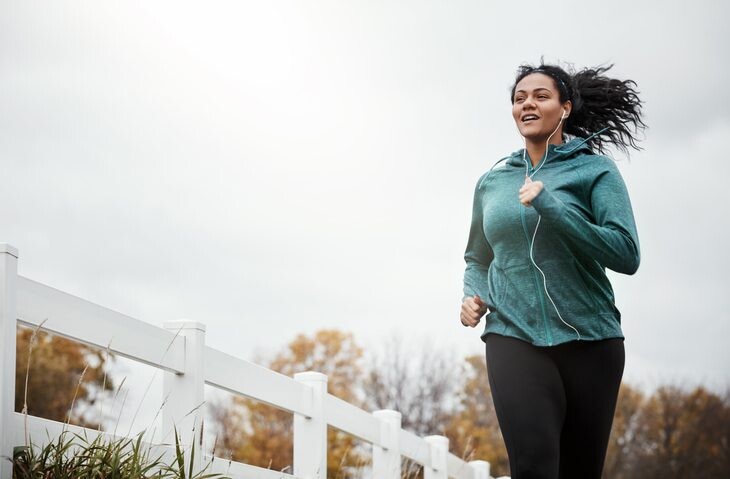
1.- Keep your runs at a conversational pace
While speedwork is essential when prepping for a race, base-building is a time to keep your runs easy and comfortable. You should be able to talk easily throughout your run, and your effort should consistently feel very manageable. Slow running builds muscular strength and teaches your cardio, respiratory and muscular systems to work more efficiently. It also increases the quantity and size of mitochondria, improving oxygen use and glycogen stores.
If you struggle with keeping to an easy pace, adding strides—short accelerations of 80-100 metres, or 20 to 30 seconds—a couple of times a week after a routine easy run can ease restless legs. A speedy parkrun or faster-paced session tossed into your training is OK, just keep the focus on finessing that easy pace.
2.- Add mileage slowly
After a race, reduce mileage to a range that is comfortable for you–your peak mileage, or the amount of running you do right before your pre-race taper, is not what you should return to post-race, as tempting as it may be.
Once you’ve established a starting point, adding between five and 10 per cent every other week is a rough guideline for building gradually while decreasing your risk for injuries. Everyone has an individual range, so if you’re an experienced athlete, you may be comfortable adding more, and newer runners may want to increase mileage at an even more conservative rate.
3.- Master the art of recovery
Most runners are reluctant to focus on their recovery days. After all, rest days are as simple as not running, right? Recovery days should actually be considered as essential as any peak training workout, and runners should take time to focus on prioritizing good sleep hygiene and top-notch fuelling. Don’t skimp on meals just because you aren’t running–rest days are the perfect time to prepare and enjoy nutritious, energy-packed meals (meal-prepping for the week is a great idea, if you have extra time). Make sure to head to bed early, and focus on de-stressing and self-care.
(11/11/2023) ⚡AMPby Keeley Milne
Caroline Jepchirchir headlines Athens Marathon
The reigning Iten Marathon champion, Caroline Jepchirchir will be the star to watch at the 40th edition of the Athens Classic Marathon scheduled for this Sunday (12) in Athens, Greece.
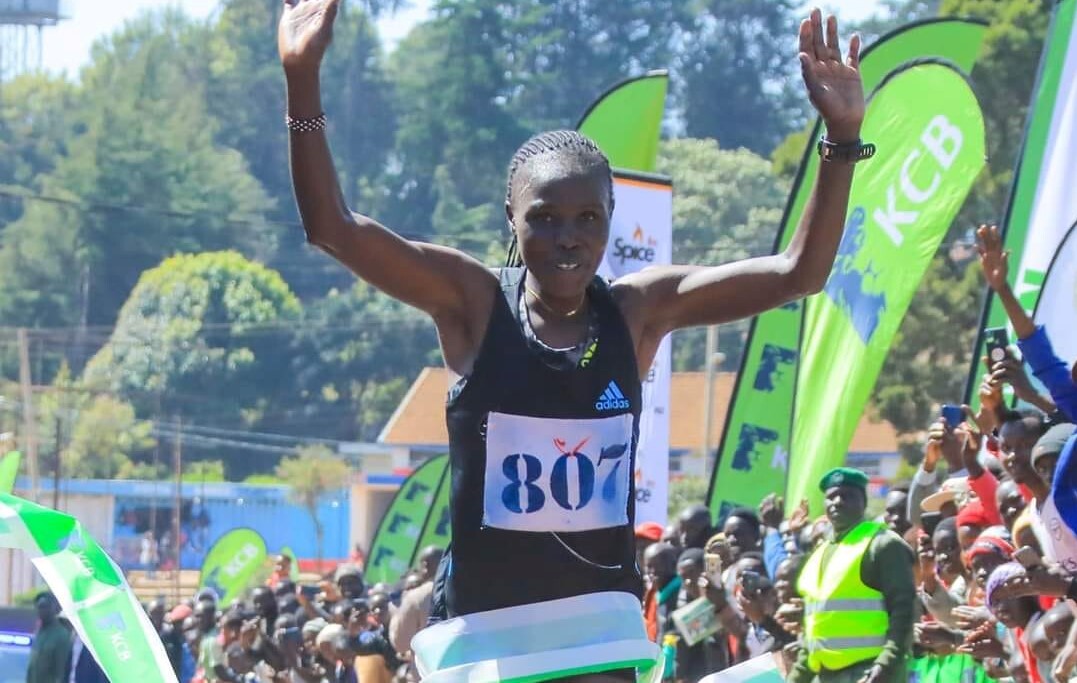
The 35 year-old comes to this race with a personal best 2:26.11 that she got last year at the Enschede Marathon where she finished in fourth place.
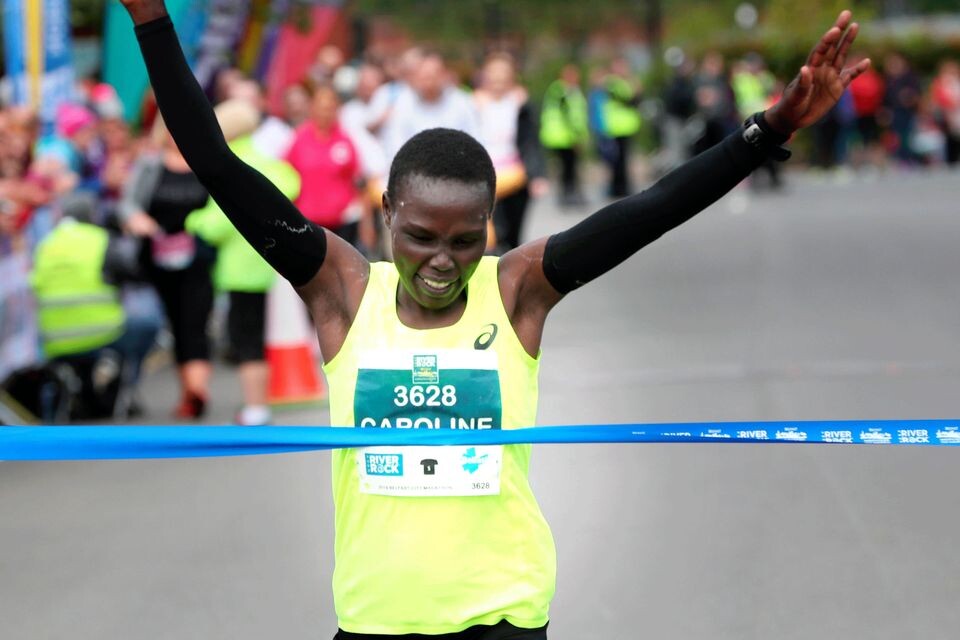
Jepchirchir will battle for honors with eleven time Lithuania’s National champion, Vaida Zusinaite-Nekriosiene, who comes to this race with a life time best of 2:32.50 that she got in 2016 at the Hannover Marathon.
Jepchirchir will be targeting to lower the race course record of 2:31.06 set thirteen years ago by Lithuania’s Rasa Drazdauskaitė.
(11/11/2023) ⚡AMP
by John Vaselyne
Athens Marathon
The Athens Classic (authentic) Marathon is an annual marathon road race held in Athens, Greece, normally in early November. The race attracted 43.000 competitors in 2015 of which 16.000 were for the 42.195 km course, both numbers being an all-time record for the event. The rest of the runners competed in the concurrent 5 and 10 kilometers road races and...
more...6 Common Causes of Back Pain in Runners and How to Avoid the Aches
These are the common causes of back pain in runners, according to experts.
If you want to solve a problem, you have to go to the source. The only problem: Pinpointing the source of your back pain can be somewhat tricky. The discomfort can stem from your running, but also activities beyond your workouts, like lifting something that’s too heavy or sleeping on a brand new mattress.
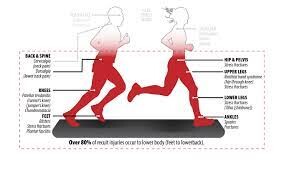
To help find the common causes of back pain in runners, though, researchers of a study published in Pain Research and Management surveyed 800 marathon runners to better understand how they experience lower back pain and identify potential risk factors. Of the marathoners who reported pain, risk factors included an insufficient warmup, fatigue, poor running posture, and even the environmental temperature.
While these may cause you to experience aches in your back, we asked a physical therapist and sports physician for other surprising and common causes of back pain—plus what you can do to avoid all of these risk factors for discomfort.
1. You’re Not Strength Training
A weak core—or any weakness along your kinetic chain, including in the muscles around your feet, ankles, knees, or hips—can affect your body’s ability to absorb the impact of running.
“If a runner’s body isn’t absorbing shock well or efficiently, there will be excess impact forces that are transmitted through the legs and up into the spine or lower back, which can cause low back pain or discomfort,” Daniel Giordano, D.P.T., C.S.C.S., physical therapist and cofounder of Bespoke Treatments, tells Runner’s World.
This is why it’s so important to strength train at least twice a week, so you can build stronger running muscles for the road. For runners with a weak core or hips, practicing planks and lunges can help stabilize these muscles, says Giordano. Other moves to target typically weak areas of runners include single-leg calf raises for stronger ankles, lateral banded walks for knee strength, and glute bridges for stronger hips.
Muscle weakness can also cause runners to overcompensate in other areas of the body, which can result in poor running form and also contribute to back pain, Giordano adds. For example, a weak core can cause a runner to slouch or lean forward which places extra stress on the low back and can disrupt running mechanics.
The best way to zero in on weaknesses and compensations is to visit a professional, like a physical therapist, sports physician, or orthopedist, who can use technology like a 3D gait analysis to assess your running form and measure your ability to absorb shock, and motion analysis to measure your joint range of motion, says Giordano.
2. You Don’t Warmup
You need to warmup before every workout to properly prepare your muscles for what’s to come, especially if you spend a lot of time sitting throughout the day.
“If you’re sitting all day, your hips are probably going to be tight,” says Giordano. “Then, if you’re not warming up after sitting and just going straight into a run, you’re not going to be ready to run.” Essentially, your body won’t be able to get through ideal gait mechanics without overcompensating.
For example, “tight hips can limit your range of motion and force other parts of your body, such as your back, to compensate for the restricted movement, which can also result in pain and discomfort,” he explains.
To fix this, Giordano suggests doing a dynamic warmup, which requires actively stretching your hips, glutes, hamstrings, quads, calves, and rotating your spine to ensure your muscles are ready to go at run time. To target these areas and activate these muscle groups, try bodyweight squats, mini band lunges, pogo jumps, and standing spinal rotations. Also, jog in place or walk for a few minutes before you start picking up the pace, he adds.
3. You’re Wearing the Wrong Shoes
Finding the right pair of running shoes will help improve shock absorption, which can decrease back pain.
When determining which shoes to choose, it’s all about your running gait, Aaron Mares, M.D., associate professor at the University of Pittsburgh Medical Center and associate medical director for the Pittsburgh Marathon tells Runner’s World. You may need more or less cushion depending on your biomechanics.
More specifically, your level of pronation—the inward movement of your foot as it rolls optimally to distribute the force impact as you run—will contribute to the kind of running shoe you need, says Mares.
A running gait analysis can also help identify the shoe that’s best for you. For example, if the analysis determines you overpronate, you might want to consider insoles or a stability shoe.
Also, look for a lightweight shoe with cushion, as this can not only help you avoid pain but also keep you from slowing down, says Giordano. Heading to your local running store to test shoes before you buy them is always a smart move.
4. You Increase Your Mileage Too Quickly
“If you’re increasing your volume or your intensity too fast, and your body’s not equipped to handle it, that will lead to excessive force on your lower back,” says Giordano.
That’s why it’s important for you to slowly increase your training volume by 10 to 15 percent each week, so your body can build strength and endurance, he explains. This means if your longest run is five miles but your goal is to run 10 miles, you’d increase your longest run by about 0.5 miles each week until you reach your goal.
Also, you may want to consider where you’re running, especially if you frequently run on concrete or up hills, as this can also contribute to your pain. “If you’re running on a really hard surface, you’re going to put a lot more impact force up through your kinetic chain versus if you run on soft dirt, fine gravel, or a trail,” says Mares.
A change of scenery can offer a simple fix—head out to the trails or softer paths like grass—but you also might want to consider dialing back your frequency or intensity. Cross-training with cycling or swimming, especially if running somewhere else isn’t an option, is also a smart option for sidestepping aches when your back asks for it, Mares adds.
5. You're Not Recovering Properly
“If you’re not sleeping well and not recovering, your body’s never healing. You're constantly in a state of stress, and probably should take more days off,” says Giordano.
Your body needs complete rest days mixed into your schedule so it can properly heal before your next workout. Adequate rest days will prevent you from overtraining, therefore helping you decrease your chances for muscle issues, like back pain, that can stem from an overuse injury.
Ideally, you want to have one full rest day a week, and get at least seven to nine hours of sleep each night.
6. You’re Not Drinking Enough Water
Believe it or not, inadequate hydration levels can also contribute to the risk of back pain. “If you’re not well hydrated, your muscles can become tight and it can lead to strains or sprains, including those in your lower back,” says Giordano.
To avoid this, aim for the Institute of Medicine’s recommendation of men taking in at least 3.7 liters (or 125 ounces) and women 2.7 liters (or 91 ounces), per day, from fluids and water-containing foods.
(11/11/2023) ⚡AMPby Runner’s World
U.S. Secretary of Transportation Pete Buttigieg Treasures Time on His Feet
He has toddler twins and a very big job, but the cabinet member makes running a priority.
When you’re a “transportation guy,” as Pete Buttigieg calls himself, there’s no better place to run than Gravelly Point Park, in Arlington, Virginia, under the flight path of planes on final approach at Reagan Washington National Airport.
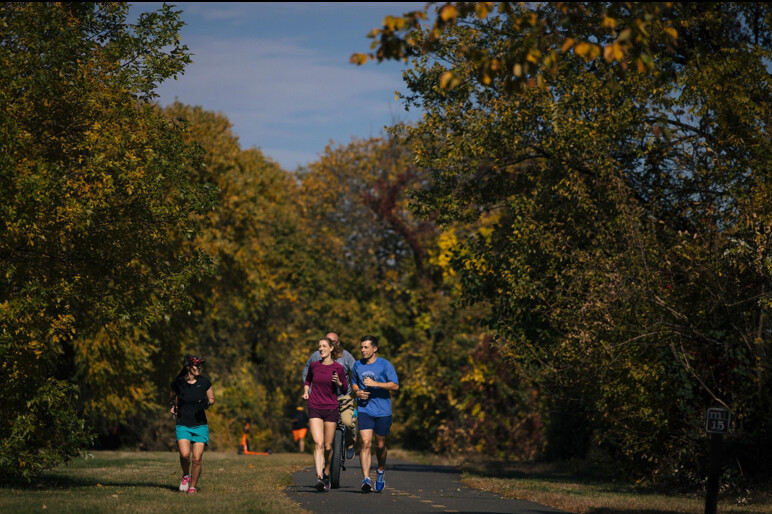
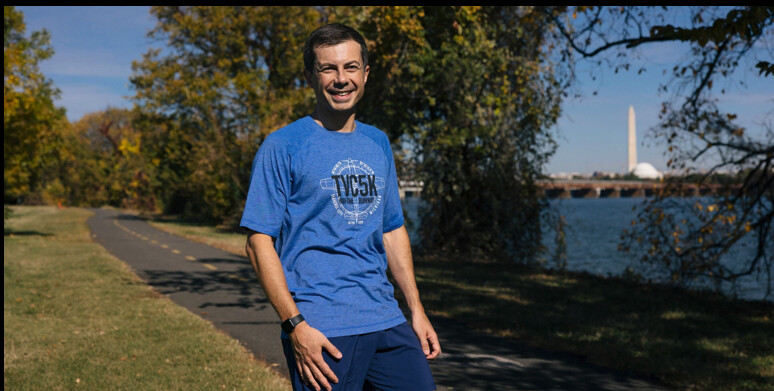
“It feels as though the planes are trying to land right between your eyes, and then you watch them go over your head,” said Buttigieg, the 41-year-old U.S. Secretary of Transportation. “It’s just really fun and motivating.”
Buttigieg—who in 2021 was sworn in as the youngest member of President Biden’s Cabinet—is (with all respect due to a government leader) a bit of a dork when it comes to planes.
“There it is!” he said, as a United Airbus passed close overhead. “You hear that swizzling noise in the air? That’s wake turbulence!”
“Turbulent” is a word Buttigieg uses regularly, although his political career has been mostly smooth sailing. In 2011, he was elected mayor of his hometown of South Bend, Indiana. Eight years later, he entered the Democratic presidential race as a longshot candidate and won the Iowa caucuses. He ended his bid in March 2020 and endorsed the man who’s now his boss, Joe Biden.
Recently Buttigieg squeezed a midmorning run with this reporter into a typically hectic day at the helm of a 53,000-employee department: getting his two-year-old twins fed, dressed, and off to daycare; meeting with the German minister of transportation; welcoming the newly confirmed FAA administrator to his post; meeting with colleagues at the Commerce Department; talking permitting processes at the White House; and then attending a state dinner for the Prime Minister of Australia. Wardrobe requirements included a suit, running clothes, and a tuxedo.
On days like that, running is a source of satisfaction and stress relief. As a cabinet secretary, Buttigieg is required to train with security; his detail trails behind him on a bike while he runs, or waits by the water’s edge while he swims. (When members of Buttigieg’s open-water swimming group tried to correct a hitch in the Secretary’s stroke, his security team protested, “Don’t fix that! It’s the only way we know which one is him!”)
For Buttigieg, knowing Secret Service members’ jobs revolve around his workout schedule is the ultimate in accountability. “It’s definitely kept me from hitting the snooze button more than once,” he said.
Apart from this interview, conducted at sub-10-minute-mile pace, and the occasional bit of bipartisan “jogging diplomacy,” as he calls runs with members of Congress, Buttigieg tends not to mix work with training. He runs about five days a week, usually early in the morning, when most people are too focused on their own workouts to recognize him.
“I get spotted a little bit, but not enough to disrupt my training,” Buttigieg said. “Once in a while somebody wants to take a selfie when I’m mid-run, and I’m never sure how to handle that. Usually I just do it.”
Humble run beginnings
As a teenager, Buttigieg did not take to running naturally.
“It’s difficult to overstate how unathletic I was,” said Buttigieg, who joined the track and cross-country teams at St. Joseph’s High School in South Bend. “I was the kid who was so far behind at a cross-country meet that I might take a wrong turn because there was nobody left on the course. So it meant a lot to me, years later, when I got to be speedier.”
His progression from back-of-the-packer to one of the fittest members of the executive branch took years. As an undergrad at Harvard, Buttigieg would run on the treadmill or along the Charles River, but never more than three to four miles. At Oxford, where he was a Rhodes Scholar, Buttigieg added rowing to his endurance repertoire. By his mid 20s, running had become a “comfortable habit”—and a gratifying one.
“There’s a level of coordination that I may never have to be good at basketball,” he said. “But running—the more you do it, the more rewarding it becomes.”
When Buttigieg joined the U.S. Naval Reserve in 2009, he excelled at the 1.5-mile run that was part of the requisite fitness test, getting close to a perfect score of 9 minutes flat.
“For a while I was the fastest guy in my unit, which felt great because I was always the slowest guy in my high school,” he said.
In 2014, during a seven-month deployment as a counterintelligence officer in Afghanistan, Buttigieg ran a half marathon at the U.S. base in Bagram. In addition to the typical instructions about course markers and fluid stations, the pre-race briefing included warnings to participants about the potential for rocket attacks. He ran his current PR of 1:42.
A triathlon two years in the making
Buttigieg continued to run throughout his mayorship of South Bend and his 2019–20 presidential run. In 2021, his first year as transportation secretary, he was training for a half-Ironman in Michigan when he and husband, Chasten, adopted premature newborn twins, Penelope and Gus. Suddenly, instead of miles, Buttigieg was counting ounces of formula. Long training runs were scrapped during sleepless nights and Gus’s hospitalization with RSV.
It took until this year before Buttigieg could try another tri. Preparing for a half-Ironman (1.2-mile swim, 56-mile bike, 13.1-mile run) is a major undertaking for anyone. But when you’ve got 2-year-olds, Buttigieg said, “physically redirecting and restraining them is a huge part of parenting.” He followed a 16-week training plan he got online and relied on Chasten to hold down the fort with their kids on weekend mornings while he did long runs or four-hour bike rides.
“I would try to make up for it later in the day, but there’s no way I could’ve done this without Chasten being very supportive,” Buttigieg said. “While there’s an ethos of self-discovery and self-reliance in endurance sports, it really does bring out how dependent you can be on others to support you.”
During the race, held in mid-September in Michigan, Chasten and the kids hung out at a nearby playground—“we were playing with fire when it came to naptime”—and were at the finish line when “Papa” crossed in 6 hours and 31 minutes, largely on the strength of a 2:05 half marathon leg.
“It was pretty thrilling, although there was a fair amount of pain,” Buttigieg said. “But the kids really got into it, and that’s part of why you do this, to be in good health for the people you love.”
Buttigieg said he was wrecked for a couple of days post-race, but he now hopes to take his fitness out for an occasional spin—perhaps a run at a half marathon PR. But he won’t undertake another 6-hour race anytime soon.
“I don’t think I can do something this time intensive again while I’ve got this job,” he said. “It’s too much to ask of Chasten.”
A runner’s perspective on infrastructure
After he averaged about 25 miles per week during his triathlon buildup, now it’s back to shorter workouts for Buttigieg. And with more than 100 miles of traffic-separated pathways up and down the Potomac, the nation’s capital is an endurance athlete’s paradise. “There are few better places to run in the whole world, I would argue,” he said.
The Washington area represents the kind of well-connected, accessible and pedestrian-friendly infrastructure the Department of Transportation wants to build more of through its National Roadway Safety program. For Buttigieg, helping communities around the country build separate paths for running and biking is about a population’s safety as much as its fitness.
“I worry sometimes that a path like this is viewed as purely ornamental,” he said. “I would argue that the recreational case is pretty compelling, but also fundamentally, safety is on the line. The very layout of our roads can either incentivize or discourage active transportation, and they can either make it safer or more dangerous.”
Buttigieg formed a new perspective on road design in 2016, when he was part of a group of U.S. mayors who traveled to Denmark. Buttigieg saw 1970s-era photos of Copenhagen, which now rivals Amsterdam for highest rate of bike commuting, and recognized the look of a lot of car-dependent American cities.
“That’s when the lightbulb went off,” he said. “It’s not some immutable Nordic cultural characteristic that changed things. It was some conscious decisions made by planners to make it more attractive and safer. By doing that, they reduced congestion, they reduced pollution, and over the long run, they increased safety.”
Buttigieg has a lot of priorities beyond encouraging active transportation. He wants to train more air traffic controllers. Strengthen HazMat requirements for railroads. Build more roads and bridges. Budget cuts or a government shutdown would make it harder to accomplish those projects.
When political roadblocks lead to frustration, he works through it with exercise. He is a transportation secretary who gets to where he needs to be, psychologically and physically, by putting one foot in front of the other.
“Especially in the early morning when the dawn’s just breaking over the river here, it’s hard not to feel even in our troubled Washington that there’s some magnificence to our nation’s capital,” Buttigieg said. “You count your blessings after a run, if not always during one.”
(11/11/2023) ⚡AMPby Runner’s World
For 48 Years, Robert “Raven” Kraft Ran the Same Eight Miles. Every Single Day.
Raven has organized his life around a run streak on Miami’s South Beach, inspiring countless runners along the way. Now, it’s coming to a close.
When Raven answered his landline, he told me he was “hanging in.” Me, too, I told him, thinking about the impending pickups for my three kids and a long list of to-dos. But no, he was hanging in, engaged in an isometric hang to help ease some of his back pain.
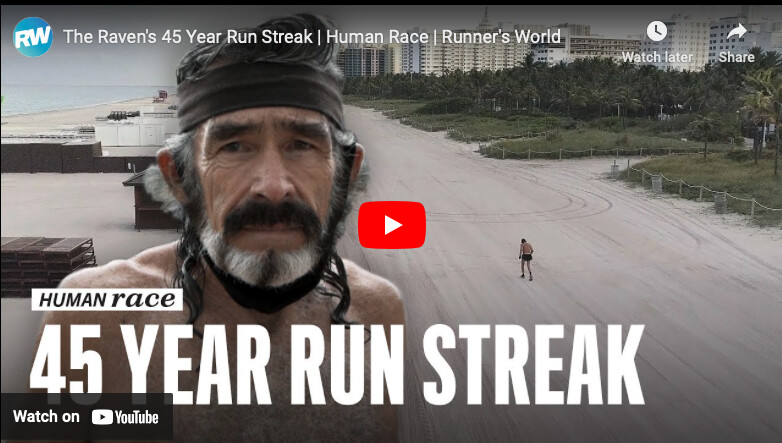
It’s that unrelenting back pain, which he thinks started in earnest after helping a fellow runner move in 1995, that has driven Robert “Raven” Kraft, 73, to scale back his eight-miles-on-the-beach run streak. Since 1975, Raven has run an out-and-back eight miles on South Beach in Miami, starting at the 5th Street Lifeguard Station.
(In 2020 he spent two weeks running on the roads, which nearly destroyed his ailing back. Local authorities gave him the okay to return; they told police that Kraft was patrolling the miles of empty beach amidst the pandemic.)
“My body is forcing me to do this,” Kraft told me of his plans to run five miles instead of eight. “I truly don’t want to, but my streak will continue, as the longest in the world on the sand.”
Kraft started running when he was 19. He wrote a song during his time trying to make it as a country artist in Nashville, but he says he didn’t know anything about copyright. Later, he heard the song on the radio, played by another artist.
“I had a few angry years,” Kraft previously told Runner’s World. A friend encouraged him to start running. That friend dubbed Kraft, “Raven.”
“You always wear black, you’re up late at night, and you write sad songs,” Kraft recalled what his friend said.
But running helped. He worked his way up from a couple of miles to five miles to eight miles. On New Year’s Eve 1975, he vowed to run every day. This New Year’s Eve will mark 49 years.
The streak is going to look different. Sunday, November 5, was the last day Kraft ran his eight-mile route. I can hear the pain in Kraft’s voice when he talks about just missing the 49-year-mark of running eight miles.
“It breaks my heart.”
But eight miles was always arbitrary, Kraft admits; it’s not even his favorite number.
“Everyone can do a 10K. Seven was too short. Nine was too long,” he says, sounding like a less chipper Goldilocks.
On Sunday, nearly 40 runners, including a 5- and 8-year-old, joined Raven for his last eight-miler.
“No one said anything negative to me, like, ‘So you’re cutting down to five miles?’” Kraft says. Anyone who knows him knows this decision was not taken lightly.
The shorter run will free up more than an hour a day—I hate to stop running eight, but running five might keep me alive, Kraft says, pointing out, poetically, that five miles is (just about) eight kilometers.
Less time running means Kraft can spend more time writing and performing music.
That’s all he’s ever wanted to do: run on the beach, work out, and write music. Last month he came out with his first album: An Unkindness by Raven and the Dark Shadows. (An unkindness is a flock of ravens, by the way.) Dave Abbruzzese of Pearl Jam is featured on the song, “Dracula.”
“My whole life has been built around [this streak],” Kraft told me. “I’ve had to give up a lot of things, weddings, parties. I have a strict schedule. I have to get back here. I’m always looking at my watch.”
It was at this moment that it hit me; this wasn’t just a get-the-miles-where-you-can daily run streak. Kraft starts at 5:30 p.m. (4:30 p.m. during standard time) from the same spot and runs the same eight-mile route. I asked him if he had any regrets.
He paused.
“Unlike you, I have no family. No kids. I didn’t make a whole lot of money working security
Kraft has run with nearly 3,700 people over the past five decades. He keeps a log, and everyone he runs with gets a nickname. And just because Kraft has to cut back to five miles, to become an official Raven Runner, anyone who joins him has to run the full eight. (“Sorry,” he says.)
Kraft says his daily runs have taught him to be more accepting.
“I’ve changed,” he says. “I’m easier to be around. Running has been my savior. I don’t want to give it up. I was shy as a kid. A loner. An outcast. Running got me out of my shell and brought out the best in me.”
Death aside, Kraft says there might be one reason he’d break his streak: accepting a Country Music Association Award in Nashville.
“I’ve never been on a plane,” he says. But then he pauses.
“Maybe I’d send somebody in my place. Or do a video thing. Zoom or something.”
MORE FROM RUNNER'S WORLD ON APPLE NEWS
jobs. I’m hoping my songs might change that.”
And except for the debilitating spinal stenosis and sciatica, “I’m in pretty good shape.” Kraft says he felt less worse after Monday's five-miler, which is a good sign. He’s already considering running eight miles on special occasions, like the 49th anniversary on December 31. What’s more, perhaps, is that Kraft felt the burden of the eight-mile streak being lifted.
(11/11/2023) ⚡AMPby Runner’s World
Garmin Vs. Coros: Which Sports Smartwatch Is Right for You?
Both brands offer state-of-the-art fitness tracking and outdoor adventure features, but beyond that they diverge down very different paths.When it comes to discussion on the best high-end, advanced-use sports watches, Garmin and Coros are frequently mentioned in the same breath. Both provide features for outdoor sports, packing their various product lines with an array of features to support not only everyday fitness endeavors like weight training and running, but outdoor activities like hiking, triathlon and marathon training, cycling, golf, skiing, swimming, diving, and even pickleball. Both brands are known for their durable design, intuitive user experience, and better-than-average battery life, earning high scores from tech critics and users alike.
That being said, Coros and Garmin fitness trackers, smartwatches and heart monitors fill different roles in your day-to-day life. If Garmin smartwatches are designed to track essentially everything throughout your day from fitness to sleep to menstrual cycles—a kind of do-it-all sports watch for general health and sports enthusiasts—Coros targets dedicated athletes who are looking to hone their training to expert levels.Which is right for you comes down to a few considerations about how you intend to use a particular tracker and what kind of athlete you are. To demystify the matter of Coros vs. Garmin, let’s take a look at how a few of each brand’s most popular models fare against each other.
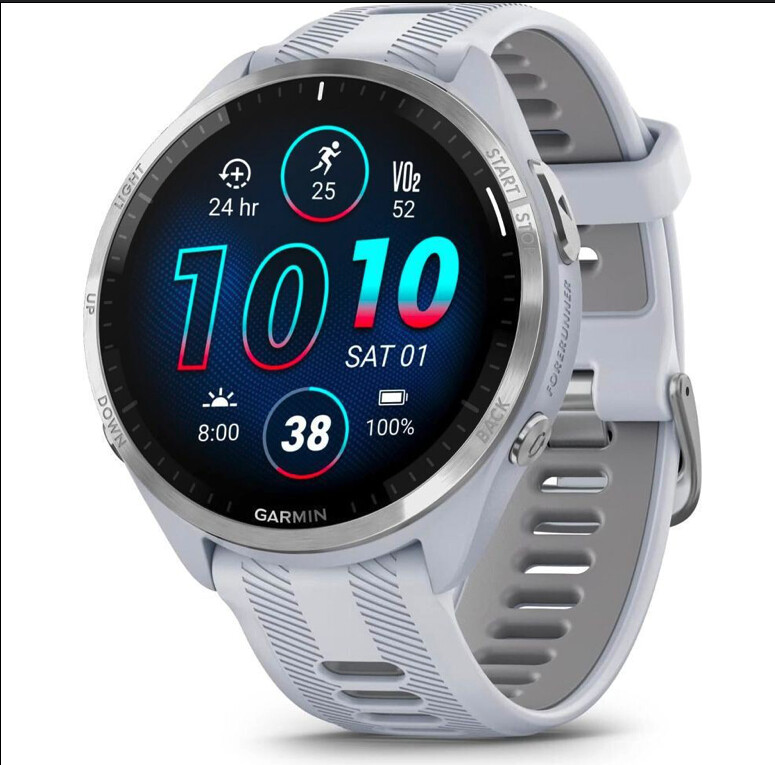
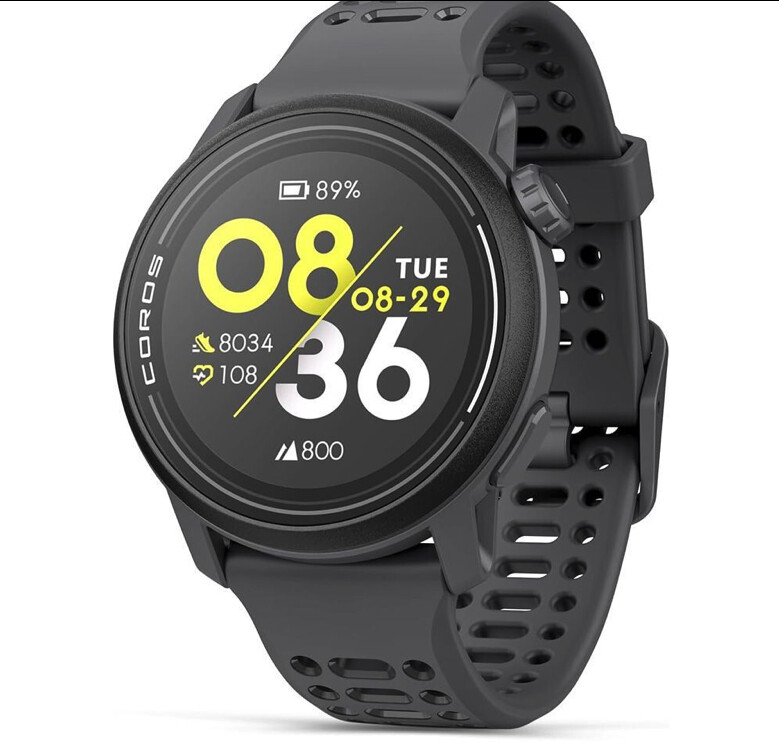
Garmin versus Coros smartwatches and fitness trackers
Best for most runners: Garmin Forerunner 965 vs. Coros Pace 3
Best advanced: Garmin epix Pro vs. Coros Vertix 2
Best lightweight: Garmin Forerunner 745 vs. Coros Pace 3
Best heart monitor: Garmin HRM-Pro Plus vs. Coros Heart Rate Monitor
Best accessories: Garmin watch bands vs. Coros watch bands
Key differences between Garmin and Coros sports watches
How we compared
Over the past several years, I’ve experimented with nearly all of the major releases from both Garmin and Coros. I’ve worn them through all manner of activities, from weightlifting to running, swimming to cycling, to plenty of backcountry hikes and trail runs and more, and I’ve tested their fitness tracking and metrics thoroughly.
I’ve strapped them on as day-to-day watches, comparing their smart features and their user experiences. And I’ve compared my findings with those of other expert reviewers to determine why you might prefer one or the other.
Garmin vs. Coros: Best for runnersThe Coros Pace 3 is one of the best running watches on the market, especially if you’re seeking advanced tracking without breaking the bank. Renowned for offering some of the most accurate and atomized run metrics you can find, the Pace 3 tracks all the usual factors like speed, distance, pace, calories burned, and so on, but gets further detailed by analyzing factors like running and form power, ground time, left/right balance, stride ratio, and more. While its smart features are fairly minimal, this is an outstanding watch for serious runners looking to shave seconds off their race times.
The Garmin Forerunner 965 is a fantastic tracker as well, but you’re definitely paying for that greatness. For its price, you’ll enjoy the stunning AMOLED screen, smart features like contactless pay, onboard Spotify, quality sleep tracking, offline maps, and even a flashlight, along with some serious run tracking chops.
While its metrics aren’t quite as granular as those of the Pace 3, it still provides plenty of useful data, like heart rate variability, which will show how your cardiovascular system evolves over the course of training.
Garmin vs. Coros: Best advancedThe Garmin epix Pro is just about as advanced as a watch gets. It does pretty much everything a smartwatch can do, tracks possibly the most expansive range of fitness metrics out there, and has a vivid display. It’s durably built and looks impressive.
New running features like a hill score (which measures your ability to charge up hills) and an endurance score (which combines your running and hiking capabilities to determine your fitness for long-distance running) will be appealing to avid runners. No matter which of the three sizes you choose it’s a pretty huge watch, and it’s definitely expensive, but for a sports watch that does pretty much everything, it’s hard to beat.
The Coros Vertix 2 is similarly enormous and pricey (though not as pricey), but it’s also similarly expansive in terms of what it has to offer. With more than enough fitness metrics for advanced trainers, a solid array of smart functions, and a competitively wide, bright screen, it’s an extremely capable sports watch.
Where it really sets itself apart, however, is the battery life. 60 days in smartwatch mode and 140 hours in GPS mode is outstanding. It’s also built tough and has an appealingly rugged vibe.
Garmin vs. Coros: Best lightweightAs far as running trackers go, the Garmin Forerunner 745 is a great option all around, and it’s the lightest in Garmin’s lineup to boot. While it offers all of the expansive running and fitness tracking capabilities that the Forerunner lineup is known for, it’s also more affordable than its namesakes of different numbers.
Its smartwatch functionality is decent for a lightweight watch geared toward running, and the recent addition of incident detection helps keep you safe on runs. Battery life is pretty poor and it could use a few more sleep metrics, but for a watch this light and affordable it has a lot to offer.
For the lightweight champion of the Coros lineup, we return to the Pace 3. At 30 grams, it’s the lightest on the list by far, and it feels like you’re running with nothing on your wrist at all. And for a watch this trim, it sure does offer a lot of fitness metrics, famously getting as granular as can be. It falters a bit in terms of smart features, but if you’re looking for pure running greatness at a low price, the Pace 3 is a winner.
Garmin vs. Coros: Best heart monitorIn recent years Garmin’s heart rate monitoring has received high praise for its accuracy across all its lines, and its HRM-Pro Plus takes that accuracy to a whole new level. It also captures a range of running dynamics like vertical oscillation, ground contact time, and stride length to help you improve your form.
Unlike many other heart rate monitors it’s capable of tracking distance and pace on the treadmill. Extremely comfortable with an outstanding battery life, this Garmin is a great addition to a serious runner’s routine.
While most heart rate monitors are worn on the chest, Coros’ monitor is placed on the arm, providing an alternative that is one of the most comfortable you can find. Not only does the strap adjust easily for the perfect fit, but its nylon/spandex material feels great on the skin.
This monitor is highly accurate at tracking a wide range of metrics, though it’s not as feature-rich as some of the pricier HRMs around. One major plus is that it can be used via any Bluetooth device and doesn’t have to be linked to the wider Coros ecosystem, unlike Garmin, which essentially requires that you pair its HRM with a Garmin watch.
Garmin vs. Coros: Best accessoriesGarmin watch bands
Garmin offers bands in a wide range of colors and materials including silicone, nylon, metal, and sometimes even leather. Its bands are as durable as they come and are reliably comfortable (except for the leather options, which some reviewers have said can feel a bit off). With so many options, Garmin makes it easy to customize.
Coros watch bands
Coros is somewhat more limited when it comes to bands. Watch bands are model-specific, and are available in a smattering of colors but not as many as Garmin offers. They’re also more limited in terms of materials, keeping things narrowed to nylon and silicone. While the selection may be somewhat more limited, they are all extremely comfortable.
(11/11/2023) ⚡AMPby Runner’s World
Two easy interval sessions for beginner runners
Not sure how to introduce speedwork to your running routine? Here's how to get started.
Experienced runners love to throw around terms and acronyms that can be intimidating to those who are new to the sport. Intervals and speedwork can sound daunting, and new runners often avoid tackling them until they’ve been logging regular miles–sometimes for years! But speedwork can be a game-changer in terms of your race results. While most of your runs should be run at an easy, conversational pace, shorter, faster sessions will help your legs (and your mind) get used to the faster paces required when racing. You’ll also boost your heart and lung efficiency, and switching things up will make your run fly by.

If you’ve been running regularly for six months and are injury-free, it’s safe to start incorporating short interval sessions into your training once a week, progressing to twice a week after a few months, provided you don’t develop any injuries. As you get more comfortable, you can add repeats or lengthen intervals. You can run intervals on the road, trails, track, or treadmill.
1.- Intro to intervals
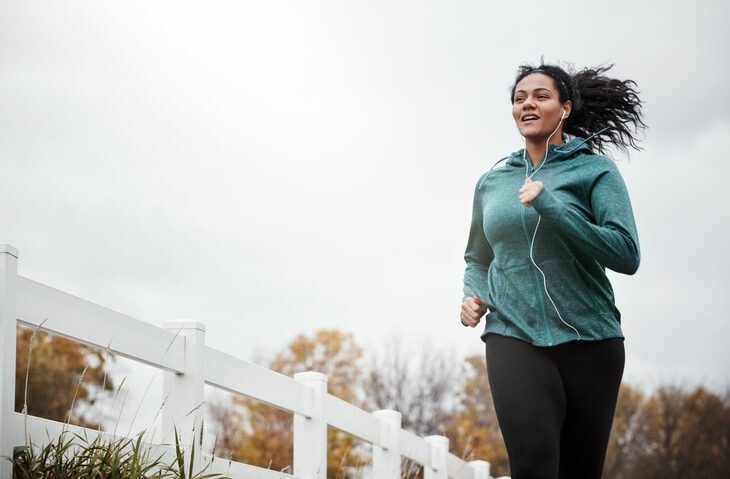
This workout is perfect if you’re new to intervals, or finding your way back after a break from running. It can be tempting to run very hard in the first few seconds or minutes of your faster intervals, but aim to find a challenging pace that you can sustain through all five repeats. This may take practice, and don’t be discouraged if you don’t nail it on your first few tries. Feel free to run fewer (or more) repeats, or add more recovery time if needed.
Warm up by running very easy for five to 10 minutes (and walk breaks are OK).
Run at a moderate effort for one minute, then run or walk at a very easy pace for two minutes to recover. Repeat the three-minute interval cycle four more times.
Cool down by running easily or walking briskly for five to 10 minutes.
2.- Pick up the pace
Once you become comfortable with adding some speed to your training, level up with these harder intervals. Don’t worry about pace during your run–stay focused on your effort.
Warm up by running or walking at an easy pace for five to 10 minutes.
Run at a hard effort (almost as hard as you can go) for 30 seconds, then recover by running at a very easy pace (or walking) for 30 seconds. Repeat this one-minute interval cycle three more times, and finish by running at a very easy pace for two minutes.
Run at a hard effort for one minute, then run or walk very easy for one minute. Repeat this two-minute interval cycle two more times.
Cool down by running at a very easy pace (or walking) for five to 10 minutes.
Follow speedwork or a more challenging running day with a very easy session or a rest day.
(11/10/2023) ⚡AMPby Keeley Milne
Beatrice Chebet ready to star in Seville
The Cross Internacional de Itálica in Santiponce on the outskirts of the Spanish city of Seville – the fourth Gold standard meeting in the current World Athletics Cross Country Tour – always boasts a mouth-watering line-up, and this year’s race on Sunday (12) is no exception.
Entries for the women’s race, contested over 9.9km, are headed by Kenya’s world cross-country and 5km champion Beatrice Chebet. The 23-year-old triumphed in Atapuerca two weeks ago and will be looking for her first victory here after her runner-up place in 2020 and a third place the following year.
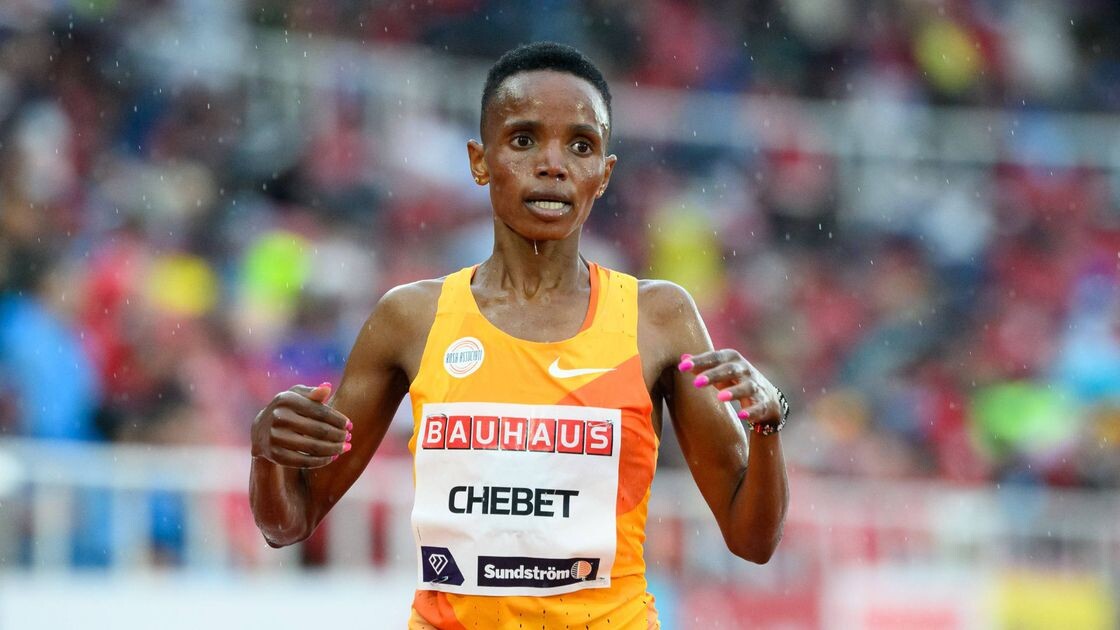
The world 5000m bronze medalist will be joined by her compatriot Edinah Jebitok, who was eighth at the World Cross in Bathurst and third in Atapuerca. The 1500m specialist was also a clear winner in San Sebastian last weekend.
World U20 cross-country champion Senayet Getachew and fellow Ethiopian Wede Kefale – who was 15th in the senior women’s race at this year’s World Cross – will also be in contention for a podium place.
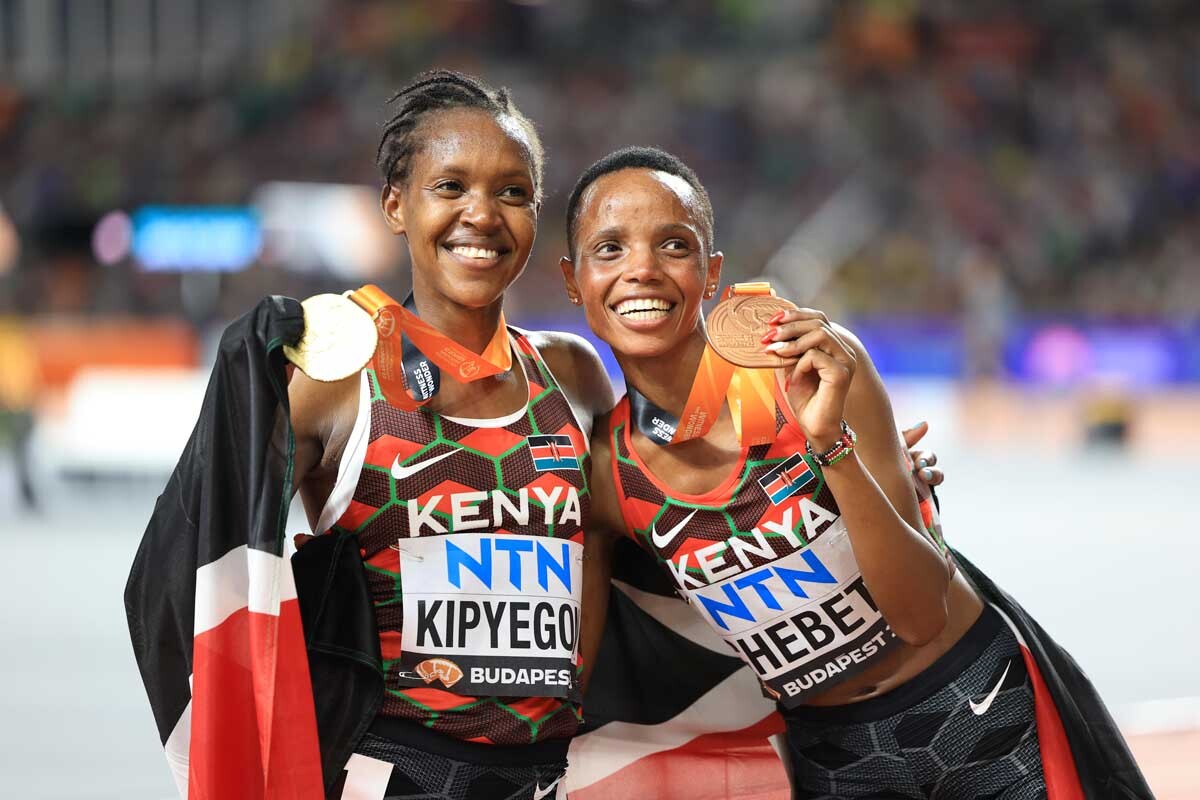
Uganda's Anne Chelangat, 13th at the World Cross and third last week in San Sebastián, is another strong contender.
World and Olympic finalist Nadia Battocletti will be racing in Santiponce for the first time. She recently placed fifth in the 5km at the World Road Running Championships in Riga, finishing just 10 seconds shy of Chebet, so will be trying her best to stay in contention with the Kenyan on Sunday.
The line-up also includes Spanish steeplechasers Irene Sánchez-Escribano and Carolina Robles plus European U20 cross-country champion María Forero and Britain's Amelia Quirk, who was 25th in Bathurst.
The men’s 9.9km contest looks set to be a three-way battle between the Kenyan pair of Ronald Kwemoi and Ishmael Kipkurui plus Burundi's Rodrigue Kwizera.
The 28-year-old Kwemoi will compete for the third consecutive time on Spanish ground after his runner-up spot in Atapuerca two weeks ago and a narrow win over Kipkurui last Sunday in San Sebastián. On that occasion, world U20 cross-country champion Kipkurui pushed hard for most of the race but he couldn't avoid being overtaken by world U20 1500m record-holder Kwemoi in a thrilling sprint finish with the two men being separated by one second.
Their Kenyan compatriot Hillary Chepkwoni, fresh from a huge PB of 58:53 at the Valencia Half Marathon three weeks ago, will also be on the start line.
Kwizera, co-winner of the 2022-2023 World Cross Country Tour, finished eighth at the World Cross Country Championships in Bathurst at the start of 2023. More recently he placed third in Atapuerca where he was beaten by Kwemoi over the closing stages but grabbed an easy victory last weekend in his Spanish base of Castellón at a low-key cross country race.
Eritrea’s Aron Kifle, the 2018 world half marathon bronze medalist, will be making his 2023 cross country debut on Sunday. He’ll be joined by compatriot Merhawi Mebrahtu, the world U20 5000m silver medalist, who finished second in Amorebieta and ninth in Atapuerca the following week.
Uganda’s 2022 world 5000m bronze medalist Oscar Chelimo, who recently finished third in San Sebastian, will contend for a top-five finish on Sunday. The 21-year-old will be joined by his compatriot Martin Kiprotich, who finished 18th at the World Cross in Bathurst.
The Spanish contingent will be headed by Mohamed Katir. The world 5000m silver medalist has been training in the altitude of Sierra Nevada since mid-October and will be back there right after the race for another week. He has planned a quiet cross-country campaign with only a few appearances.
Other Spaniards in the line-up include the in-form Abdessamad Oukhelfen, who was fourth in San Sebastian behind Chelimo, 2017 European cross-country silver medalist Adel Mechaal and national silver medalist Sergio Paniagua.
Adrian Ben, who finished fourth over 800m at this year’s World Championships, could also be in contention. The 25-year-old was a 1500m specialist at the beginning of his career and there's talk of a potential move back up in distance ahead of the Paris Olympics. Ben is fresh from a cross country victory over 5km in his native Lugo last Sunday when he defeated steeplechaser Víctor Ruiz.
Other noteworthy middle-distance specialists in the line-up include European U20 1500m and 5000m champion Niels Laros of the Netherlands and Britain's newly-minted world mile silver medalist Callum Elson.
Famous previous winners in Santiponce include Kenenisa Bekele (2003, 2004 and 2007), Fernando Mamede (1984 and 1985), Paul Kipkoech (1987 and 1988), Paul Tergat (1998 and 1999), Moses Kipsiro (2008 and 2009), Leonard Komon (2010 and 2011), Linet Masai (2010 and 2012) and Paula Radcliffe (2001), among others.
Weather forecasters predict a sunny and windless day with temperatures in the 20-22C range by the time of the event.
(11/10/2023) ⚡AMPby World Athletics
Cross internacional de Italica
The Cross Internacional de Itálica is an annual cross country running competition it will be held on 21st of November in Santiponce, near Seville, Spain. Inaugurated in 1982, the race course is set in the ruins of the ancient Roman city of Italica. As one of only two Spanish competitions to hold IAAF permit meeting status, it is one of...
more...Viola Chepngeno shares why she loves competing on hilly courses ahead of Boston Half Marathon return
Viola Chepengeno has shared her love for hilly courses as she gears up for her return to the Boston Half Marathon to defend her title.
Viola Chepngeno has disclosed her love for hilly courses as she gears up for her title defense at the Boston Half Marathon on Sunday, November 12.
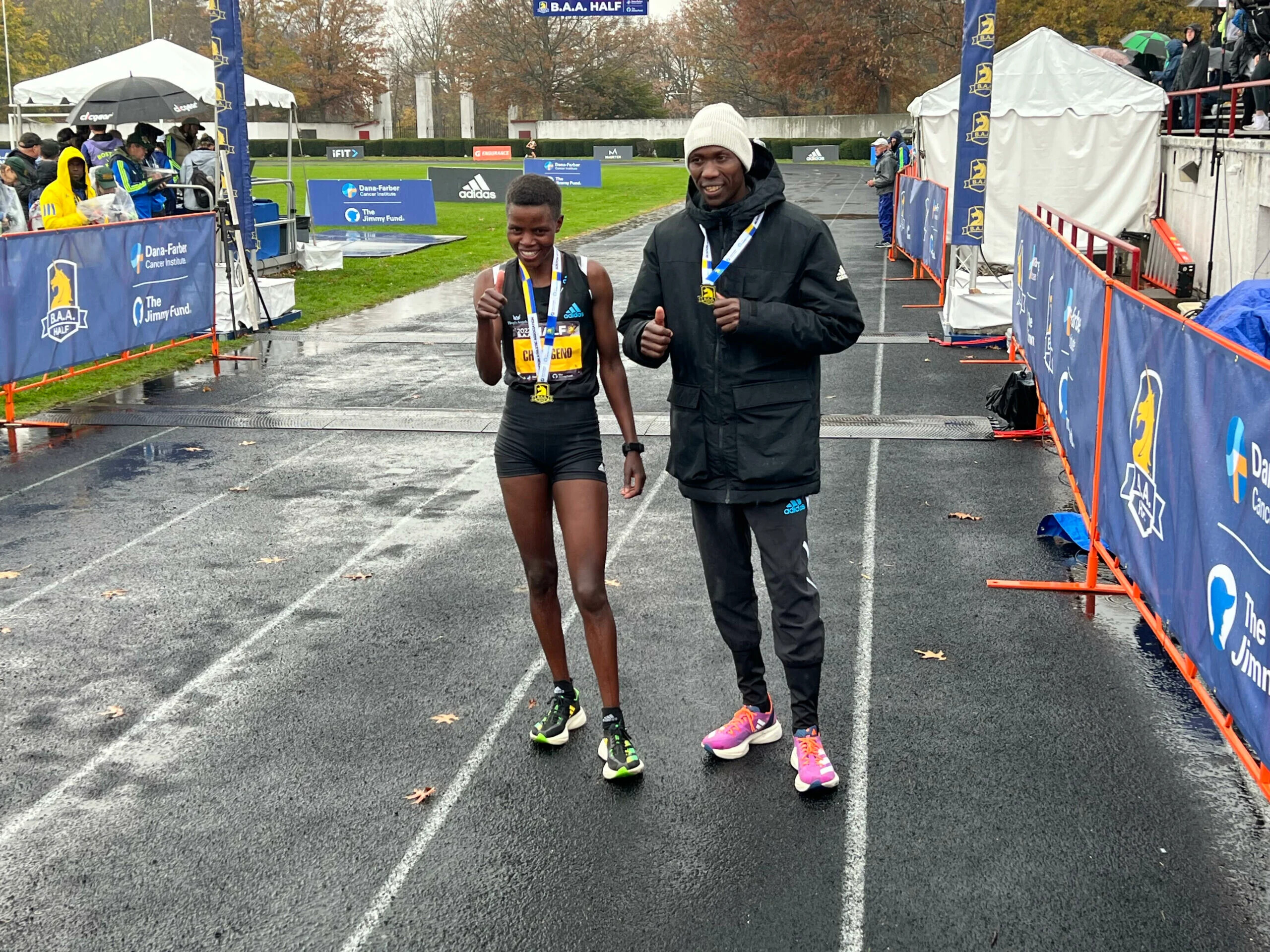
Chepngeno observed that many people do not fancy competing on such tough courses but insisted that she is among the few who love competing in such environments.
She explained that she trains in Keringet, one of the hilliest places in Kenya and that’s where her love for the hilly courses stems from.
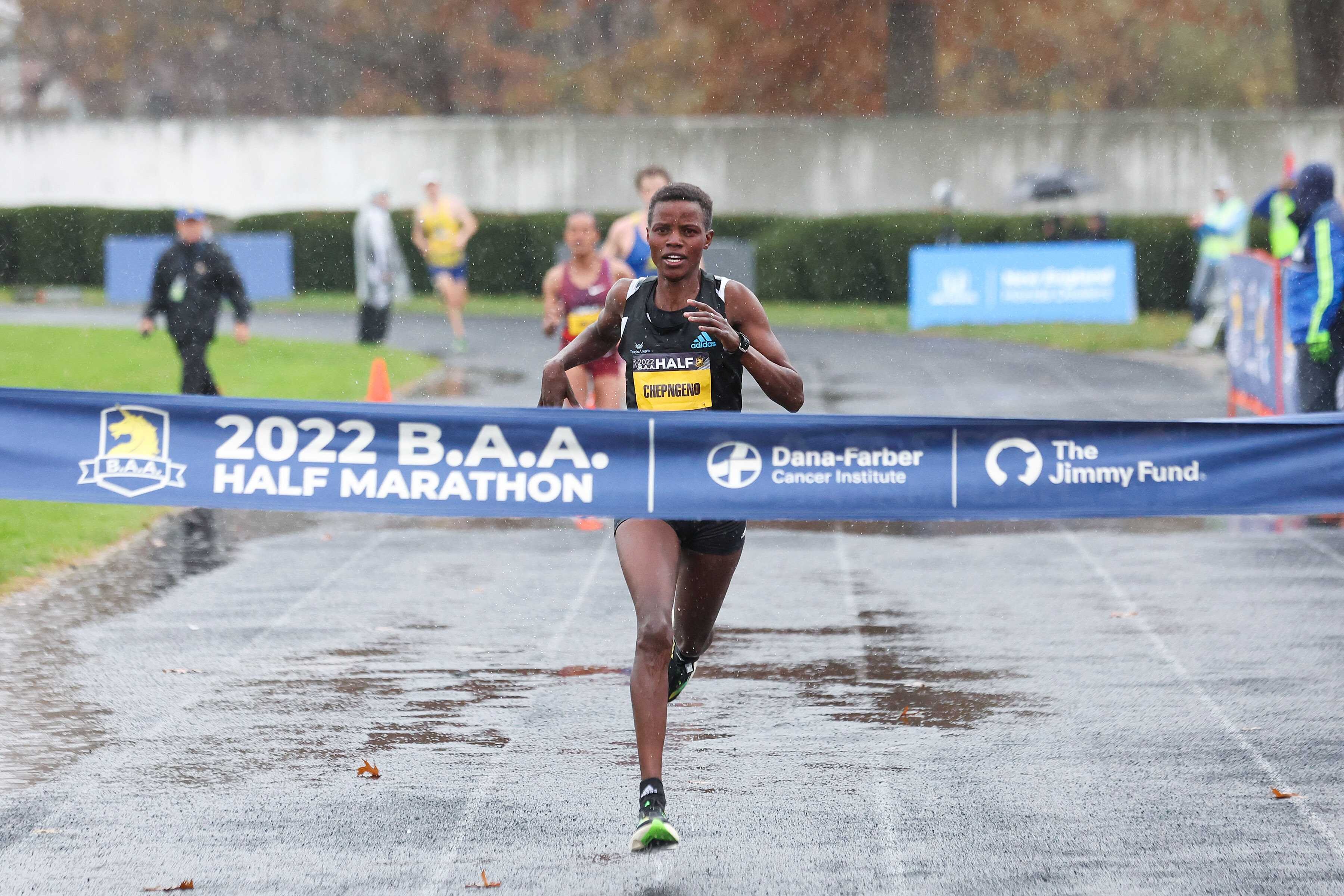
She expressed her excitement about returning to Boston, where she clocked 1:10:40 to win the race last season.
“I really like Boston and I am very happy to be coming back to defend my title this year. The course for the B.A.A. Half Marathon is great," she said.
"Some might call it challenging but I love it. Keringet, where I live in Kenya, is known to be one of the hilliest places to train in Kenya so I know I am good over tough courses."
The Kenyan added that she will be looking to make her full marathon debut at the Boston Marathon. Speaking about her Boston Half Marathon preparations, she noted that she is ready and capable of doing wonders.
She also noted that the crowds are a vital part of her success story. She recalled that her fans propelled her to victory last year and is keen to lower her Personal Best time this time round.
“Perhaps one day I will run the Boston Marathon too! I am mentally and physically prepared for the race, and I know what I am capable of doing. I just have to be ready for a tactical race with lots of quality opponents also competing," she added.
:The crowds were really amazing last year. They cheered me on and made me push even harder to achieve my goals, so I am hoping they can help me improve this year.
"I prefer warm weather - which we definitely didn’t get last year but I managed to do it so I’ll take whatever we get.”
(11/10/2023) ⚡AMPby Abigael Wuafula
Geoffrey Koech reveals what he is banking on ahead of Boston Half Marathon
Defending champion Geoffrey Koech has disclosed what he will be banking on as he gears up for the Boston Half Marathon on Sunday November 12.
The 30-year-old will be banking on his past victory and mastery of the course to propel him to his second successive victory on Sunday. He had a great build-up towards the race and will hope to execute it well.
He has so far competed in three half marathons where he finished third in two races, Publix Atlanta Half Marathon and Prague Half Marathon. He finished fourth at the Principality Cardiff Half Marathon.

“It feels very nice to be coming back to Boston, knowing that I am the reigning champion. I have trained specifically for this year now that I know the course," he said.
"Even though the course is challenging, I like it and I think my experience from last year gives me an advantage over those who will be doing it for the first time.
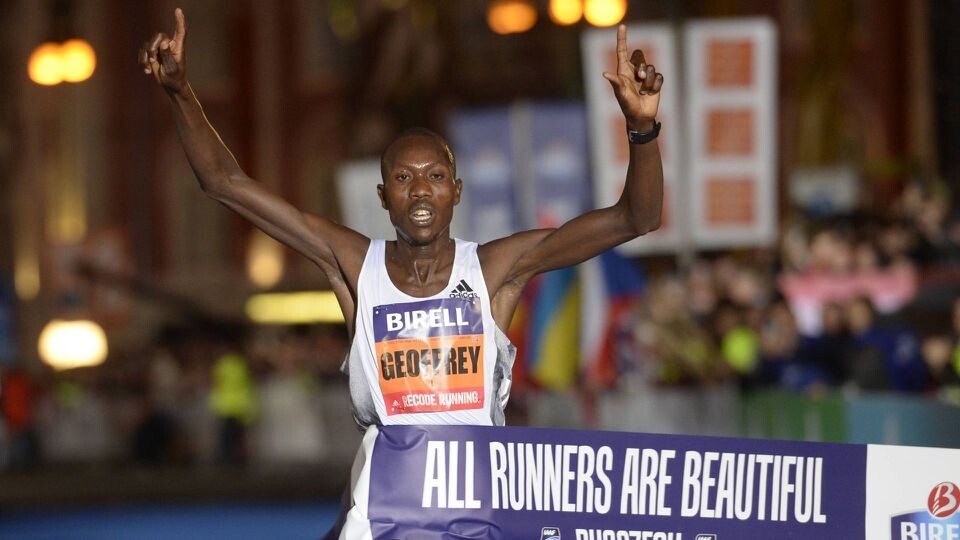
"We have hilly courses around my hometown of Kericho, so I have been adding some tough routes into my training, so my legs are used to it,” Koech said as per the race organisers.
Koech also explained that the fans give him a lot of encouragement and make him confident of winning the race.
He will be hoping that this time around, the fans will also play a huge role as he targets to win the race once again.
“The spectators gave me a lot of encouragement last year and made the course feel a lot easier. It’s so inspiring to be cheered all through the course," said Koech.
"The people of Boston are very friendly and welcoming to me. My goal is to win again this year so I hope I can do that and make the fans happy again.
"I like to run in temperatures between 59-64F and preferably no rain! I wonder what we will get on race day! See you soon, Boston."
(11/10/2023) ⚡AMPby Abigael Wuafula
B.A.A. Half Marathon
Dana-Farber and the Jimmy Fund have partnered with the B.A.A. in the Half Marathon for 13 years as the race’s presenting sponsor. Through this relationship, team members have collectively raised more than $5 million to support groundbreaking cancer research, and enabled Dana-Farber scientists and clinicians to positively impact the lives of cancer patients around the world. Dana-Farber runners often participate...
more...Holding your breath on runs could help keep you from getting sick, study finds
Holding your breath for five seconds after coming face-to-face with someone on a run could help cut your risk of catching COVID-19, the flu and other airborne illnesses, according to a new study out of Japan.
The finding comes from researchers at the University of Tsukuba, who investigated the link between aerosol dynamics and viral exposure risk during movement and face-to-face interactions.
For the study, researchers used a full-scale mobile mannequin that was propelled at different speeds to simulate walking (5 km/h), jogging (10 km/h), running (15 km/h) and sprinting (20 km/h), and used specialized equipment to visualize the “flow field” of aerosol particles from exhaled air. The researchers compared the differences between aerodynamic characteristics with and without ventilation and their effects on the risk of exposure to viruses.

They found that, regardless of pace and whether the face-to-face encounter happens in a non-ventilated or fully ventilated area (such as outdoors), the risk of viral airborne transmission remains highest within five seconds of a face-to-face encounter, and then falls off sharply.
Although this five-second window of peak transmissibility after face-to-face contact holds true whether walking or sprinting, pace may play a factor in the risk of transmissibility. Researchers found that as speed increases, especially in a non-ventilated area, the number of aerosol particles a runner is exposed to after an interaction decreases.
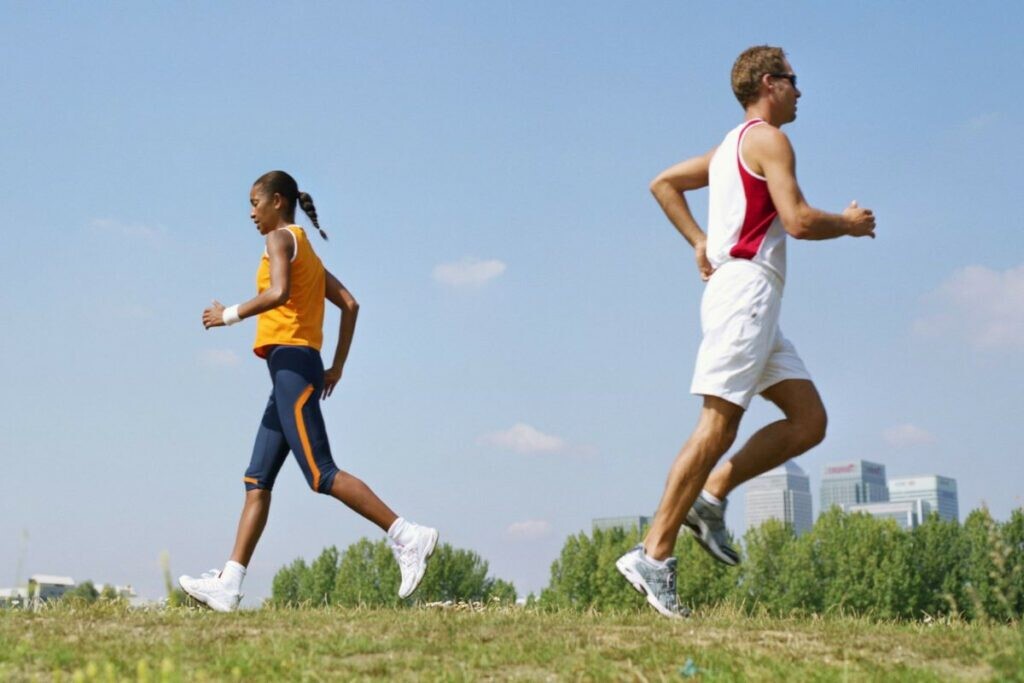
Of note to runners worried about contracting an illness during exercise are the three “risk-hedging behaviours” the researchers say “may greatly reduce the risk of viral exposure” during face-to-face encounters during runs.
Among their recommendations is “interrupting … inhalation” during the five seconds of peak transmissibility risk that follows a face-to-face encounter, either by holding your breath or exhaling for five seconds after passing someone on your run.
The researchers also recommend maintaining a distance of at least one metre from anyone coming at you from the opposite direction, and positioning yourself upwind from the other person, when possible.
“These actions are particularly effective during the critical (five-second) interaction period,” the researchers write. “Based on our findings, this study has implications for reducing aerosol-mediated transmission
(11/09/2023) ⚡AMPby Paul Baswick
Edwin Kiptoo is targeting Athens Marathon course record
Kenya’s Edwin Kiprop Kiptoo will make his debut in Greece at the 40th edition of the Athens Classic Marathon slated for this Sunday (12) in Athens, Greece.
The 30 year-old comes to this race with a life time best of 2:06.52 that he got last year at the Haspa Marathon where he finished in seventh place. This year in March he participated at the Seoul Marathon, finishing in seventh place in a time of 2:08.56.
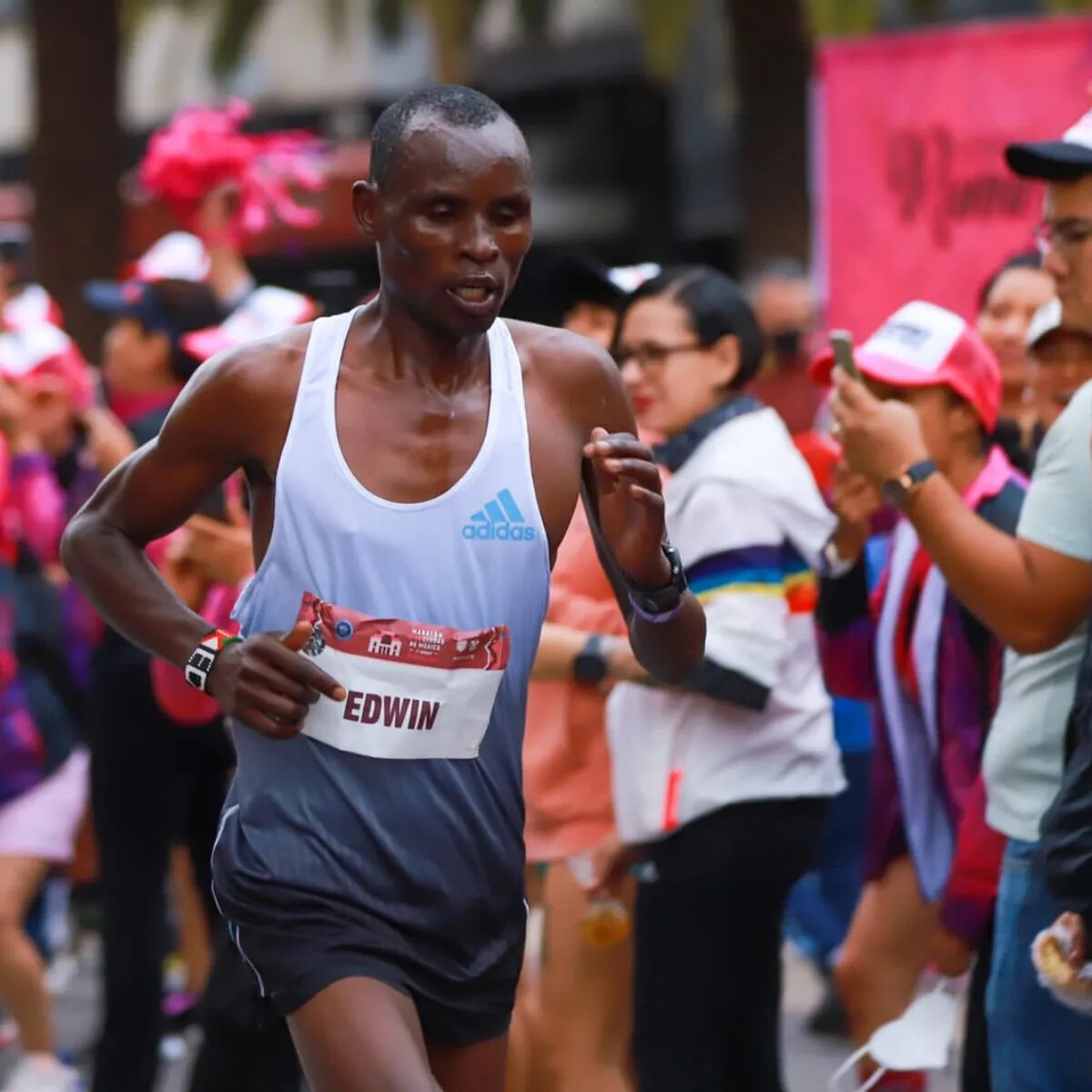
Kiptoo will not have an easy ride as he will have to get past his compatriot Rhonzas Lokitam Kilimo who comes to this race with the second fastest time on paper of 2:08.08 that he got this year in April at the Haspa Marathon where he crossed the finish line in fifth place.
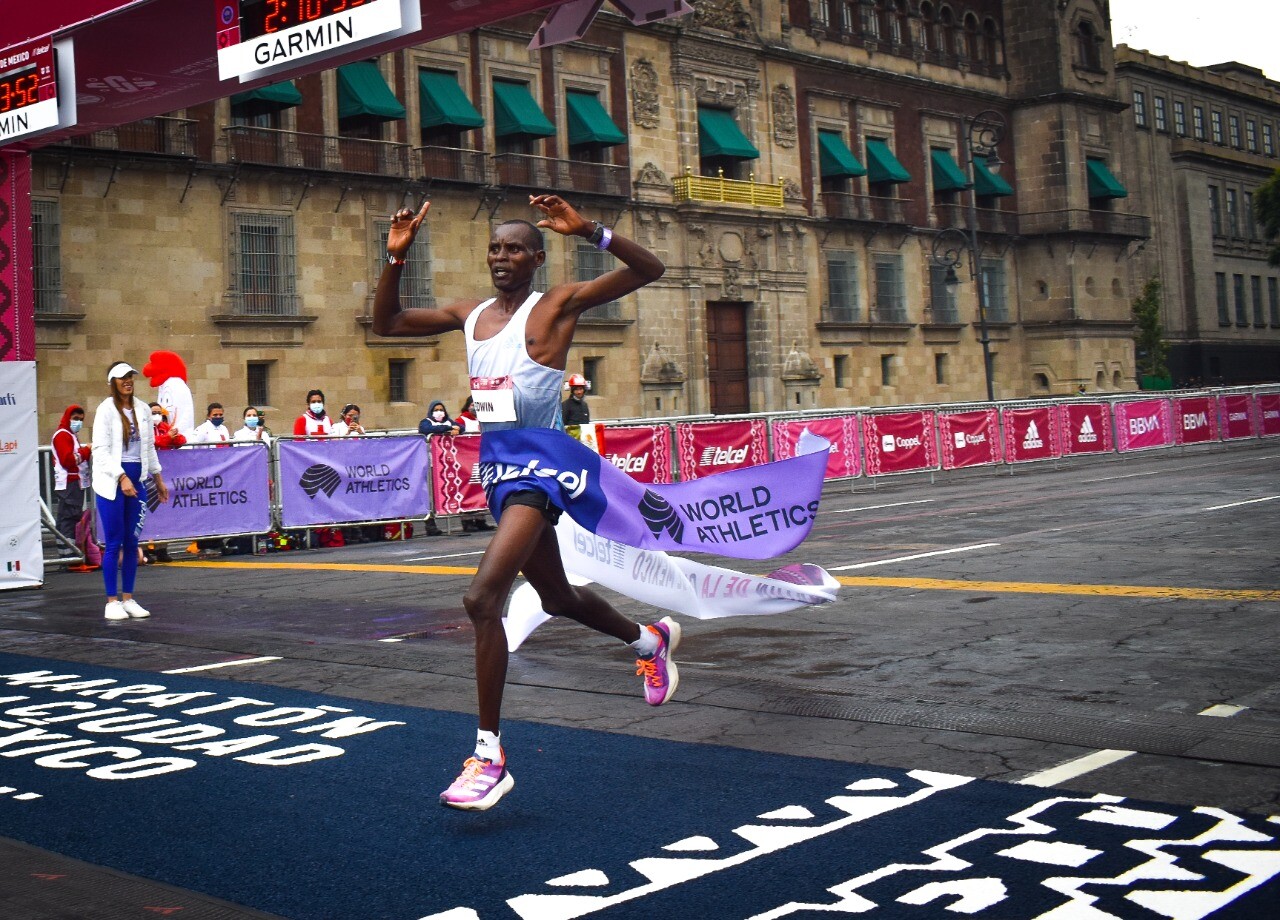
The two Kenyans will face-off with the defending champion and the Greece National Record Holder, Charalambos Pitsolis who won last year’s edition in time of 2:23.44. The 30 year-old who comes to this race with a personal best of 2:21.23 that he got early this year in Germany. Pitsolis will have an acid test from the Kenyans as the race organizers invited International elite athletes after three years of absence due to Covid-19 pandemic.
The organizers have assembled a strong deep elite field to try and chase the race course record of 2:10.37 that was set nine years ago by Felix Kipchirchir Kandie from Kenya.
(11/09/2023) ⚡AMPby John Vaselyne
Athens Marathon
The Athens Classic (authentic) Marathon is an annual marathon road race held in Athens, Greece, normally in early November. The race attracted 43.000 competitors in 2015 of which 16.000 were for the 42.195 km course, both numbers being an all-time record for the event. The rest of the runners competed in the concurrent 5 and 10 kilometers road races and...
more...Sifan Hassan, Kelvin Kiptum, Catherine Debrunner and Marcel Hug have been crowned Abbott World Marathon Majors Series XV champions
Sifan Hassan, Kelvin Kiptum, Catherine Debrunner and Marcel Hug have been crowned Abbott World Marathon Majors Series XV champions.
The series concluded at the 2023 TCS New York City Marathon.
Kiptum and Hug already had their victories assured, with Kiptum winning the TCS London Marathon and then the Bank of America Chicago Marathon in a world record 2:00:35 to seal the men’s open division title.
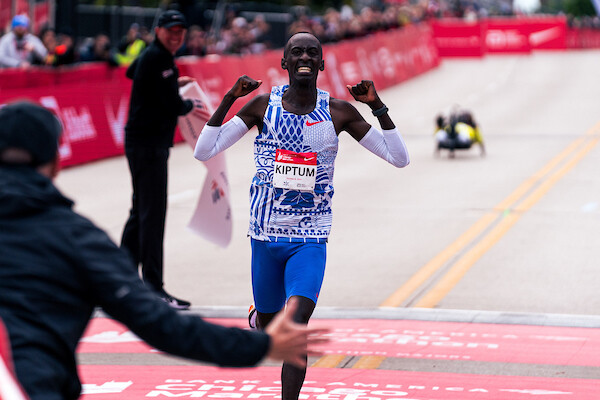
Wheelchair racer Hug had swept all five Majors before New York and promptly made it six from six with a dominant display in the final event. Hug was presented with a special gold Six Star medal to mark the accomplishment.
Hassan, with wins in London and Chicago, could only be caught by Kenyan Hellen Obiri, who needed to win in New York to add to her Boston victory and tie Hassan at the top of the leaderboard.
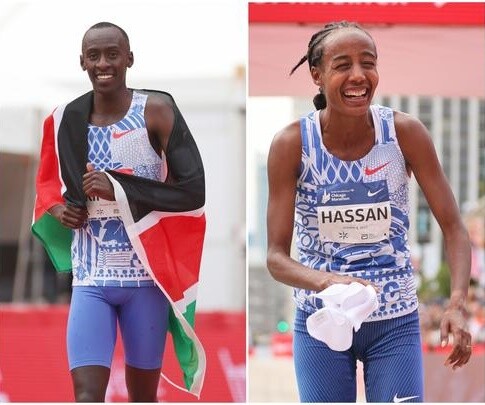
Obiri duly obliged, out-kicking Letesenbet Gidey in Central Park to claim the race victory.
That meant the six race directors of the Abbott World Marathon Majors had to each vote for their choice to be the 2023 women’s series champion. The vote went the way of Hassan, who set the second fastest time in history of 2:13:44 when she won in Chicago.
For Debrunner, it was all in her own hands. She went into the final race three points behind her Swiss compatriot Manuela Schär, with defending series champion, the USA’s Susannah Scaroni, two points further back and Madison de Rozario of Australia also within striking distance of the title if she could win in New York.
Debrunner left all her rivals behind from the gun, descending the Verrazzano-Narrows Bridge with a commanding lead that she never relinquished.
She went on to break Scaroni’s course record, finishing in 1:39:32 to take the win, the record bonus and the series.
It caps a stunning fall season for Debrunner, who shot into contention by winning the BMW BERLIN-MARATHON in a world record time before adding the Bank of America Chicago Marathon to her list of successes two weeks later.
Abbott World Marathon Majors CEO Dawna Stone said: “We are thrilled to see the series end in such spectacular fashion in New York City, and to have four such incredible series champions to celebrate.
“Series XV has been one for the history books, with three new world records set across the divisions and a host of course and regional records falling as well.
“Our six races continue to raise the bar of elite performance in the marathon, and we congratulate Sifan, Catherine, Kelvin and Marcel on their fantastic achievements in this series.”
Series XVI will begin at the Tokyo Marathon on March 3, 2024.
(11/09/2023) ⚡AMPby AbbottWMM
Hellen Obiri eager to add missing accolade in her cabinet at 2024 Olympic Games
Hellen Obiri has expressed her interest in competing for Team Kenya at the Olympic Games where she will be keen to add the only missing accolade in her cabinet.
Newly crowned New York City Marathon champion Hellen Obiri will be looking to add an Olympic gold medal to her decorated cabinet ahead of the games next year.
At the Olympics stage, Obiri has only managed to win silver in the past and insists gold is the only achievement she is yet to accomplish but she will be hoping to seal the deal next year.

The two-time Olympic 5000m silver medalist noted that if she makes it to Team Kenya, she will burn the midnight oil to ensure all the glory comes back to the country.
“If I get a chance (to be in the Kenyan team), I will work hard to go and get the gold medal because it’s the only one I’m missing,” Obiri said.
The reigning Boston Marathon champion also explained that she is uncertain about making Team Kenya for the Olympics but her fingers remain crossed.
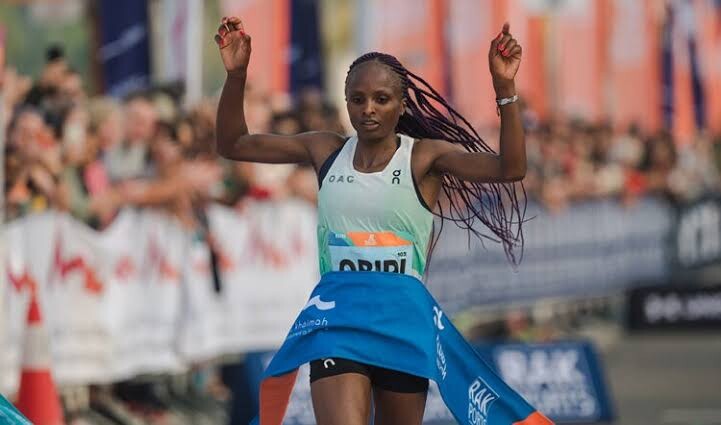
“Hopefully (I’ll be in the Kenyan team) but I’m only going to talk about it if I’m actually chosen to compete.
"If I can get time and if I get selected, I will be willing to compete. You know in Kenya, selecting a team is tough owing to the fact that so many ladies have run fast.
"They said they will name the team before the end of the year and I do hope I will make the cut to the team,” Obiri said.
Meanwhile, the two-time World 5000m champion made her marathon debut at the 2022 New York City Marathon where she finished sixth.
She then went for the 2023 Boston Marathon earlier this year where she dominated before stamping her authority in the 2023 New York City Marathon.
(11/09/2023) ⚡AMPby Abigael Wuafula
Paris 2024 Olympic Games
For this historic event, the City of Light is thinking big! Visitors will be able to watch events at top sporting venues in Paris and the Paris region, as well as at emblematic monuments in the capital visited by several millions of tourists each year. The promise of exceptional moments to experience in an exceptional setting! A great way to...
more...Running may boost inflammation-fighting cells that enhance performance, study finds
A new study reported in The Harvard Gazette has shed more light on how exercise helps the body boost its ability to fight inflammation, which in turn improves performance.
The study, done in mice, suggests the possible role of the exercise in both reducing inflammation and improving performance. Exercise triggers natural inflammation, and our bodies counter the inflammation using something called T-cells or Tregs, which also seem to enhance our ability to use energy as fuel and improve our physical endurance.
The study
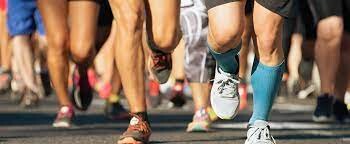
Inflammation is the body’s natural response to injury or infection, but prolonged or chronic inflammation can contribute to the development of heart disease, cancer and autoimmune conditions. Exercise causes temporary damage to the muscles and unleashes an inflammatory response–and this not only helps our bodies become stronger at fighting inflammation in general, but also may help us become faster and stronger athletes.
A team at Harvard Medical School analyzed what happens in cells that were taken from the hind leg muscles of mice that ran on treadmills. The team then compared them with muscle cells obtained from sedentary mice.

The muscle cells of the mice that ran on treadmills showed signs of inflammation and elevated levels of the inflammation-fighting T-cells or Tregs. Researchers discovered that not only did the Tregs lower exercise-induced inflammation, but they also were responsible for the broader benefits seen in regular exercises.
The animals who didn’t exercise still experienced muscle inflammation, but it was not combated by Tregs. Their muscle cells also had swollen mitochondria (a sign of metabolic abnormality). The animals lacking Tregs did not experience the same whole-body benefits from exercise, and had diminished aerobic capacity.
The takeaway
Exercise not only helps our bodies become better able to fight off inflammation, but the inflammation-response cycle that exercise generates may also help build muscular endurance.
“Our research suggests that with exercise, we have a natural way to boost the body’s immune responses to reduce inflammation,” said Diane Mathis, professor of immunology in the Blavatnik Institute at Harvard. “The immune system, and the Tregs cell arm in particular, has a broad impact on tissue health that goes beyond protection against pathogens and controlling cancer. Our study demonstrates that the immune system exerts powerful effects inside the muscle during exercise.”
While research on humans is needed, this research is an important step in understanding how, exactly, exercise makes us healthier. “Mice are not people,” researchers explained, “and the findings remain to be replicated in further studies. However, the study is an important step toward detailing the cellular and molecular changes that occur during exercise and confer health benefits.”
(11/08/2023) ⚡AMPby Keeley Milne
Men's Record-Holder To Defend Title At Manchester Road Race
Defending Manchester Road Race men's division champion and course record-holding Conner Mantz will return for the 2023 race.
Mantz, who won two NCAA Division 1 cross country titles when he ran for Brigham Young University, rocketed around the 4.748-mile course in 2022 with the time of 21:04. He knocked 12 seconds off the prior mark of 21:16 that Edward Cheserek set in 2018.
Also expected to be at the starting line will be last year’s runner-up, Morgan Beadlescomb.
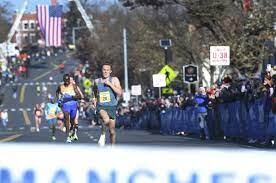
Beadlescomb, a former Michigan State All-American, shadowed Mantz across the finish stripe last November with a time of 21:05.
Beadlescomb’s time is the second fastest-ever run on the Manchester course. Last year’s elite field was so strong that the first five runners to finish all eclipsed Cheserek’s former record, according to race officials.
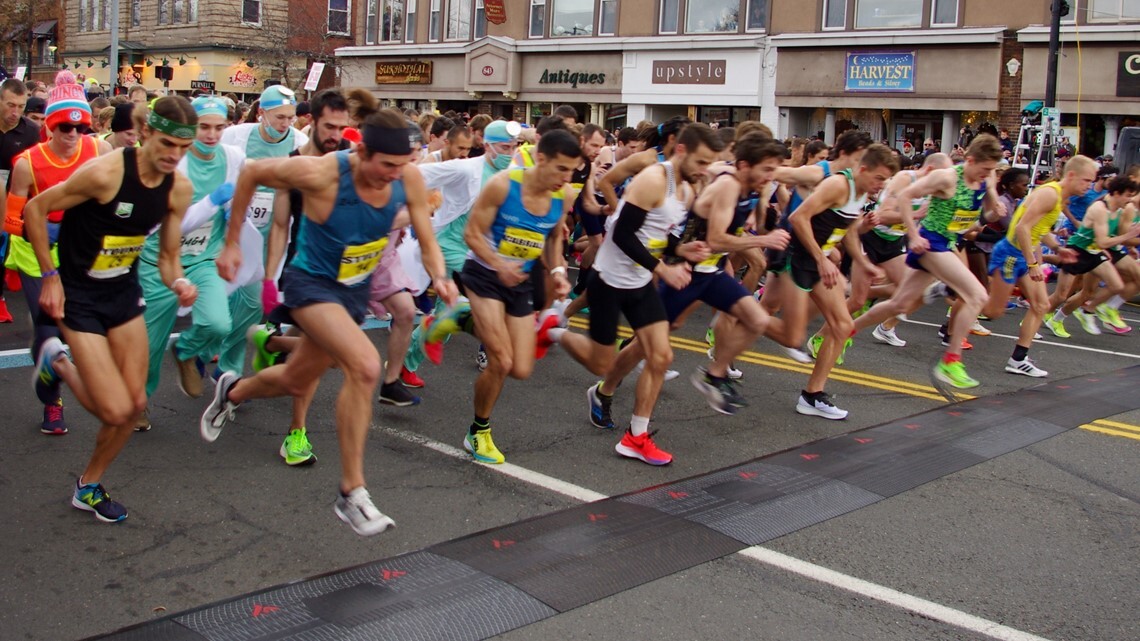
“We are extremely pleased that last year’s top two finishers, Conner Mantz and Morgan Beadlescomb, are returning this year,” said Dr. Tris Carta, president of the Manchester Road Race Committee. “It is going to be another very exciting race."
Mantz placed sixth last month at the Chicago Marathon with the personal record and Olympic standard qualifying time of 2:07:47. Beadlescomb, 25, ran a personal best time of 13:08.82 for 5000 meters at a meet in Los Angeles in May and won the USATF national 5-K championship at the Abbott Dash to the Finish Line 5-K in 13:44 on Nov. 4th.
The 87th Manchester Road Race, which was recognized as a 2023 World Athletics Label Event, will be held on Thanksgiving Day, Nov. 23, at 10 a.m. It starts and finishes on Main Street in Manchester, in front of St. James Church. The road race is organized by 500 volunteers from the Manchester Road Race Committee, with support from the Town of Manchester.
(11/08/2023) ⚡AMP
Manchester Road Race
The Manchester Road race is one of New England’s oldest and most popular road races. The 86th Manchester Road Race will be held on Thanksgiving Day. It starts and finishes on Main Street, in front of St. James Church. The Connecticut Sports Writers’ Alliance recently honored the Manchester Road Race. The CSWA, which is comprised of sports journalists and broadcasters...
more...Two stair workouts to build unstoppable strength
Stair workouts are deceptively simple, and the first few moments of a stair session can seem positively easy. Wait a few minutes, though, and the leg (and arm, and core) burn will kick in. Tossing a stair session into your regular training mix offers a change of pace and terrain, and will build strength while improving cardiovascular fitness.
You can easily adapt any of these stair workouts to your fitness level by adding time to your warmup and cooldown or by increasing or decreasing repeats. Want your stair workout to mimic a more standard hill session? Warm up for 10 minutes, spend 30-45 minutes moving quickly up your chosen set of stairs using the walk down for recovery, with 10 minutes of cool-down running to wrap it up. To spice things up a little more, try one of these workouts.
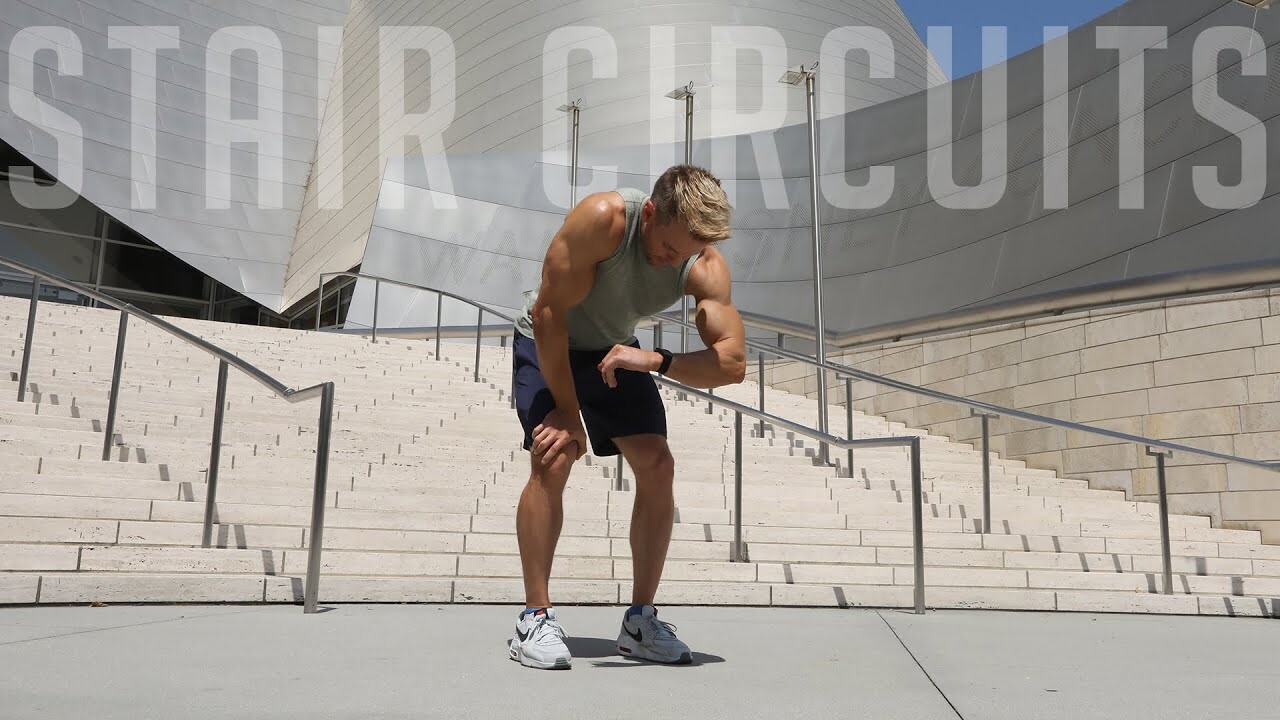
Stair intervals
Warm up with a 15-20 minute easy jog, or walk up and down the stairs for five to 10 minutes.
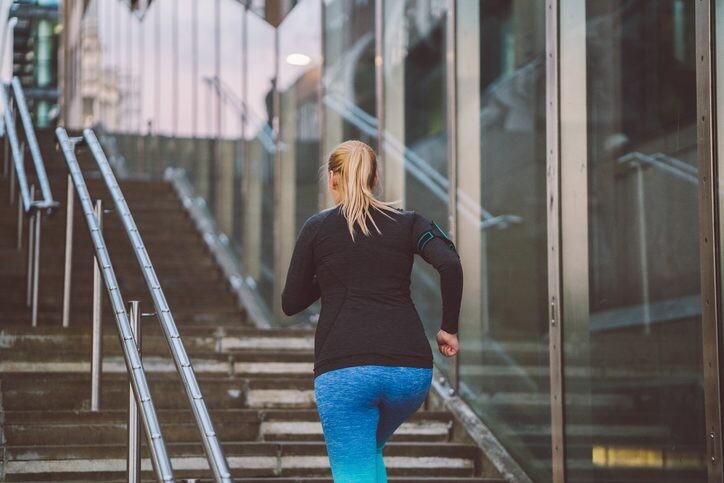
Run 10-12 x 30 seconds up the stairs, run easily back down to the bottom and take 20 seconds’ rest between intervals.
Cool down with a 10-15 minute easy run, or walk up and down the stairs for five to 10 minutes.
1.- Leg crusher workout
Warm up with a 15-20 minute easy run, or walk up and down the stairs for five to 10 minutes.
Run up and down the stairs for two minutes, followed by 60 seconds of rest.
2.- Leg crusher workout
Warm up with a 15-20 minute easy run, or walk up and down the stairs for five to 10 minutes.
Run up and down the stairs for two minutes, followed by 60 seconds of rest.
(11/08/2023) ⚡AMPby Keeley Milne
Mohamed Aagab of Campbellton, N.B., has received a three-year suspension
The reigning Vancouver and Montreal Half Marathon champion, Mohamed Aagab of Campbellton, N.B., has received a three-year suspension for an anti-doping rule violation by the Canadian Center for Ethics in Sport (CCES).
Aagab provided a urine sample after winning the 2023 BMO Vancouver Half Marathon on May 7, which revealed the presence of recombinant erythropoietin (rEPO), a prohibited peptide hormone used to improve performance by increasing the blood’s capacity to carry oxygen.
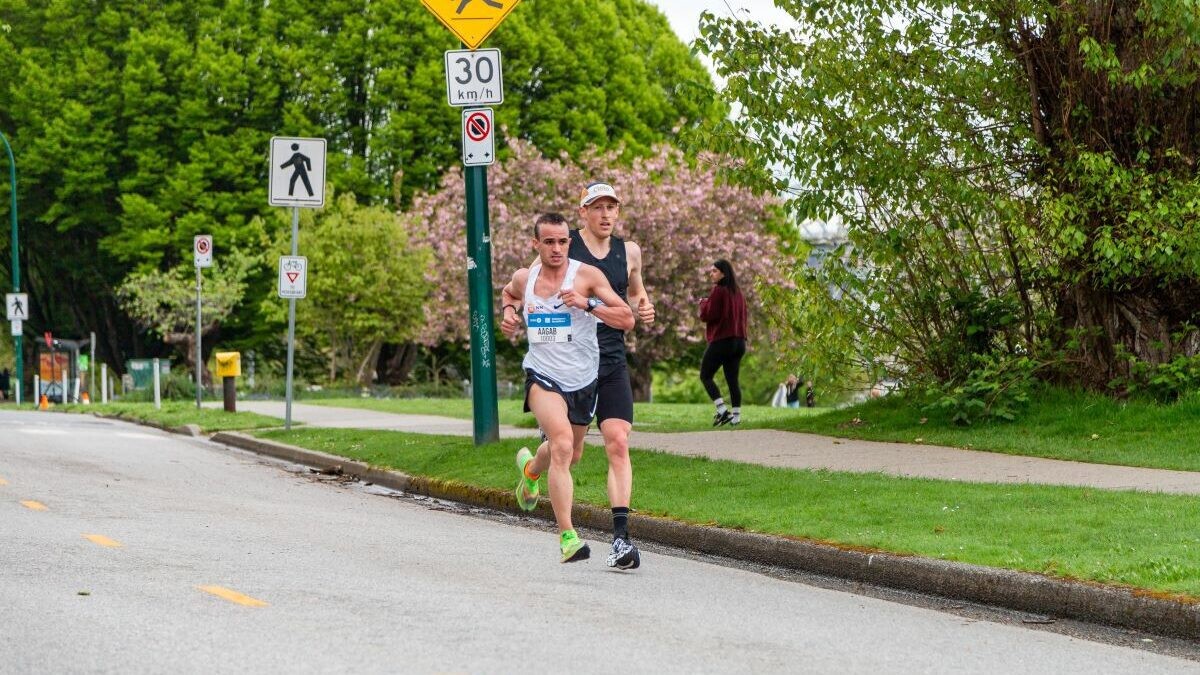
Aagab was born in Morocco but has lived in Campbellton, N.B., since 2018. He won the Quebec City Marathon in 2018 and the 2023 21K de Montréal, as well as the 2023 BMO Vancouver Half Marathon.
According to CCES, on Oct. 3, Aagab signed an Early Admission and Acceptance Agreement, admitting to the violation and accepting the period of ineligibility and all other consequences. As a result, the otherwise applicable four-year period of ineligibility was reduced by one year, in accordance with the Canadian Anti-Doping Program (CADP). Aagab’s three-year suspension, effective Sept. 12, 2023, terminates on Sept. 11, 2026.
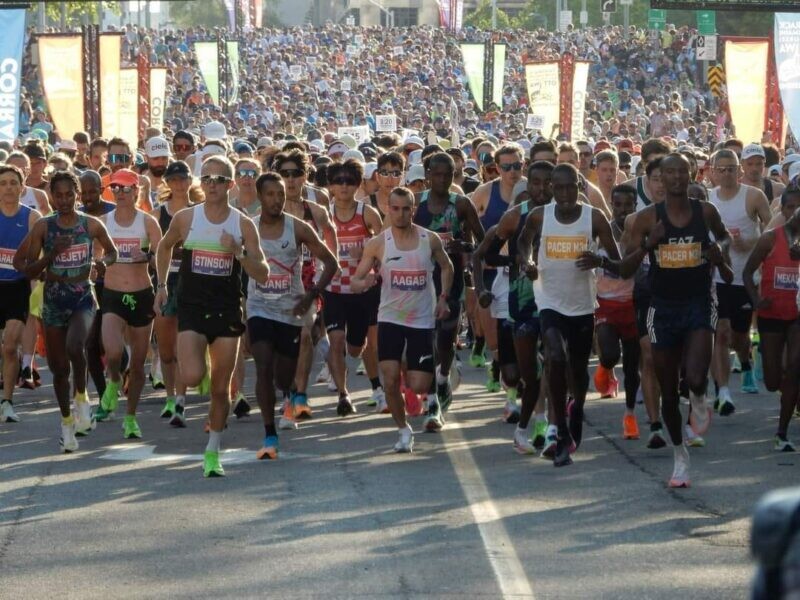
Aagab competed twice after his positive test on May 7, finishing 15th overall at the 2023 Ottawa Marathon in 2:18:34, finishing one spot behind top Canadian Lee Wesselius, who was 14th. He also ran in a 5,000m at the Hub City Classic in Moncton, N.B. on June 10, where he finished third, in 15:27. Both results will be disqualified, along with his Vancouver Half Marathon win.
In a statement to Canadian Running, Aagab’s agent, Yanatan Wegayehu, voiced disappointment with Aagab’s choices. “I was not aware that Mohamed ran the Vancouver half until I saw the results. His poor choices have negatively affected not only his career but also those around him,” said Wegayehu.
During the sanction period, Aagab is ineligible to participate in any capacity with any sport signatory to the CADP, including training with teammates.
This is the first distance running anti-doping case in Canada since David Freake of St. John’s, N.L. was given a four-year doping ban when he tested positive for EPO and several other banned substances after the 2019 Ottawa Marathon.
(11/08/2023) ⚡AMPby Marley Dickinson
BMO Vancouver Marathon
The BMO Vancouver Marathon is one of Vancouver’s most iconic marathon events. The event features a full marathon, marathon relay, half marathon, 8k run, and streets lined with thousands of spectators. Runners can expect to experience a little bit of everything that Vancouver has to offer as they run a straight course that starts at Queen Elizabeth Park, and finishes...
more...Isai Rodriguez, Sam Chelanga capture gold and silver for U.S. in men´s 10,000 meters at Pan American Games
Isai Rodriguez and Sam Chelanga made history Friday at the Pan American Games, becoming the first American teammates to take the top two spots in the men’s 10,000-meter final at Julio Martinez Pradanos National Stadium in Santiago, Chile.
Rodriguez, an All-American at Oklahoma State, and Chelanga – the collegiate 10,000 record holder from 2010 at Liberty – became the first pair of teammates from any country since 1979 and only the third tandem in meet history to secure gold and silver in the event.
Rodriguez prevailed in 28 minutes, 17.84 seconds, the fastest Pan Am Games winning performance since 2007, and Chelanga clocked 29:01.21, with Guatemala’s Alberto Gonzalez earning bronze in 29:12.24.
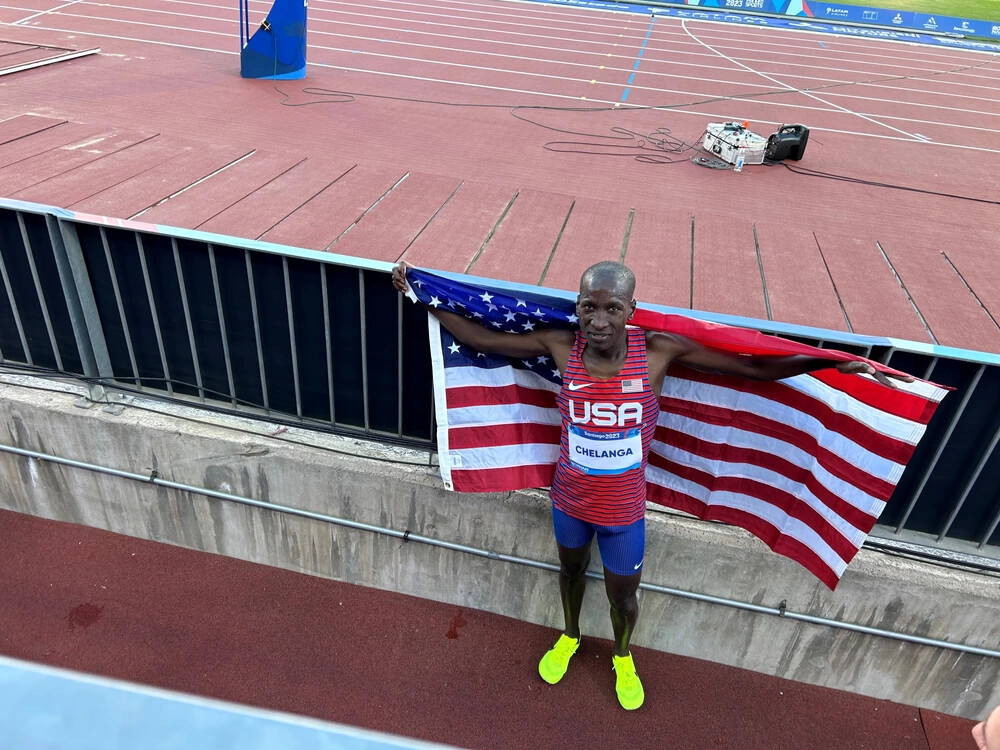
Rodriguez and Chelanga joined Mexico’s Rodolfo Gomez and Enrique Aquino in 1979, along with Luis Hernandez and Gomez in 1975 as the only teammates to sweep the top two spots in the men’s 10,000.
Rodriguez secured the first 10,000 gold for the U.S. since Bruce Bickford triumphed in 1987 in Indiana.
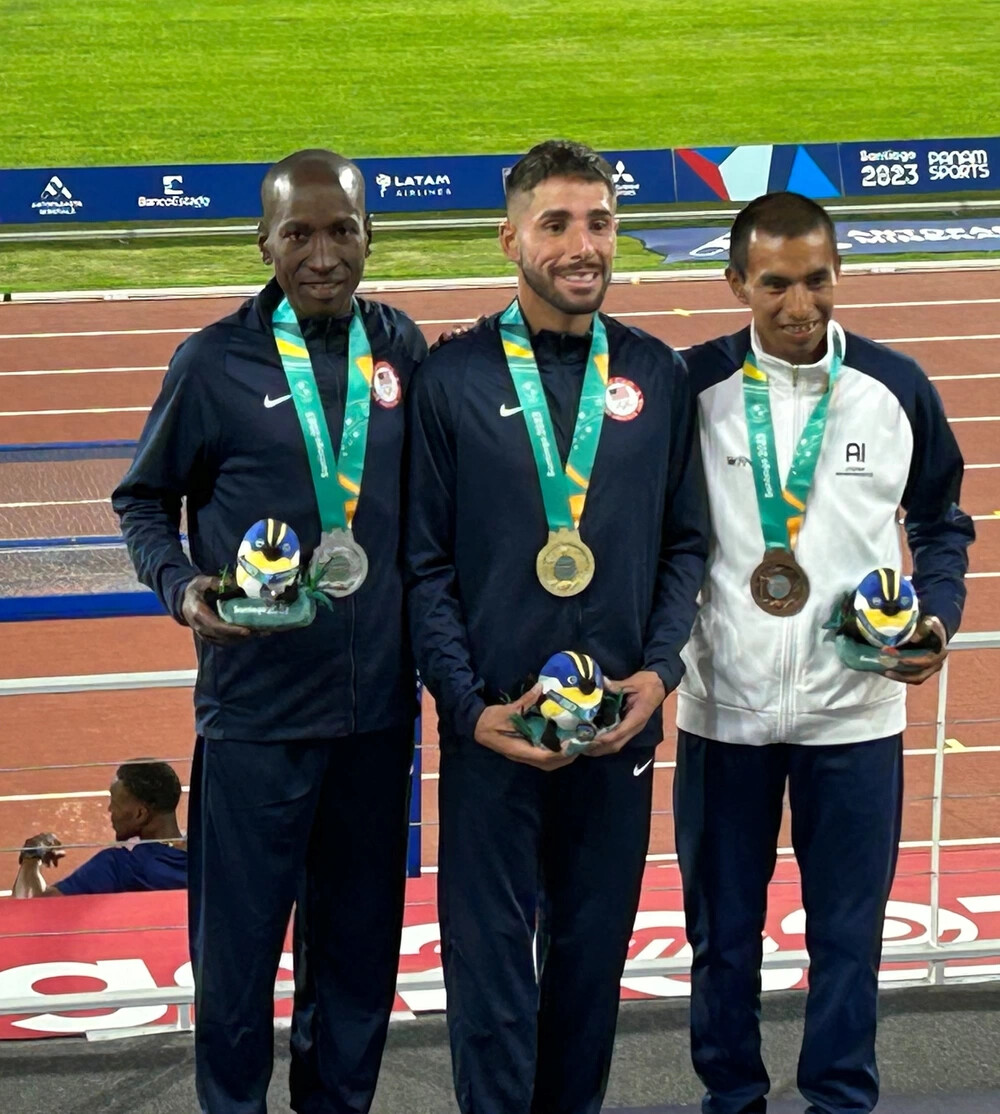
It marked the second straight Pan Am Games that the Americans had two athletes on the 10,000 podium, with Reid Buchanan and Lawi Lalang achieving silver and bronze in 2019 in Peru. The U.S. also had a pair of 10,000 medalists in 1967 in Winnipeg.
The Americans added bronze medals in the women’s 1,500-meter final and javelin throw competition, in addition to the men’s shot put, taking the lead with 19 overall medals entering the last day of the track and field schedule.
Brazil leads with seven gold medals and is second behind the Americans with 18 overall medals.
Darlan Romani triumphed for Brazil in the men’s shot put with a fifth-round effort of 70-1 (21.36m).
Mexico’s Uziel Aaron Munoz secured silver at 69-4.75 (21.15m), with former Arizona standout and NCAA Division 1 champion Jordan Geist edging fellow American athlete Roger Steen for bronze by a 67-4.25 (20.53m) to 67-3.50 (20.51m) margin.
Colombia’s Flor Denis Ruiz won the women’s javelin gold medal with a throw of 207 feet (63.10m) on her opening attempt.
Nebraska teammates Rhema Otabor, representing the Bahamas, and American competitor Maddie Harris captured silver and bronze, respectively. Otabor had a mark of 198-7 (60.54m) and Harris produced a throw of 197 feet (60.06m).
Venezuela’s Joselyn Brea completed a sweep of the women’s 1,500 and 5,000 titles, clocking 4:11.80 to edge Cuba’s Daily Cooper (4:11.86) and American athlete Emily Mackay (4:12.02).
Gianna Woodruff believed she had become the first female athlete from Panama to capture a Pan Am Games gold medal in any event, clocking 56.44 in the women’s 400-meter hurdles.
But Woodruff was later disqualified as a result of Rule 22.6.2, which states that an athlete is penalized after “knocking down or displacing any hurdle by hand, body or the upper side of the lead leg.”
Brazil’s Marlene Santos, who ran 57.18, was elevated to the event winner, with Daniela Rojas from Costa Rica earning silver in 57.41 and Montverde Academy of Florida senior Michelle Smith, representing the U.S. Virgin Islands, taking bronze in 57.53.
Jamaica’s Jaheel Hyde emerged victorious in the men’s 400-meter hurdles in 49.19.
Brazil’s Matheus Lima earned silver in 49.69 and Cuba’s Yoao Illas was the bronze medalist in 49.74.
Cuba’s Luis Enrique Zayas cleared 7-5.25 (2.27m) on his third attempt to prevail in the men’s high jump final.
Puerto Rico’s Luis Joel Castro achieved a 7-4.25 (2.24m) clearance on his first opportunity to capture silver, with Donald Thomas of the Bahamas grabbing bronze after achieving the height on his third try.
Cuba added two more medals in the men’s triple jump final, with Lazaro Martinez winning on his first attempt with a 56-4.75 (17.19m) performance.
Brazil’s Almir Dos Santos secured silver at 55-6.25 (16.92m) and Cuba’s Cristian Napoles took the bronze medal at 54-8 (16.66m), holding off American athlete Chris Benard and his fourth-place mark of 54-1 (16.48m).
(11/07/2023) ⚡AMPby Erik Boal
Pan American Games
The Pan American Games (also known colloquially as the Pan Am Games) is a continental multi-sport event in the Americas featuring summer sports, in which thousands of athletes participate in a variety of competitions. The competition is held among athletes from nations of the Americas, every four years in the year before the Summer Olympic Games. It is the second...
more...Caster Semenya: Double Olympic champion not ashamed of being different
Two-time Olympic champion Caster Semenya says she is "not going to be ashamed" of being "different", and will "fight for what is right" amid her ongoing dispute with athletics authorities.
Semenya, 32, was born with differences in sexual development (DSD) and cannot compete in female track events without taking testosterone-reducing drugs.
The South African wants to hold World Athletics to account for what she says is discrimination against athletes with hyperandrogenism and recently said she is turning her attention to "winning battles against the authorities" rather than collecting medals, with competing at the Paris 2024 Olympics no longer a goal.
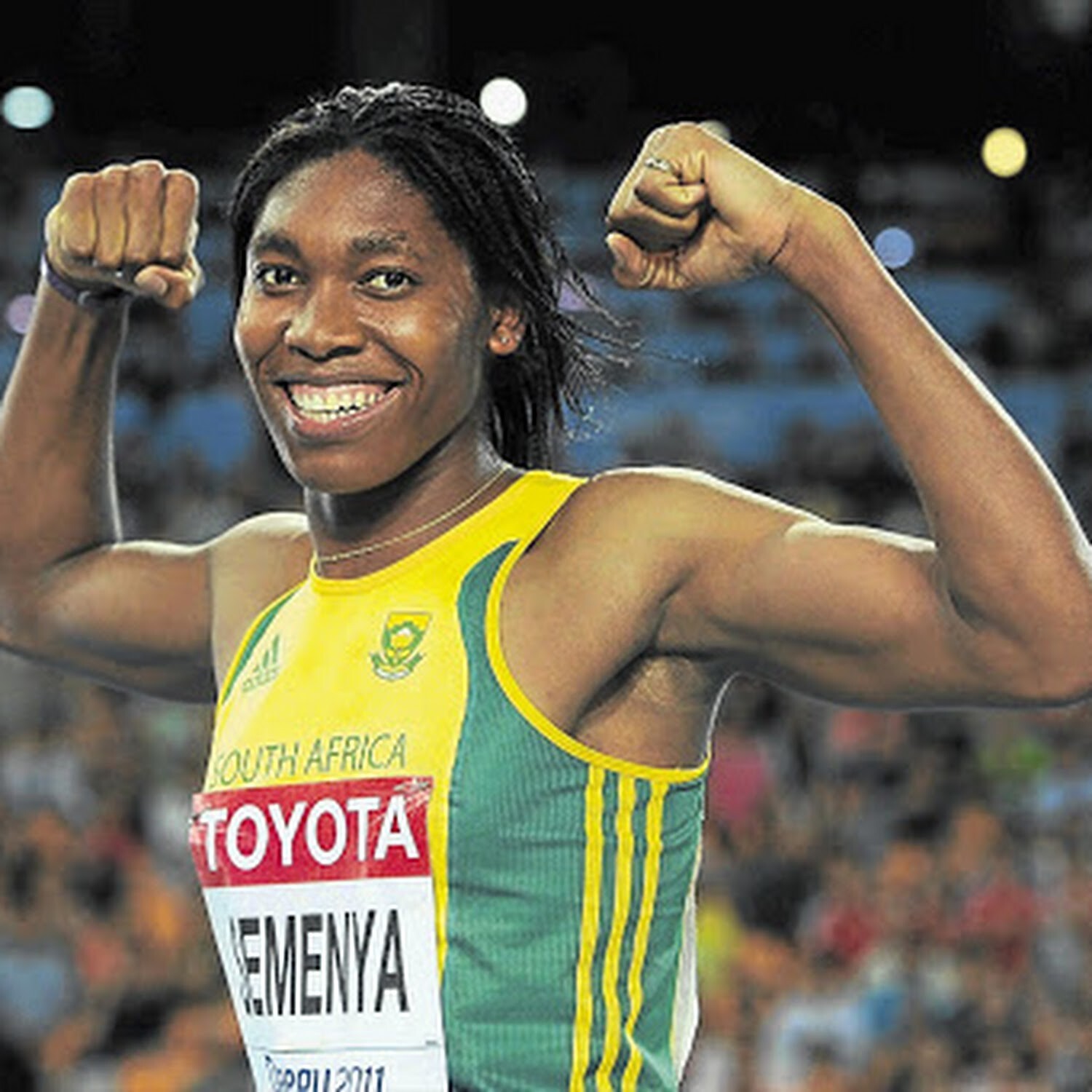
In a wide-ranging interview with BBC Breakfast's Sally Nugent, Semenya says:
She felt she was "different" from the age of five but "embraces" her differences
She will not conform "to be accepted"
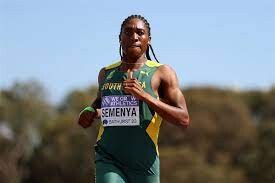
She wants to empower women to "have a voice"
"Leaders" in sport are "turning women against women"
'I will embrace my differences'
Hyperandrogenism is a medical condition characterised by higher-than-usual levels of testosterone, a hormone that increases muscle mass and strength.
Under regulations introduced in 2018, athletes with DSD were only allowed to compete in female track events between 400m and the mile if they reduced their testosterone levels.
In March, World Athletics ruled that DSD athletes must now have hormone-suppressing treatment for six months before being eligible to compete in all-female events.
"For me, I believe if you are a woman, you are a woman," said Semenya, who won Olympic 800m gold in 2012 and 2016 and is a three-time world champion over the same distance.
"No matter the differences you have. I have realised I want to live my life and fight for what I think and I believe in myself.
"I know I am a woman and anything that comes along with it just accept it."
Semenya ran in the 5,000m at last year's World Championships in Oregon but failed to qualify for the final.
In July, the European Court of Human Rights (ECHR) ruled in her favour in a case related to testosterone levels in female athletes.
"At the end of the day, I know I am different. I don't care about the medical terms or what they tell me. Being born without a uterus or internal testicles. Those don't make me less of a woman," added Semenya.
"Those are the differences I was born with and I will embrace them. I am not going to be ashamed because I am different. I am different and special and I feel great about it.
"It comes with why we fight for women's sport. The importance of women's sport is not being taken seriously and we need to take charge of our own bodies. Decide what is right for us. Not another gender deciding what we should look like.
"If we are woman enough or not, it is up to us. We know and believe in what is right, then why must we stop."
The case at the ECHR was not against sporting bodies or DSD rules - but specifically against the government of Switzerland for not protecting Semenya's rights and dates back to a Swiss Supreme Court ruling three years ago.
The ECHR found the Swiss government did not protect Semenya from being discriminated against when its Supreme Court refused to overturn a decision by the Court of Arbitration for Sport (Cas), which upheld the World Athletics rules.
The case has now been referred to the Grand Chamber of the ECHR for a final ruling following a referral request from the Swiss government.
'I am not going to be somebody I am not'
Semenya has argued that taking testosterone-reducing medication could endanger her health and that the ruling denied her and other athletes with DSD the right to rely on their natural abilities.
She told BBC Breakfast that she knew she was "different" from the age of five but, in her autobiography, The Race To Be Myself revealed she found out she "did not have a uterus or fallopian tubes" at the same time as "the rest of the world" after a gender test in 2009.
She says she has "nothing to hide", adding: "I am a woman and have a vagina just like any other woman.
"I am living a different life and I will continue living that, as that is what makes me feel good. I am not going to be somebody I am not, as I have to fit in to be accepted."
Last week, Semenya said she had achieved all she ever wanted on the track, and now wants to "pave the way and make sure each and every young girl is treated well".
"My future is to fight injustice, fight for inclusivity and diversity," she said.
"For me, I'm not going to allow leaders who come for the selfish means into our business to destroy it. I'm about empowering women and making sure they have a voice.
"At the moment, I don't see a lot of women voicing out if they have problems or something to say. Each and every woman out there should fight for their own. I'll always fight for what is right, I know what is right, and I know how things are supposed to be done. Let's wake up as women and fight for what is right."
She added: "[Sporting leaders] are turning women against women. If you say you're acting in the best interests of athletes, then do that. It's not up to you to decide what gender should look like, what sex should look like. Govern, make money, promote sport. Very clear message and very loud - do the job, promote the sport and let us sports people entertain."
Last week, World Athletics said in a statement to Reuters: "World Athletics has only ever been interested in protecting the female category. If we don't, then women and young girls will not choose sport. That is, and has always been, the federation's sole motivation."
A spokesperson told the BBC: "World Athletics has 15 years of data, observations, and information directly from DSD athletes in our own sport that show high testosterone levels do provide an unfair advantage in the female category - and that our guidelines on testosterone thresholds are necessary, reasonable, and proportionate in our aim to protect the integrity of the female category."
(11/07/2023) ⚡AMPby BBC News
Panuel Mkungo and Beatrice Cheptoo shine as Kenyans dominate at Istanbul Marathon
Panuel Mkungo and Beatrice Cheptoo are the winners of the 2023 edition of the Istanbul Marathon.
Little-known Panuel Mkungo and Beatrice Cheptoo put up a good fight to clinch top honors at the 2023 Istanbul Marathon.
Mkungo clocked 2:10:35 to win the race ahead of Bernard Cheruiyot and James Kiplagat who finished second and third in respective times of 2:12:41 and 2:12:44.
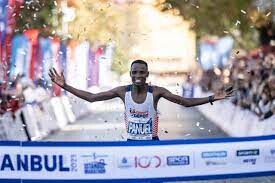
As the race started, Mkungo was not in contention for the title in the first 20km as he settled in the middle of the leading pack. The leading pack passed the 5km mark in 15:05 with Mkungo and his compatriots looking comfortable.
The athletes then passed the 10km mark in 30:06 in course course-record pace. They then passed the half km mark in 1:04:43, still looking very comfortable to go for the course record.
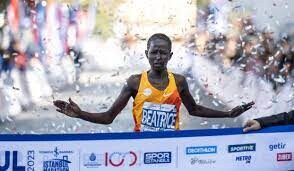
Mkungo then started opening a gap between him and the Kenyan duo of Cheruiyot and Kiplagat and he was looking very comfortable at the 30km mark but kept looking back. His closest challenger was who was trying hard to close the gap.
Mkungo kept in the fuel, passing the 35km mark in 1:04:43 still looking over his shoulder to watch his opponents. At the home straight, nothing could stop the Kenyan as he sprinted to the finish line and led a clean Kenyan sweep.
The women’s race was also dominated by Kenyans as Beatrice Cheptoo took top honors in the race, clocking 2:27:09 to cross the finish line after a hard-fought win.
The Kenyan duo of Veronica Maina and Valentina Mateiko finished second and third in respective times of 2:27:24 and 2:32:15.
(11/07/2023) ⚡AMPby Abigael Wuafula
N Kolay Istanbul Marathon
At the beginning, the main intention was simply to organise a marathon event. Being a unique city in terms of history and geography, Istanbul deserved a unique marathon. Despite the financial and logistical problems, an initial project was set up for the Eurasia Marathon. In 1978, the officials were informed that a group of German tourists would visit Istanbul the...
more...The science behind the warmup,new research explains how light movement before your workout preps your muscles for running
Most runners do at least a short, easy jog before any race, interval workout or other higher-intensity session. It’s widely accepted as being a beneficial, indeed a necessary, prelude to a hard session, but what exactly is happening in your body during your warmup, and how does it benefit your performance? New research has uncovered the answer.
The study, published in the Journal of General Physiology, was led by Osaka University, The Jikei University School of Medicine and National Institutes for Quantum Science and Technology. The specifics of how it enhances muscle performance had not previously been clearly understood; this study aimed to uncover the effects of heating on muscle contraction and explore whether different muscles have varying temperature sensitivities.
The study

The research team discovered that muscle cells contain certain proteins that act as temperature sensors. They found that skeletal muscles, which are responsible for movement, were more sensitive to heating than the muscles of the heart, for example. This greater sensitivity allows skeletal muscles to contract quickly and efficiently when warmed up, even from slight increases in temperature resulting from light movement, such as a warmup jog.
On the other hand, the muscles of the heart have a lower temperature sensitivity, which helps them maintain a continuous beat, regardless of temperature. This makes sense, because while your muscles have the opportunity to rest when you’re not using them, your heart needs to beat continuously no matter how hot or cold you are. In other words, a slight increase in temperature benefits your skeletal muscles, but has relatively little effect on your heart.
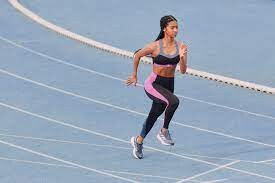
What does this mean for runners?
The findings suggest that warming up skeletal muscles can enhance their efficiency by saving energy and allowing for better rest when not in use.
Of course, is that there’s a fine line between warming up well and over-taxing your muscles before your workout or race. How much or how little you warm up will depend on several factors, including the length of your run or race. (In general, the shorter the race or workout, the faster you must run, and therefore the longer you should spend warming up.) Another factor is the temperature outside–you likely don’t need to warm up for as long when it’s 30 C outside as when it’s 5 C.
The warmup does not have to complicated. In most cases, a light, 10-minute jog and some simple warmup drills are all you need to be ready to run at your best.
(11/07/2023) ⚡AMPby Brittany Hambleton
British ultra runner Carla Molinaro wins world 50km title
British ultra runner strikes individual gold and leads to GB squad to team title at the IAU World 50km Championship in India
Great Britain’s Carla Molinaro took gold at the IAU World 50km Championship in Hyderabad early on Sunday morning (Nov 5) in a time of 3:18:22, Adrian Stott reports.
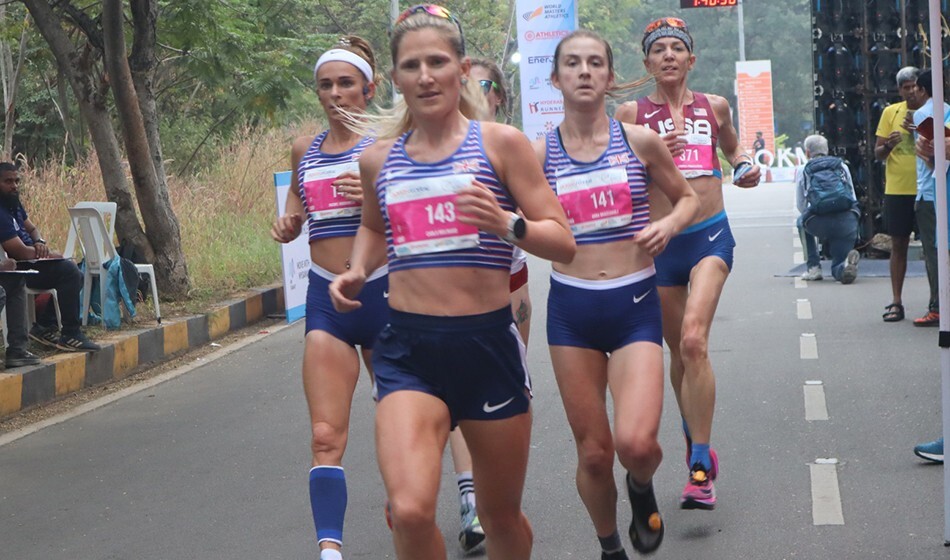
She finished just over 40 seconds ahead of Andrea Pomaranski of the United States, who recorded 3:19:05.
British 100km champion Sarah Webster took the bronze medal in 3:20:05.
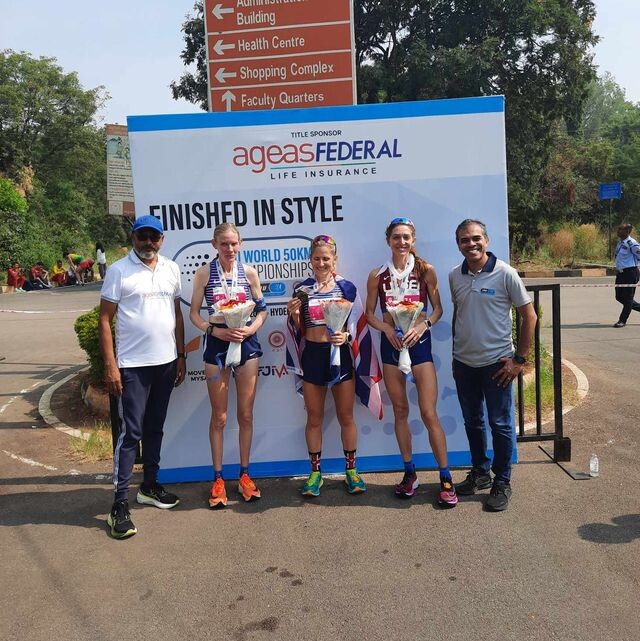
With Anna Bracegirdle fourth in 3:20:37 and Rachel Hodgkinson fifth in 3:20:47, GB & NI were clear winners of the team medals ahead of the United States and Croatia.
For Molinaro, the 39-year-old Clapham Chaser who splits her time between London and South Africa, it capped a successful year, having placed third in the 56km Two Oceans Marathon and the 56-mile Comrades Marathon in South Africa.
Webster, who broke Carolyn Hunter-Rowe’s long-standing British 100km record when winning the GB title earlier in the year, was always in contention and her 100km strength paid dividends in the final kilometers.
Hodgkinson and Bracegirdle were both running their first 50km races, selected on the back of good marathon performances earlier in the year.
Clean sweep for Spain in men’s race
Spain dominated the men’s race, taking all three podium places as Chakib Lachgar claimed the gold medal in 2:48:18.
His compatriots Alejandro Vicente and Jesus-Angel Pascual took the silver and bronze medals, clocking 2:49:28 and 2:50:10 respectively.
Lachgar, 34, who boasts a marathon best of 2:11:11 and a half-marathon of 1:01:45, again confirmed at a global level that 50km is continuing to be the domain of competent marathon runners moving up in distance. His time, subject to confirmation, puts him fourth on the all-time European 50km rankings.
Will Mycroft was Great Britain & Northern Ireland’s first finisher in ninth with 2:55:58, leading the men’s team to the bronze medals. He was backed up by Andrew Davies in 13th. The bronze medalist from the 2022 European 50km championships recorded 2:57:14.
(11/06/2023) ⚡AMPby Athletics Weekly
IAU 50km world championships
The IAU 50km World Championship is a prestigious ultramarathon race organized by the International Association of Ultrarunners (IAU) first time in India.The 50km distance is a popular choice for ultrarunners, offering a unique challenge that falls between a marathon and longer ultramarathon distances. Participation in the IAU 50km World Championship is typically based on qualification standards established by each country's...
more...Pizzolato donates 1984 New York City Marathon winning shoes to MOWA
At the end of ABC television’s coverage of the 1984 New York City Marathon, there’s a shot of Orlando Pizzolato sitting on a bench in Central Park, retying his well-worn footwear. “Those shoes may have had it,” remarked anchorman Jim McKay.
Not quite. Some 39 years on, the shoes that took the unheralded Italian to the biggest upset victory in the history of the Big Apple’s big race have been generously donated to the ever-expanding Heritage Collection in the Museum of World Athletics (MOWA).

Whatever unfolds in the 2023 edition of the New York City Marathon this weekend, there’s unlikely to be anything as dramatic as the battle of attrition from which the plucky Pizzolato emerged as the unlikely hero in 1984.
As the Italian and the rest of the 18,000 field assembled for the start, it was difficult to pick out the contours of the Verrazano-Narrows Bridge. Such was the heat haze that had descended upon the Big Apple on the last Sunday in October that year.
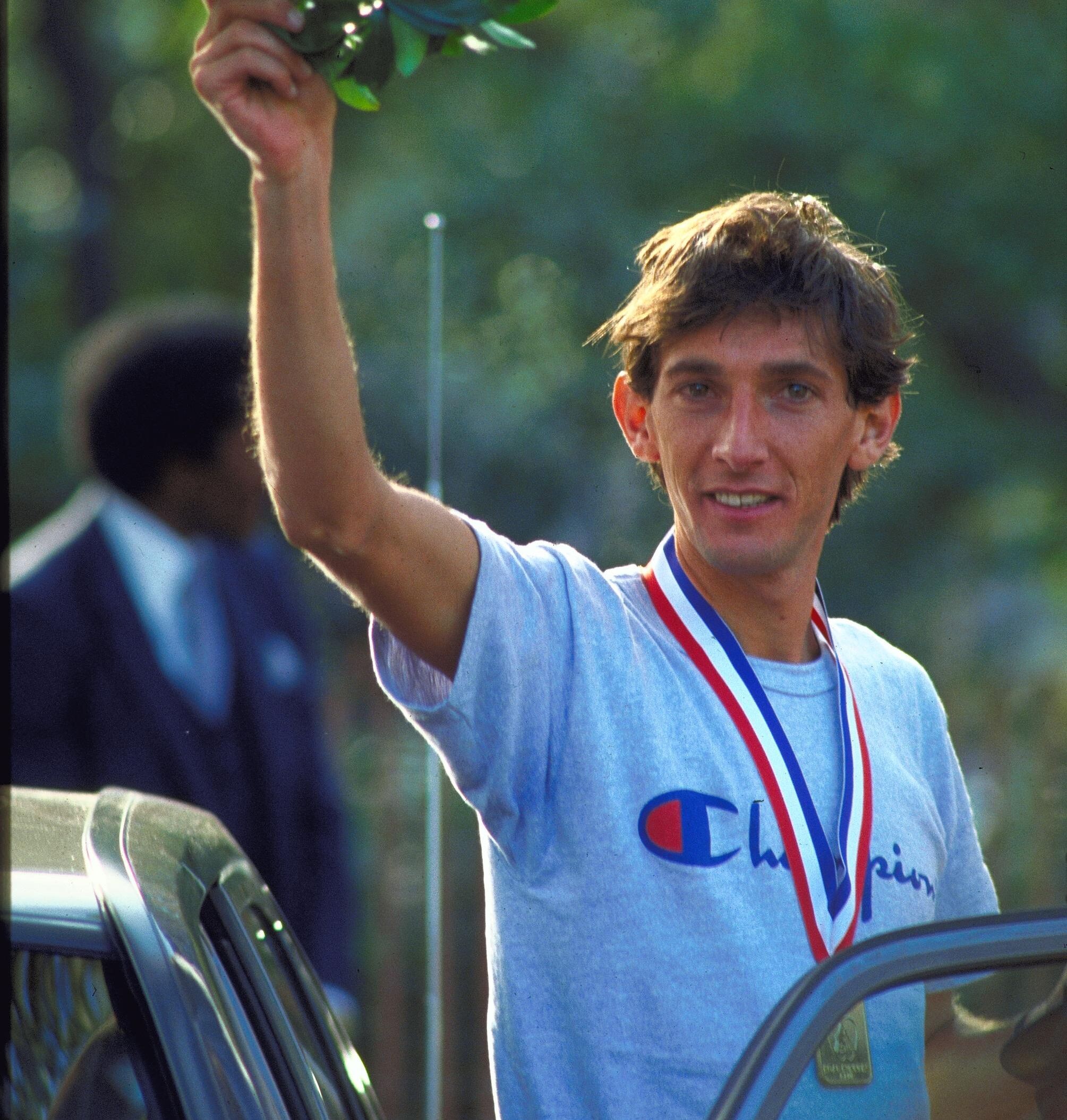
“The weather is going to be a huge factor,” proclaimed Marty Liquori, the great US miler, working as the expert summarizer on the men’s race for ABC Sports. “We’re looking at the hottest and most humid New York Marathon ever.”
The mercury was already pushing 70°F and the humidity was close to maximum.
“That causes two things to happen at the front of the pack,” continued Liquori, runner up to Miruts Yifter in the 5000m at the inaugural World Cup in Dusseldorf in 1977. “The natural front runners get conservative, so the pack stays tighter. The second thing is the hotter it gets, the greater chance there is for an upset.”
“Yes, look out for the man you do not know in this marathon,” predicted McKay, the distinguished Voice of ABC’s Wide World of Sports.
“This man could be for real”
Not a lot of people were looking out for the runner bearing race number 100, clad in the colors of his homeland – blue and white singlet, red shorts.
Pizzolato, a 26-year-old representing the University of Ferrara sports club from the north of Italy, was no Ferrari of a marathoner.
In seven attempts at the classic 26.2-mile distance, he boasted a best of 2:15:28 - more than seven minutes slower than the world record figures of 2:08:05 set by Welshman Steve Jones in Chicago a week before the 1984 New York race.
Pizzolato’s PB came in New York in 1983, the year Rod Dixon made up a half-mile deficit to overhaul Briton Geoff Smith virtually on the finish line in Central Park. The New Zealander’s winning time was 2:08:59. He finished 6min 29sec and 26 places ahead of Pizzolato.
Twelve months later, Dixon, the Olympic 1500m bronze medalist behind Finn Pekka Vasala and the trailblazing Kenyan Kip Keino in Munich in 1972, returned to New York as favorite for the men’s title – and the $25,000 prize and Mercedes Benz that went with it in that first year of open professional running.
“I’m a lot more confident in my own mind, having run successfully in ’83,” he told Liquori in a pre-race interview. “I think I’m rightly the favorite. I’ve trained well and I’ve got confidence in my own ability. I’ll go out and if I strike it right, they won’t catch me.”
Five miles in, given the exceptional conditions, Liquori and four-time winner Bill Rodgers, following the men’s race from ABC’s on-course buggy, felt Dixon was striking it right – 18 seconds down on home runners Pat Petersen and Terry Baker in a pack that included two-time Commonwealth gold medallist Gidamis Shahanga of Tanzania.
Pizzolato was also among the chasing group, seemingly unknown to any of the experts. His first name check came as he overtook Jose Gomez of Mexico to claim pole position, shortly before reaching halfway in 65:03.
“Could this, Marty, be the man they did not know?” McKay enquired.
“This man could be for real,” Liquori replied. “In the hotel I saw Franco Fava, a great steeplechaser from Italy, and he mentioned that it has been so hot in Italy this summer and fall. So, this is one person who is accustomed to the heat.”
Rodgers was not quite so sure. “I think it’s still anybody’s race,” he said. “The guy from Italy looks good. But we’ll have to see later in the race.”
“The Pope, Reagan and then it was me”
The guy from northern Italy was certainly looking good.
While Dixon seemed ill at ease, struggling to cope with the pace and the conditions some 1:15 behind, Pizzolato appeared to be feeling groovy as he crossed the Queensboro Bridge, the subject of Simon and Garfunkel’s 59th Street Bridge Song.
“Orlando looks very good,” Liquori observed. “He looks to have a style that’s fitting for a marathoner. When you’re looking around, taking in the scenery, you know that the running is coming easy.
“One thing should be pointed out. Steve Jones, who set the world record last week, was a very well-established track runner. He was eighth in the 10,000m at the Olympic Games.
“But Orlando has run a minute slower for 10,000m: 28:22. Were he to win this, it would be just about the biggest upset in a major marathon that I’ve seen.”
By the 20th mile mark, it was clear that Pizzolato himself was somewhat upset. The temperature had risen to 74 degrees and the humidity to 96%. His pace slowed to a 5:26 mile.
Briton Dave Murphy was gathering momentum, moving up into second, and Dixon into third.
“Well, I think we’re entering the last chapter of Orlando,” ventured Liquori. “I think I might have got too excited at 18 miles. Maybe it was the Italian in me.”
Soon after, Pizzolato grabbed his chest and slowed to a temporary halt. Three times he stopped, then started up again. “This man is in trouble,” said McKay.
Entering Central Park, with less than three miles to go, Pizzolato stopped for a fourth time. He clutched his chest, glugged half a cup of water and poured the other half over his head.
Dixon was out of the equation at this point, having stepped off the course suffering from cramps. But Murphy had closed to within 15 seconds.
“It’s like the tortoise and the hare,” said Liquori. “Pizzolato’s running-stopping, running-stopping. Murphy is just taking a steady course. It looks like it’s his race.
“For Pizzolato now, the drama now is how much of his soul he’s going to lay down.”
Thrice more, Pizzolato stopped and started, each time taking on fluid and calmly checking out the gap behind him. Somehow, he managed to lay down enough of his soul to bridge over his troubled water.
The finished line approached with Murphy not yet in sight.
“He has pulled it off,” Liquori pronounced. “He has mentally been able to fight through his form having gone to pieces, through having had so many problems.”
“It was very hot,” said Pizzolato, who crossed the line in 2:14:53, 43 sec ahead of Murphy. “I had cramp in my stomach. It was very terrible, but I am very happy.”
The New York Times the next day concentrated on Grete Waitz’s sixth success in the women’s section, praising Pizzolato in passing for having overcome the heat and the late challenge of Murphy in “a men’s competition that the stifling heat and humidity reduced to a battle of attrition.”
Back home in Italy, the reaction was different. “The first story in the news was the Pope,” Pizzolato reported, “then Ronald Reagan’s election. Then it was me.”
Retained title
Twelve months later, the guy from Italy returned to New York and proved he was no flash in the marathon pan.
This time he was the tortoise, running his steady race while Geoff Smith burned himself out at world record pace, then overtaking Djibouti’s World Cup Marathon winner Ahmad Saleh two miles from home to become the Big Apple’s first overseas two-time winner, clocking 2:11:34.
“Last year I won by mistake, probably,” Pizzolato told The New York Times. “This year was more exciting. I was not in confusion in the last 365 yards.
“All the people seemed to know my name and my number. It was like everyone was a friend of mine. It was a great source of power.”
In an era when the fast men of the track came to dominate the men’s marathon – with the likes of Jones, Dixon and Carlos Lopes, the Portuguese runner who won the Olympic title in Los Angeles in 1984 and succeeded Jones as world record-holder in 1985 – Pizzolato was a great source of power and inspiration to the traditional specialists of the event.
He never broke 2:10. His fastest time was 2:10:23, which he recorded while placing sixth in the World Cup Marathon in Hiroshima in 1985. The following year Pizzolato was third in Boston (2:11:43), then overtook a shattered Jones to claim the European Championships silver in Stuttgart (2:10:57) behind his compatriot Gelindo Bordin, and returned to New York taking third place (2:12:13) behind another Italian, Gianni Poli.
These days the two-time Italian king of New York operates a company bearing his name which offers running camps and a consultation service, and which provides scholarships to athletes aged from 16 to 22.
(11/06/2023) ⚡AMPby Simon Turnbull for World Athletics Heritage
Purity Komen among four Kenyans provisionally suspended by AIU
Reigning Istanbul Half Marathon champion Purity Komen is among the four Kenyans who have been provisionally suspended by AIU.
The Athletics Integrity Unit has announced the provisional suspension of nine athletes, four being Kenyans.
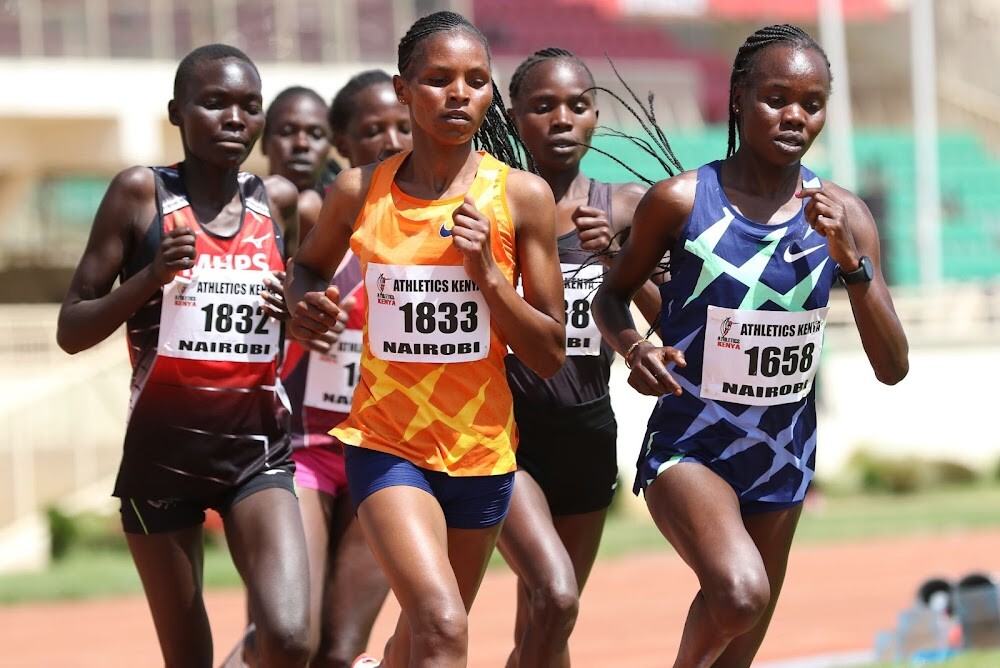
Reigning Istanbul Half Marathon champion Purity Komen has found herself in hot soup for the presence of a Prohibited Substance (Norandrosterone) and evading Sample Collection. A notice of allegation has been issued to the 25-year-old.
The 2018 Bali Marathon champion Rebecca Korir has also been suspended for the presence of a Prohibited Substance (Methylprednisolone) and a notice of charge has been issued to her.

Another Kenyan to make it to the list of shame is James Karanja who has been suspended for the use of the Prohibited Substance (Norandrosterone) and a notice of allegation has been issued to him.
23-year-old Esther Borura has also been provisionally suspended for the use of the Prohibited Substance (Norandrosterone) and a notice of allegation has also been issued to her.
In a post on their X (Twitter) handle, AIU said: “The AIU has today published provisional suspensions for the following nine athletes (some back-dated from July until now): Yousef Mohammed Al-Asiri (Saudi Arabia), Rebecca Jepchirchir Korir (Kenya), John Hakizimana (Rwanda) and James Gikunga Karanja (Kenya).
Vilmante Stašauskaitė (Lithuania), Farida Soliyeva (Uzbekistan), Esther Birundu Borura (Kenya), John Tello Zuniga (Colombia) and Purity Temutai Komen (Kenya).”
According to AIU, a Provisional Suspension is when an Athlete or other Person is suspended temporarily from participating in any competition or activity in Athletics prior to a final decision at a hearing conducted under the World Athletics Anti-Doping Rules or the Integrity Code of Conduct.
(11/06/2023) ⚡AMPby Abigael Wuafula
Three exercises for unshakeable knee strength
While most runners know that running won’t damage their knees (and are probably sick of non-runners telling them that it does), many athletes still experience some knee soreness, often when returning to running after some time away. Knee pain usually isn’t long-lasting, and can be caused by a variety of things, including ramping up mileage too quickly or biomechanical issues. Try these simple leg strengtheners to eradicate achy knees and prevent overuse injuries.
1.- Straight leg raises
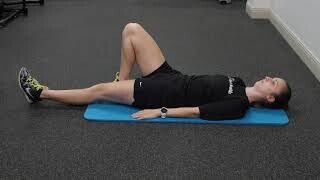
This strengthens the quads, helping to stabilize the knee joint and reduce the stress on the knee. Strong quads will better support and protect the knee during running.
Lie on your back with one leg straight and the other bent at a 90-degree angle.
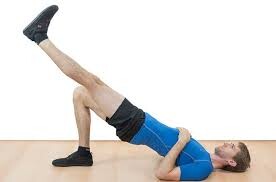
Tighten your quads (front thigh muscles) on the straight leg and lift your leg to about 45 degrees, keeping your toes pointed up. Lower your leg back down and repeat. Aim for 10 leg raises on each side to start, but add or decrease repetitions.
2.- Lunges
Lunges target the quads, hamstrings and glutes and help with balance and stability. They help strengthen the knee joint and improve coordination, valuable for injury prevention and navigation in the challenging terrain of winter.
Stand with your feet hip-width apart.
Take a step forward with one leg and lower your body until both knees are at a 90-degree angle, hovering the back knee just above the ground.
Push off the front foot to return to the starting position and repeat with the other leg. Aim for five to 10 repeats to start. You can build resistance by adding sets, or by holding weights once you become comfortable.
3.- Single-leg mini squat
This exercise mimics the motions of running, engaging all the major muscle groups involved in running to build strength and stability. It also challenges balance and build proprioception, helping to improve overall stability and reduce the risk of injuries.
Begin by standing on one leg with your knee slightly bent. Keep your chest up, shoulders back and core engaged for balance.
Slowly lower your body by bending the knee of the leg you’re standing on, imagining that you’re sitting back in a chair. Keep your back straight, and go as low as you can (doesn’t need to be far!) while maintaining control.
Hold for a few seconds to challenge your balance and stability, and then push through the heel of the standing leg to return to the starting position. Try five-10 reps on each side to start.
(11/06/2023) ⚡AMPby Keeley Milne
2018 Boston marathon winner Yuki Kawauchi and wife were winners today at marathon in Japan
The man who shocked the world in 2018 when he won the Boston Marathon, Yuki Kawauchi is a marathon-running icon. He shared this on FB today:
"I ran Tohoku Miyagi Fukko Marathon today.
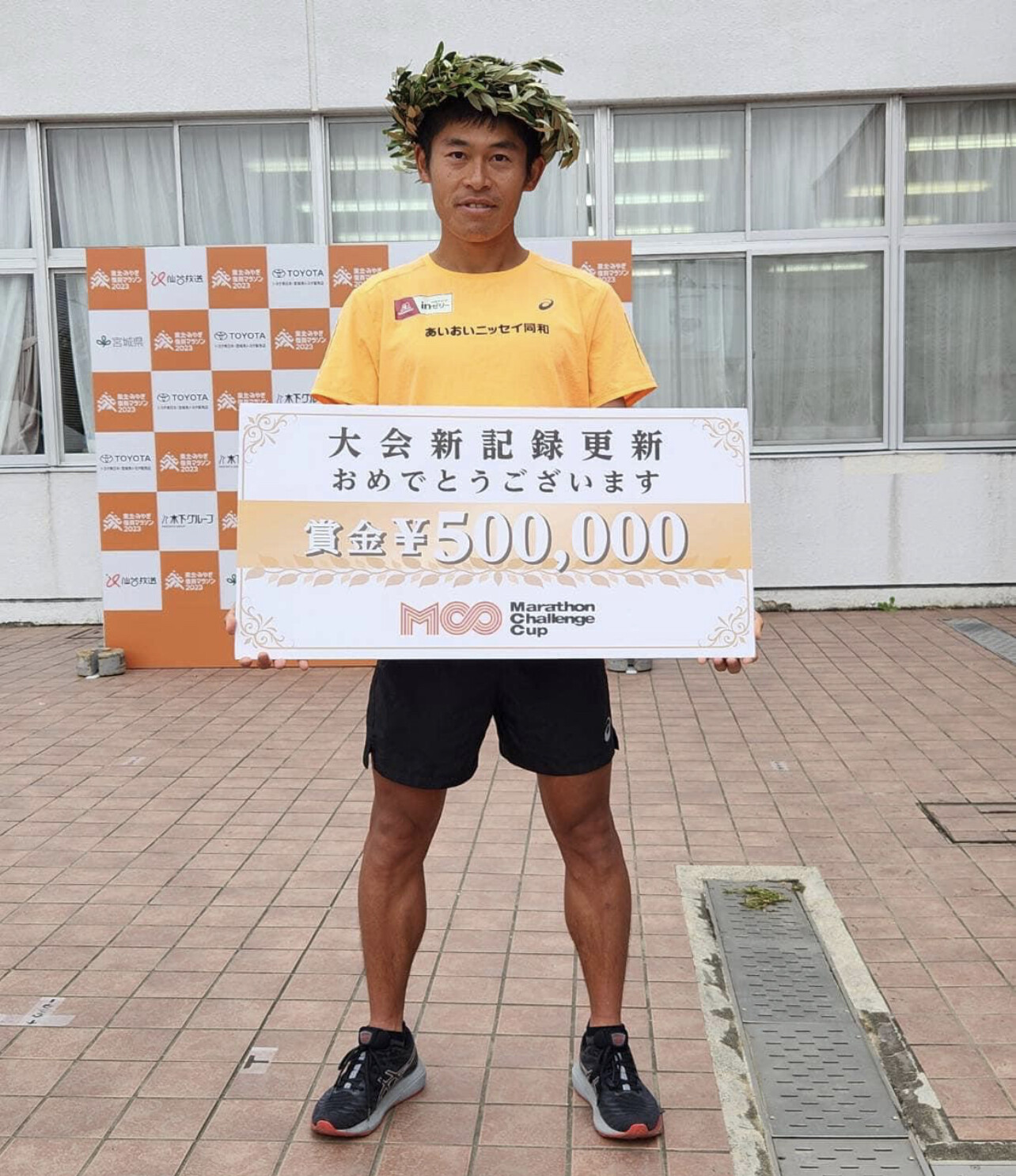
My result was 2:11:48 and I broke course record.

So I got course record bonus(¥500000 = $3350).
I was so good until 25km today.
But I struggled head wind & small hills from 25km.
Part of this course was a revival road built over an area destroyed by the 2011 earthquake and tsunami.
I am proud that I was able to run well in area that is unforgettable for Japanese people.
And my wife YUKO was 4th clocking 2:56'29.
Today's marathon was her first marathon since giving birth last year."
I'm also proud of her efforts for sub-3, who continued to run with the stroller every day.
(11/05/2023) ⚡AMPLots of exciting racing on the streets of New York City and a new course record
Hellen Obiri timed her kick to perfection to win a thrilling women’s race and Tamirat Tola broke the course record for a dominant men’s title triumph at the TCS New York City Marathon, a World Athletics Platinum Label event, on Sunday (5).
Claiming their crowns in contrasting styles, Obiri sprinted away from Letesenbet Gidey and Sharon Lokedi in Central Park and crossed the finish line in 2:27:23, winning by six seconds, while Tola left his rivals far behind with 10km remaining in a long run for home. Clocking 2:04:58, he took eight seconds off the course record set by Geoffrey Mutai in 2011 to claim his first win in the event after fourth-place finishes in 2018 and 2019.
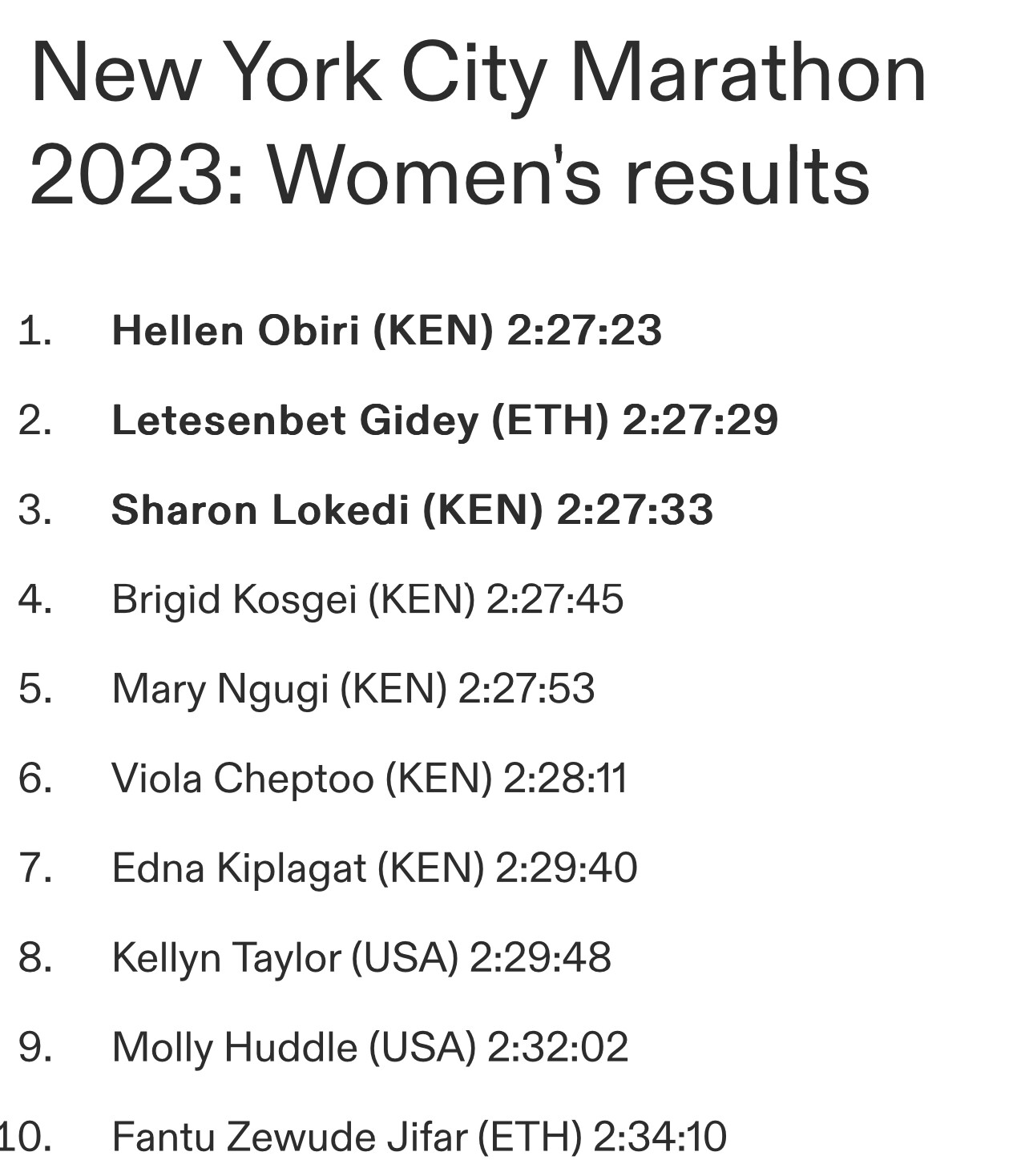
While super fast times have dominated recent major marathon headlines, the focus in New York was always more likely to be the battles thanks to the undulating course and competitive fields, although the men's race ended up being the quickest in event history.
The women’s race was particularly loaded. Kenya’s Lokedi returned to defend her title against a strong field that featured Boston Marathon winner Obiri, 10,000m and half marathon world record-holder Gidey, and former marathon world record-holder Brigid Kosgei, while Olympic champion Peres Jepchirchir was a late withdrawal following the leg injury she sustained a week before the race.
There was no clear pre-race favourite and that remained the case right up to the closing stages, with many of the leading contenders locked in a fierce fight after a tactical 26 miles.
The pace was conservative in the first half, with a series of surges but no big moves. Eleven of the 14 members of the field remained together at half way, reached in 1:14:21. It set the scene for a final flurry, with the pace having gradually slowed after 5km was passed by the leaders in 17:23, 10km in 34:35 and 15km in 52:29.
Obiri, Lokedi and Kosgei were all firmly part of that group, along with their Kenyan compatriots Edna Kiplagat, Mary Ngugi-Cooper and Viola Cheptoo. Ethiopia’s Gidey was happy to sit at the back of the pack, with USA’s Kellyn Taylor and Molly Huddle taking it in turns to push the pace.
The tempo dropped again as the lead group hit the quiet of Queensboro Bridge, with the 25km mark reached in 1:28:39. But the group forged on, hitting 30km in 1:47:06 and 35km in 2:04:45.
Then Cheptoo made a move. The 2021 New York runner-up managed to create a gap but Obiri was the first to react and covered it gradually. Gidey followed and as Cheptoo surged again, Obiri and Gidey ran side-by-side behind her. It wasn’t decisive, though, and soon Lokedi and Kosgei were able to rejoin them.
As the group hit 24 miles in Central Park, Lokedi was running alongside Obiri and Cheptoo, with Gidey and Kosgei just behind. The pace picked up again but each time Kosgei was dropped, she managed to claw her way back – Lokedi leading from Gidey, Obiri and Kosgei with one mile to go.
Looking determined, two-time world 5000m champion Obiri saw her chance and began to stride for the finish. Being chased by Gidey and with Lokedi four seconds back, she kicked again at the 26-mile mark and couldn’t be caught, using her superb finishing speed to extend her winning margin to six seconds.
It was a brilliant return for Obiri, who finished sixth when making her marathon debut in New York last year and who went on to win the Boston Marathon in April. She becomes the first women since Ingrid Kristiansen in 1989 to complete the Boston and New York marathon title double in the same year.
Gidey followed Obiri over the finish line in 2:27:29, while Lokedi was third in 2:27:33, Kosgei fourth in 2:27:45 and Ngugi-Cooper fifth in 2:27:53.
"It's my honour to be here for the second time. My debut here was terrible for me. Sometimes you learn from your mistakes, so I did a lot of mistakes last year and I said I want to try to do my best (this year)," said Obiri.
"It was exciting for me to see Gidey was there. I said, this is like track again, like the World Championships in 2022 (when Gidey won the 10,000m ahead of Obiri)."
Tola finishes fast
The men’s race also started off at a conservative pace but by 20km a lead group of Tola, Yemal Yimer, Albert Korir, Zouhair Talbi and Abdi Nageeye had put the course record of 2:05:06 set 12 years ago back within reach.
Most of the field had been together at 5km, reached by the leaders in 15:28, and 10km was passed in 30:36. Then a serious surge in pace led to a six-strong breakaway pack, with Ethiopia’s Tola, Yimer and Shura Kitata joined by Kenya’s Korir, Dutch record-holder Nageeye and Morocco’s Talbi.
Kitata managed to hang on to the back of the pack for a spell but was dropped by 20km, reached by the leaders in 59:34.

The half way mark was passed by that five-strong lead group in 1:02:45, putting them on a projected pace just 24 seconds off of Mutai’s course record.
Tola – the 2022 world marathon champion – surged again along with Yimer, who was fourth in the half marathon at last month’s World Road Running Championships in Riga, and Korir, the 2021 champion in New York. They covered the 5km split from 20km to 25km in 14:41, a pace that Nageeye and Talbi couldn’t contend. It also turned out to be a pace that Korir couldn’t maintain and he was the next to drop, leaving Tola and Yimer to power away.
After an even quicker 5km split of 14:07, that leading pair had a 25-second advantage over Korir by 30km and Tola and Yimer were well on course record pace as they clocked 1:28:22 for that checkpoint. Tola was a couple of strides ahead as they passed the 19-mile mark, but Yimer was fixed on his heels.
The next mile made the difference. By the 20-mile marker Tola had a six-second advantage and looked comfortable, with Korir a further 45 seconds back at that point and Kitata having passed Nageeye and Talbi.
Then Yimer began to struggle. He was 33 seconds back at 35km, reached by Tola in 1:42:51, and he had slipped to fourth – passed by Korir and Kitata – by 40km.
Tola reached that point in 1:58:08, almost two minutes ahead of Korir, and more than four minutes ahead of Yimer, and he maintained that winning advantage all the way to the finish line.
With his time of 2:04:58, Tola becomes the first athlete to dip under 2:05 in the New York City Marathon. Korir was second in a PB of 2:06:57, while Kitata was third in 2:07:11. Olympic silver medallist Nageeye finished fourth in 2:10:21 and Belgium’s Koen Naert came through for fifth in 2:10:25.
"I am happy to win the New York City Marathon for the first time," said Tola. "It's the third time for me to participate, after two times finishing fourth. Now, I'm happy."
(11/05/2023) ⚡AMPby World Athletics
TCS New York City Marathon
The first New York City Marathon, organized in 1970 by Fred Lebow and Vince Chiappetta, was held entirely in Central Park. Of 127 entrants, only 55 men finished; the sole female entrant dropped out due to illness. Winners were given inexpensive wristwatches and recycled baseball and bowling trophies. The entry fee was $1 and the total event budget...
more...Tamirat Tola sets NYC Marathon record; Hellen Obiri wins women's race
Tamirat Tola of Ethiopia set a course record to win the New York City Marathon men's race on Sunday while Hellen Obiri of Kenya pulled away in the final 400 meters to take the women's title.
Tola finished in 2 hours, 4 minutes, 58 seconds, topping the 2:05.06 set by Geoffrey Mutai in 2011. Tola pulled away from countrymate Jemal Yimer when the pair were heading toward the Bronx at Mile 20. By the time he headed back into Manhattan a mile later, Tola led by 19 seconds and chasing Mutai's mark.
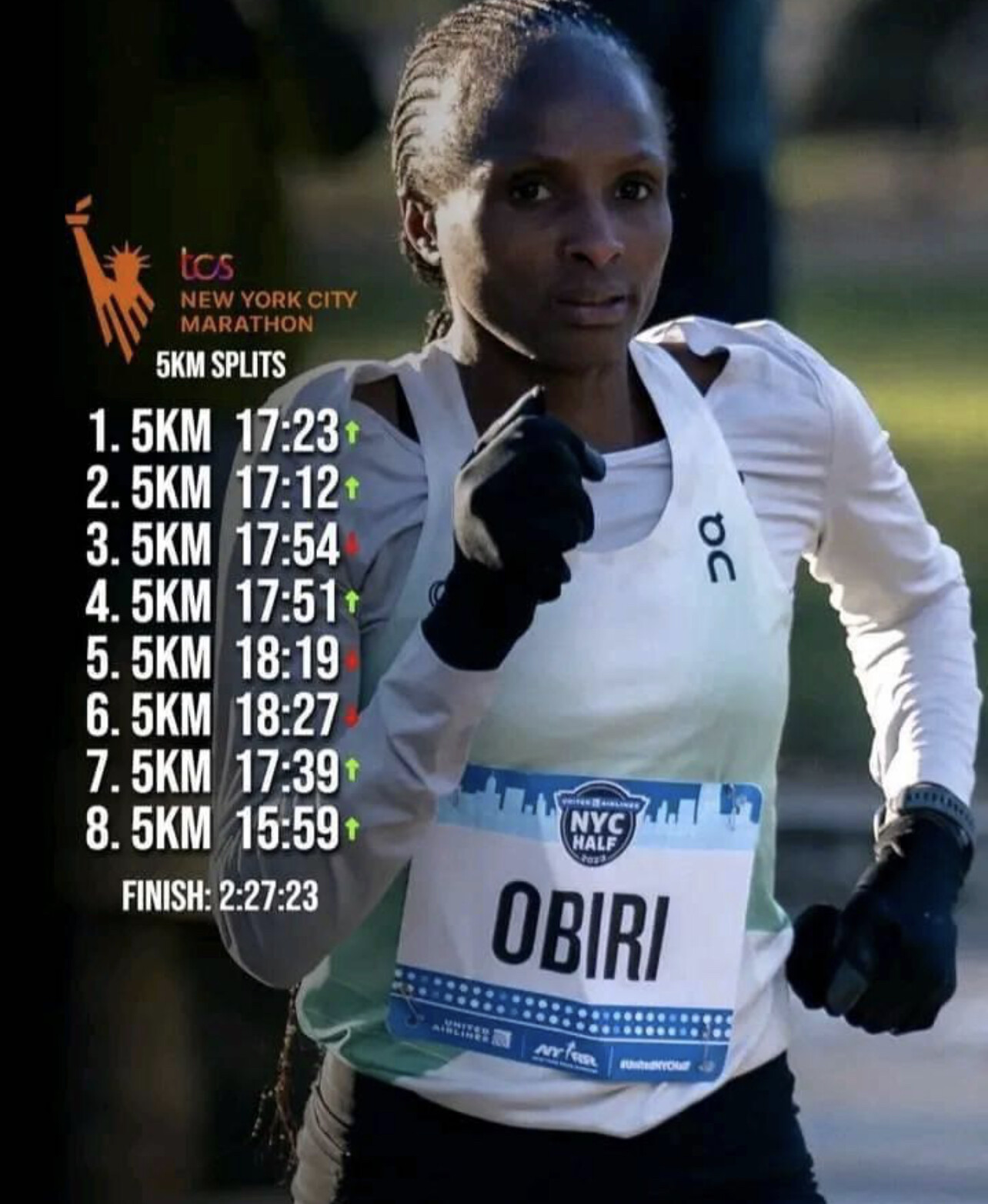
Kenyan Albert Korir finished second in 2:06:57, while Ethiopian Shura Kitata was third in 2:07:11. Yimer fell back to finish in ninth.While the men's race was well decided before the last few miles, the women's race came down to the final stretch. Obiri, Letesenbet Gidey of Ethiopia and defending champion Sharon Lokedi were all running together exchanging the lead. Obiri made a move as the trio headed back into Central Park for the final half-mile and finished in 2:27:23. Gidey finished second, 6 seconds behind. Lokedi finished third in 2:27:33.
Obiri added the New York victory to her win at the Boston Marathon in April.A stellar women's field was thought to potentially take down the course record of 2:22:31 set by Margaret Okayo in 2003. Unlike last year, when the weather was unseasonably warm with temperatures in the 70s, Sunday's race was much cooler in the 50s -- ideal conditions for record-breaking times.
Instead the women had a tactical race with 11 runners, including Americans Kellyn Taylor and Molly Huddle, in the lead pack for the first 20 miles. Taylor and Huddle both led the group at points before falling back and finishing in eighth and ninth.
Once the lead group came back into Manhattan for the final few miles, Obiri, Gidey and Lokedi pushed the pace. As the trio entered Central Park, they further distanced themselves from Kenya's Brigid Kosgei, who finished fourth.
Catherine Debrunner won the women's wheelchair race in 1:39:32, breaking the course record by more than three minutes. Men's wheelchair race winner Marcel Hug narrowly broke his record from last year, finishing in 1:25:29 to miss the mark by 3 seconds.
"It's incredible. I think it takes some time to realize what happened," Hug said after his sixth New York City victory. "I'm so happy as well."
Hug is the most decorated champion in the wheelchair race at the event, breaking a tie with Tatyana McFadden and Kurt Fearnley for most wins in the division in event history.
(11/05/2023) ⚡AMPTCS New York City Marathon
The first New York City Marathon, organized in 1970 by Fred Lebow and Vince Chiappetta, was held entirely in Central Park. Of 127 entrants, only 55 men finished; the sole female entrant dropped out due to illness. Winners were given inexpensive wristwatches and recycled baseball and bowling trophies. The entry fee was $1 and the total event budget...
more...Morgan Beadlescomb, Annie Rodenfels win Abbott Dash to the Finish Line 5k
Two runners won big at the Abbott Dash to the Finish Line 5K on Saturday in Central Park.
Morgan Beadlescomb, 2023 B.A.A. 5K champion, and three-time NCAA Division III champion Annie Rodenfels both captured the 2023 USA Track & Field (USTAF) 5K Championships.
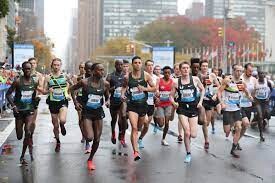
Beadlescomb, 25, finished in 13:44, marking his debut in the Abbott Dash to the Finish Line 5K.
Rodenfels, 27, captured the women's title in 15:22, after finishing fourth in the 2022 edition of the event.
Over 10,000 runners from across the country participated in the event Saturday morning, including top local athletes and many runners who are also running Sunday's TCS New York City Marathon.
The Abbott Dash served as a great warmup ahead of Sunday's marathon.
Runners started the race at the United Nations and then made their way across Midtown before ending at the marathon finish line in Central Park.
Eyewitness News sports reporter Sam Ryan spoke to Chris Miller of Abbott, who shared his excitement for Saturday's race.
"For 10,000 runners to take on these iconic streets of New York, as Abbott being a company about celebrating health and technology company, it is great to see," said Miller.
(11/05/2023) ⚡AMPDash to the Finish Line
Be a part of the world-famous TCS New York City Marathon excitement, run through the streets of Manhattan, and finish at the famed Marathon finish line in Central Park—without running 26.2 miles! On TCS New York City Marathon Saturday, our NYRR Dash to the Finish Line 5K (3.1 miles) will take place for all runners who want to join in...
more...His First Marathon Was in Prison. His Second Will Be in New York City.
While incarcerated in San Quentin State Prison, Rahsaan Thomas became a runner, journalist, and criminal justice activist. After being granted a commutation while serving a 55-year-to-life sentence, Thomas began training for the New York City Marathon.
Rahsaan Thomas still remembers immense leg cramps the day he completed his first marathon in 2017. On a cold Friday morning in November, he tied up a pair of donated white-and-grey Nikes and pounded around a quarter-mile loop of gravel, dirt, and concrete in a yard surrounded by barbed wire fences at San Quentin State Prison, a maximum-security facility 25 miles north of San Francisco, California.

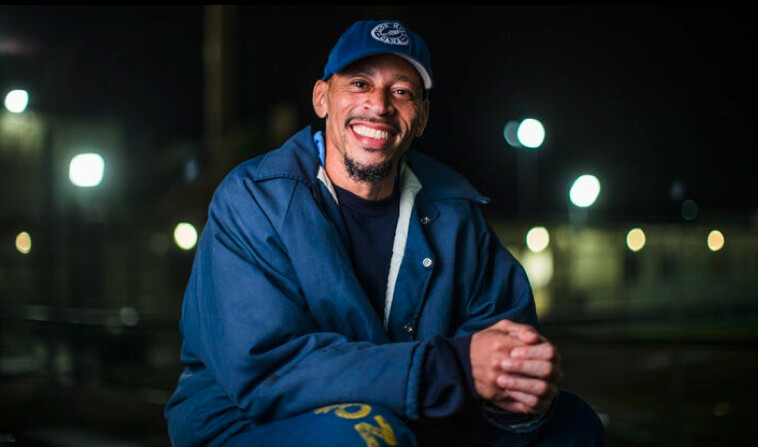
Thomas grew up in Brownsville, in east Brooklyn, one of New York City’s poorest and most dangerous neighborhoods. He was 29 when he was arrested after he fatally shot someone and injured another during a drug deal. Three years later, Thomas was sentenced with 55 years to life for a second-degree murder conviction.
While Thomas was incarcerated, he had dedicated himself to rehabilitation. He became a staff writer for the San Quentin News, a regular contributor to The Marshall Project, and he developed into an acclaimed journalist, co-hosting the Pulitzer Prize-nominated podcast “Ear Hustle,” an audio production created from within San Quentin highlighting daily life in prison. Thomas also worked with several criminal justice reform groups in addition to earning an associate’s degree. And he found running.
At San Quentin, Thomas had joined the prison’s 1000 Mile Club in 2013, a running program led by volunteers and implemented as a way to encourage those incarcerated to run 1,000 miles or more while serving time, says the club’s head coach Frank Ruona, a former army officer and accomplished marathoner. Ruona oversees the prison’s annual marathon, which is the subject of a new documentary 26.2 to Life, directed by Christine Yoo.
“Being able to go inside prisons is very important in order for people to understand what’s really going on in the system,” Yoo says. “This is how we can begin to address reducing incarceration. We owe it to ourselves as a society not to just lock them up and throw away the key, because these are human beings who are being punished for being poor and on drugs or have developed criminal behavior as a result of growing up in abusive households, which loops back to poverty and drugs. It’s an overwhelming and depressing situation. But what I learned from the 1000 Mile Club is that it’s possible to change lives, to make a lasting impact, that with support, rehabilitation is a realistic goal, and it can change the prison system as we know it.”
Yoo says she hopes the film will inspire the incarcerated population and prison administrators to better understand the benefits of rehabilitation and want to start their own running clubs.
Running, Thomas says, gave him a breath of freedom, though it was short-lived. He ran for acceptance and simultaneously for punishment and redemption. As grueling and painful as it felt, Thomas wanted to prove that, if he could finish a marathon, he could endure anything. So he kept going around the loop, which comprised six 90-degree turns in the prison’s yard, surveilled by armed guards in towers. Thomas, nicknamed “New York,” circled it 105 times alongside a couple dozen other incarcerated men, all of whom were members of San Quentin’s 1000 Mile Club.
Dressed in loose, knee-length grey shorts and a white sweatband around his forehead, Thomas moved gingerly, urging himself not to quit. He struggled through muscle cramps on the way to finishing the marathon distance in 6 hours, 12 minutes, and 23 seconds.
“The hardest thing I’ve ever done,” said Thomas, 53. Now, he will run his first marathon outside the prison walls.
Thomas was granted a commutation, a reduced sentence, from California Governor Gavin Newsom. After being incarcerated for nearly 23 years, he was released with parole on February 8, 2023. He celebrated that day by eating steak and French toast for breakfast, before he shopped for clothes and called his mother and his son.
Five months later, in July, Thomas began training for the New York City Marathon, as part of a pact he made with Claire Gelbart, whom he met at San Quentin when she volunteered as a journalism teaching assistant. They agreed to run a marathon together in the future if ever he was released.
“I’d always wanted to walk from Brooklyn to Harlem just to see New York,” Thomas says. “The opportunity to run all five boroughs to see the whole city really appeals to me.”
But he knows all too well that preparing to run a marathon is an art of consistency. “My knees complain,” he says, laughing. “I’m slow.”
Fitting in the training has been a calculated effort since his release nine months ago, as life has become as busy as ever. Thomas, who currently lives in the Bay Area, is awake by 6 A.M., often starting the day at the gym for an hour before plugging into continuous Zoom meetings before mentoring youth at San Francisco’s juvenile hall.
His priority is bringing awareness to Empowerment Avenue, a nonprofit Thomas co-founded and launched in June 2020 while he was incarcerated. Its mission is to use art and writing to break cycles of intergenerational incarceration and poverty and achieve public safety without violence. In October, Thomas started a GoFundMe with the goal of raising $120,000 to support Empowerment Avenue’s programming initiatives.
Mass incarceration “only punishes symptoms like poverty, a lack of opportunities, isolation, and a culture that breeds hate,” Thomas wrote on the fundraiser page. The idea behind Empowerment Avenue is to offer a different approach by connecting incarcerated men in filmmaking, art, and journalism with respective industries to bridge creative partnerships.
“It’s about showing the world something different and at the same time getting people paid for their work so their individual lives will be better,” Thomas says. “People coming home broke and not having the opportunity to make money legally [or] being excluded from society is not a good thing.”
Thomas learned by experience while at San Quentin, where he began his writing career from his four-by-nine-foot cell. He says Empowerment Avenue helped normalize inclusion of his work as a writer from behind bars.
“When you include people in society and provide economic opportunities to heal, you get people that don’t come back to prison,” Thomas says. “You get people that become productive members of society.”
Empowerment Avenue’s fundraising initiative comprises tiered goals: $5,000 can support the expansion of a writing development program at the Dr. Lane Murray Unit, a women’s prison of the Texas Department of Criminal Justice in Gatesville, Texas; $10,000 can aid a year of books, magazines, stamps, and other supplies for Empowerment Avenue writers and artists; upwards of $40,000 will support the production of an exhibition curated by an incarcerated artist as well as funding for a film.
Thomas says his goal is to employ the formerly incarcerated on staff as he continues to expand Empowerment Avenue. He hopes that by running the New York City Marathon he can bring necessary awareness that can help make an impact.
“We’re a proof of concept. We’re showing the public the importance of having access to society, getting our messages out, holding the system accountable,” says Thomas. “No matter how hard it is, you’ve got to keep going. I keep going.”
(11/05/2023) ⚡AMPby Outside Online
30 Hours at Javelina Jundred, the Burning Man of Trail Running
Inside the spectacle of ultrarunning’s most festive top-tier 100-mile race
It’s a hot, sunny Saturday afternoon in the desert northeast of Phoenix, and Lindsay DesRochers is being chased by a dinosaur—as if 85-degree heat, a creaky left knee, and a hot spot on her right big toe aren’t enough to worry about during her first attempt at running 100 miles.
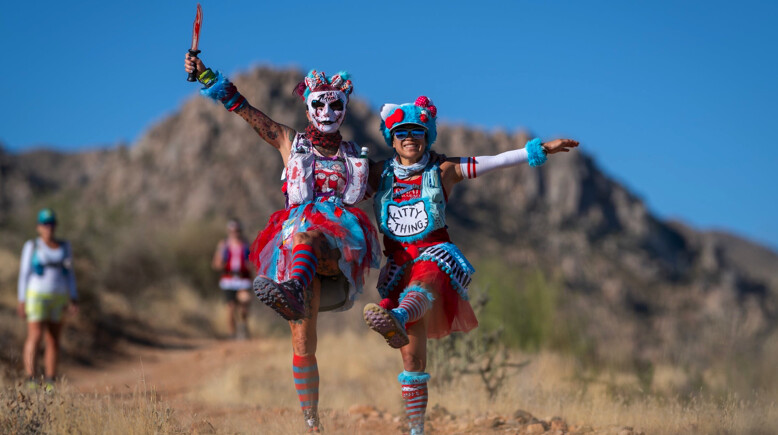
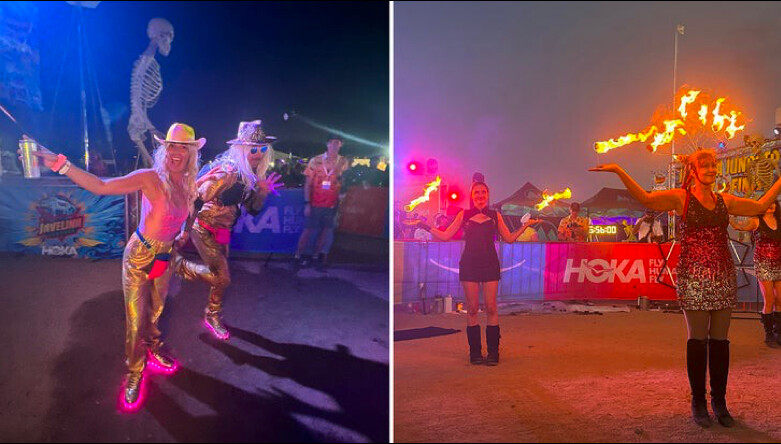
The 44-year-old senior creative recruiter from Scottsdale is 41 miles into the Javelina Jundred, and she also has to contend with a Tyrannosaurus rex who’s making her giggle. The dinosaur is, in fact, local trail running legend, Jerry Bloom, who is sweating and gasping for air inside an inflatable costume that’s kept afloat with a tiny battery-operated fan. He is dressed up as the dino-in-residence and runs alongside DesRochers briefly as she finishes the second loop of the five-lap course before sitting down to refuel and rehydrate in her crew tent.
“The problem with this thing isn’t the heat. It’s just that there’s no oxygen in here. If you run very far, you get oxygen deprivation,” says Bloom, 70, a three-time Western States and Hardrock 100 finisher who’s also run Javelina twice. “For me it’s all in good fun to support Lindsay. I’ve given up trying to be fast a long time ago. But what I’ve learned is that it’s not how far you go and it’s not how fast you go, it’s how you look while you’re doing it.”
Welcome to the Javelina Jundred—the biggest, wildest party in the trail running world.
It’s pretty obvious that the Javelina Jundred is the zaniest event in trail running and, to be frank, nothing even comes close to this dusty desert cavalcade of curiosities. It’s not quite the Burning Man of running, but it might just be better because, first and foremost, it’s a legit ultrarunning event.
More than 850 enthusiastic runners toed the starting line at 6 A.M. to begin the five-lap 100-miler, and about 400 more began the three-lap 100K an hour later. There’s also a single-loop, 19-mile nighttime race called the Jackass Night Trail for about 200 runners that includes a wild DJ’ed party at the Jackass Junction aid station and finishes as the Saturday night revelry is still going strong back at the race compound.
But because Javelina always happens on the weekend before Halloween, there’s a natural party vibe and a non-mandatory-yet-compelling reason for runners, pacers, and support crew to wear costumes. And, let’s face it, Halloween gives everyone license to fly their freak flag, so when you mix that with ultrarunning, just about anything goes. Only here it’s known as Jalloween.
This year’s most popular dress-up themes seem to be tropical and western, but, almost predictably, there are quite a few Barbie and Taylor Swift cosplayers, as well as a few heavy metal rock stars, glow-in-the-dark skeletons, and several very creepy clowns. Dozens more runners race through the desert wearing bunny ears, fox tails, and devil horns.
“This is a safe space for everyone to have fun in their own unique way,” adds Dan Gampon, a Hoka sports marketing representative from Hawaii. “It’s a fun way to give the people a chance to be weird and bring a part of themselves that they might have been wanting to bring out, and give them the opportunity just to have fun anyway they want to.”
Some crew tents are decorated with accouterments to match a particular theme, but most feature colorful holiday twinkle lights, camping chairs, sleeping bags, and coolers full of adult beverages. While there’s a stash of fancy engineered nutrition supplements and electrolyte drinks in every tent, there’s also the widest range of healthy and not-so-healthy snack food you can imagine. (I’m looking at you, guy simultaneously drinking a Red Bull and eating a handful of marshmallow Peeps.)
The Javelina staff and volunteers are fully into the Jalloween theme, too, especially race director Jubilee Paige, who dons several costumes during the 30-hour event—including getups she calls Race Director Barbie, Weird Barbie, The Dude, Cousin Eddie, Chef’s Kiss, and A Macaroni Penguin. She once again ends the event dressed as the Pope—a.k.a., “her Joliness”—because she considers Sunday “Jallelujah Javelina,” a day of celebration.
The Javelina Jundred was founded in 2003 by Phoenix ultrarunner Geri Kilgariff as an irreverent, party-oriented run on a multi-loop course, and gradually gained regional and then national popularity as word spread through the ultrarunning community about how much fun it was. Local ultrarunner Jamil Coury took over as race director in 2008. The next year he started Aravaipa Running, a Phoenix-based company that bought and now owns 75 other running events in Arizona, Colorado, Utah, Nevada, and New Hampshire.
Despite increased popularity and significant growth, Coury, Paige, and the rest of the Aravaipa crew have been able to maintain Javelina’s grassroots experience while growing it to about 1,500 runners in three events with at least that many pacers, crew, and family members hanging around the race compound. In many ways, it represents the best of both where trail running has been, but also where it could be heading.
“The race was born from a fun spirit of running with friends and looping in the desert—shout-out to Geri Kilgariff for her creation of the event in 2003,” Paige says. “But as it’s evolved, we saw opportunities to elevate the race to an ‘event’ experience for runners and crews—an ultra festival—the music and lights and entertainment just enhances that experience. However you experience Javelina, I just want you to have fun!”
As the sun begins to set, several top competitors in the 100-miler are scattered out on the remote sections of the course in hot pursuit of four Golden Ticket entries into next summer’s Western States 100. (Two tickets each for the men’s and women’s races.) That includes Boulder, Colorado, runner Jonathan Rea, who is back after a second-place finish a year ago, and—with newfound confidence from a fourth-place finish at the CCC 100K in Chamonix, France—is tearing up the desert trails on course-record pace. Triathlete-turned-ultrarunner Heather Jackson, who splits time between Bend, Oregon, and Tucson, Arizona, also takes it out hot, hoping to make up for a frustrating fifth-lap fade last year after unbearable quad pain reduced her to a walk and forced her to settle for a fifth-place finish in her 100-mile debut.
Earlier in the day, Denver’s Rajpaul Pannu and San Francisco’s Anna Kacius made quick work of the less-competitive, three-lap 100K race, finishing first and second overall, respectively, and setting new men’s (7:15:53) and women’s (8:13:07) course records in the process, while winning by more than an hour over their nearest competitors.
Ultrarunning GOAT Courtney Dauwalter from Leadville, Colorado, is out there, too, but she’s not racing for the win. She’s running the 100K with her mom, Tracy, a 66-year-old avid trail runner from Edina, Minnesota. They attempted a 50-miler in Minnesota last fall, but were timed out before the finish, so this year they chose the big party race in the desert where Courtney set a course record in 2016 before she became a household name. They’re not in costumes, but they’re running as Team Bucket List and wearing matching white shirts, cactus-themed socks, and olive-green-and-black shorts.
Because runners constantly revolve through the turnaround point at the start/finish area, everyone else is always on the move throughout the race compound. Some are drinking craft beers and mingling as they wait for their runners, while others are watching the race livestream on their phones or from the jumbotron in the Javelina Jeadquarters circus tent. Still others are devouring freshly cooked artisan pizzas made to order in the Freak Brothers Pizza mobile brick wood-fired oven.
Rousing cheers and applause catch everyone’s attention every few moments as an elite runner arrives—including the ever-smiling Jackson, who quickly heads out on her fifth and final lap with a 30-minute lead in the women’s 100-miler.
“Heather is just amazing,” says Troy Brown, 48, a trail runner from Coto de Caza, California. “She’s always smiling. I’m just a fanboy, but I like anyone who can smile that much through pain.”
After Jackson runs out of sight, Brown quickly shifts his focus to getting his feet into an inflatable T-Rex costume so he can participate in the costume contest, an informal event that brings out a sheriff riding an inflatable rooster, Minnie Mouse, a foursome of Teletubbies and, of course, several dinosaurs. There’s also a guy dressed as Aladdin wearing a large golden lamp around his waist who is joined by a scantily clad Jasmine character who not-so-discreetly rubs the lamp in a Not Suitable for Work (NSFW) scene that draws both raucous laughs and shocked gasps from the crowd.
One of the best dressed-up groups of the event is a foursome of women from California’s Healdsburg Running Company: Dominique Chevalier (“Western Barbie”), Krista Kappus (“Alien Barbie”), Saddie Alloway (“Rootin’ Tootin’ Diva Barbie”), and Susan Oh (“Disco Bob Ross”). But the costume contest winners are the Montana Mermaids, a bikini-and-grass-skirt trio from Bozeman—Lena Romeo, Kara Haskell, and Liv Bleskin—who were there to crew and support elite runners Rachael Norfleet of Montana in the 100K and Utah’s Ryan Montgomery in the 100-miler.
The sun begins to set, but the party’s just getting started as DJ Colter Stillwell pumps tracks through the sound system as a full moon rises in the eastern sky. One of the rowdiest dancers is Brendan O’Hara, a Colorado trail runner who’s dressed up in a red-and-white mouse outfit with flashing lights similar to what popular Canadian electronic musician Deadmau5 wears on stage. As lots of energized runners entered in the Jackass race are about to head out into the night, two professional fire dancers perform a mesmerizing routine adjacent to the start line.
Just after dark, Rea comes flying into the finish area, stopping just short of the finish line to pantomime deadlifting a colossal barbell before crossing the line in a new course record of 12:43:10. Seattle runner Blake Slattengren stopped the clock next in 12:58:07 to claim the second Golden Ticket, while Montgomery ran another strong race to take the final podium spot in 13:01:14.
Redeeming herself from last year, Jackson finishes strong to win the women’s race and finish sixth overall, thanks in part to the aggressive pacing of Devon Yanko. Jackson’s time of 14:24:47 is the second-fastest women’s time ever behind Camille Herron’s 14:03:23 course record from 2021. Spain’s Ragna Debats (14:55:27) outran Riley Brady (15:29:17) to earn the second women’s Golden Ticket.
Not long after midnight, the Dauwalters finish, too. Covered in dust, sweat, and even a little bit of blood—Tracy took a tumble on the first lap early the previous morning—they cross the finish line after 17 hours of running with big smiles and hug in a classic mother-daughter moment. Late Sunday morning, DesRochers makes it to the finish line, too, in 27:31:41, battling hard to overcome dehydration, an upset stomach, and nagging hip flexor pain at various points during the race.
“I was prepared for it to be hard, and I knew I was going to hurt. At some point, I was like, Oh, right, this is what running 100 miles feels like,” DesRochers says. “It was difficult, but I kept my positive mental attitude the whole way. I have a buddy who has a saying, ‘Forward is a pace,’ so I kept repeating that and kept putting one foot in front of the other and I didn’t quit.”
Something that’s especially apparent at Javelina is that everyone is celebrated as an equal, regardless of finishing times, trail running experience, athletic ability, age, or any other dissimilar details. The event goes out of its way to create an environment that promotes visibility and inclusion for everyone, and the community of participants seems to embrace it by cheering and encouraging for everyone the same.
It has partnered with Native Women Running, Latinos Run, and Black Men Run each of the past several years to bring their runners to the race, and it was also one of the first ultra events to offer a non-binary category. This year there were six non-binary runners racing over its three races, led by Willow Dolde in the 100-miler (20:01:29), Andreas Anderson in the 100K (13:54:30), and Tasha Hartwig in the Jackass 31K (6:42:07). (Although Brady, a non-binary runner from Boulder, was competing in the women’s division because they were racing for a Golden Ticket, they were also, unofficially, the top non-binary runner in the race.)
As the golden hour comes and goes early Sunday afternoon—and final finishers Holly Sitzmann, Jim Buckley, Brittany Edmiston, and Leslie Astle squeeze under the 30-hour cutoff with help from their pacers and crew—it’s clear that everyone at Javelina is celebrated equally and enthusiastically. That also includes two unofficial finishers—Rayna Rodriguez and Tatiana Orozco—who complete the 100-mile course just outside of the time cutoff, but are welcomed by a scream tunnel of remaining spectators and the adulation of Paige even though neither will receive a finisher’s buckle.
“Javelina is a celebration, and the invitation to run and participate at Javelina extends to everyone,” Paige says. “I want to ultimately show how amazing the community is and that this sport is for everybody and every body—the spirit of ultra is diverse and should be celebrated.”
(11/05/2023) ⚡AMPby Outside online
Want to Win a Race With No End? Work on Your Poker Face.
Harvey Lewis, who recently ran 450 miles to win Big’s Backyard Ultra, discusses the mental trickery that goes on during ultrarunning’s hardest race
Not many people can run 400 consecutive miles and still stand upright—fewer can complete this athletic feat and continue running. I think there’s just one person alive who could do it and then unleash a sprint that would make Usain Bolt proud. That’s Harvey Lewis, the newly crowned world champion for the niche sport of Backyard Ultrarunning.
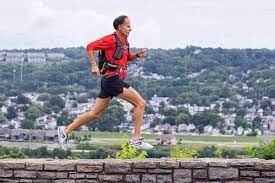
Lewis, 47, won his title at the October 21 Big Dog’s Backyard Ultra in Tennessee—the race known simply as “Big’s” in ultrarunning parlance—by running 450 miles over the course of 108 hours. Lewis is also the star of the hilarious video below (credit to UltraRunning.com) which made the rounds on social media as the race was still going on. Give it a watch.
Some quick context: the clip was captured a the race’s 400-mile mark (yes, 400!), and the eight runners in it have been jogging around a 4.1667-mile loop every hour for four consecutive days. When the starting bell sounds, seven of the eight shuffle onto the course looking like extras from The Walking Dead. And then there’s Lewis, who cracks a grin, kicks up his heels, and Usain Bolts away. He looks like he’s having a blast.
As it turns out, he was. “I’m really fired up in that video,” Lewis recently told me. “There are times during races when I have to hype myself up, but not there. I am already so hyped up, just mentally and physically. That’s what you have to do to keep yourself in the game.”
The game that Lewis is referring to is the strategy—nay, the psychological warfare—that goes on during one of these grueling races. At Big’s and other backyard ultras, participants run around a 4.167-mile loop every hour, hour after hour, for days on end (the distance means they complete 100 miles every day). They start and finish in the same location, and can rest or eat or use the toilet in the time between each lap, which is never long enough for them to sleep for more than a minute or two. As the event goes on, participants drop out due to sleep deprivation or blisters or diarrhea or because their brains simply cannot fathom any more running. The winner is the final person left standing.
This twisted format was dreamed up by Gary Cantrell—known as “Lazarus Lake”—the designer of the infamous Barkley Marathons. Backyard ultras foster some unorthodox head games amongst the handful of elite runners. At some point, they become hardcore body-language analysts, eyeing each for signs of injury or exhaustion. Simultaneously, they mask their own ailments in an attempt to convince their peers that they are feeling just fine and dandy—even thought every one of their muscles throbs with pain.
“There’s a lot of poker faces out there,” Lewis says “If one of the competitors starts to show weakness, it just adds thunder to everyone else. Part of the game is showing that you’re strong.”
There are plenty of telltale signs that a runner is nearing the end: limping, wincing, sitting down. Some athletes, after running hundreds of miles, begin to list to one side like a torpedoed warship. Oftentimes, runners nearing the limit will finish each lap just a few seconds before the next one is to begin—the countdown is marked by three whistles and then a bell.
There are also all manners of tricks for covering up the pain. Lewis said that his toughest competitor at Big’s, Ihor Verys of Ukraine, maintained a stoic and expressionless demeanor—think Ivan Drago from Rocky IV—right until the moment he dropped out at mile 445. Dutch ultrarunner Merijn Geerts, who dropped at mile 417, told the Bad Boy Running podcast that he will purposely start a race looking disheveled so that competitors cannot notice a meaningful change in his appearance as the event goes on. “If someone looks very fresh from the beginning, and suddenly he doesn’t look fresh anymore, you know there is a problem,” Geerts said. “If you don’t look very [fresh] all the time, then your opponent doesn’t know you are suffering.”
Fibbing is another formidable tactic. As Big’s stretched past the two-day mark, Lewis heard some competitors respond truthfully to a familiar question that runners ask one another on the trail: how are you feeling? “I was surprised to hear people saying ‘I was hallucinating’ or ‘I have a blister on my foot,‘” Lewis said. “Loose lips sink ships.” Lewis, who teaches U.S. government at a high school in Cinncinatti, Ohio, told me that he’d never divulge his aches and pains to a competitor.
“I don’t know why anyone would ask me how I feel during a race,” he says. “I could have blood pouring out of my head and I’d still say, ‘I feel amazing!’”
And then there’s the whole sprinting thing. Running fast is absolutely a psychological flex—a way to show the competition that you are supremely confident and also feeling fantastic. Think of it as the backyard ultra version of Steph Curry’s highly-intimidating pregame warmup. Lewis’s mad dashes were an integral weapon in his psychological war chest, he said, and he sprinted out of the gate again and again during Big’s.
“It’s like here we are at mile 400 and I can just go man,” Lewis says.
Here he is starting mile 300.
Here he goes at mile 425, looking considerably less spry.
But the sprinting tactic can also backfire, because a sprint puts more strain on leg muscles than a steady jog. In June, Lewis participated in Australia’s Dead Cow Gulley Backyard Ultra, and after two days of racing he employed the sprinting tactic. But the maneuver began to wear his body down, and he dropped out at mile 375 with two competitors remaining.
“I did it way too much and got carried away feeling invincible and not reigning myself in,” Lewis admits. “Because the counter to it is to just run your own race.”
At Big’s, Lewis only sprinted at the start—he actually didn’t complete the loops fastest, and during many laps he finished several minutes behind Bartosz Fudali of Poland, who exited the race after completing 429 miles. For all of the psychological gamesmanship that goes on in a backyard ultra, Lewis said there’s really no way to overcome a runner who has a steady rhythm, an expert nutrition plan, and the steely attitude to keep going—no matter what. Lewis said his winning tactic was more about mindset than about mind games.
“I don’t care what distance anyone else goes—I’m just going to commit to going further,” he says.
(11/05/2023) ⚡AMPby Outside Online
8 Things Running and the Creative Process Have in Common
I was talking with a writer who is also a runner the other day, and she asked me about the hardest part of the creative process. I blurted out something about the similarities between the two: the creative process and running. This is something I actually believe, even if I was less-than-eloquent when trying to verbalize it over the phone (sorry, Morgan). So I thought I’d elaborate, using some slightly edited (or not edited at all) illustrations from my book I Hate Running and You Can Too.
Running, like creativity, is a self-motivated endeavor. The act of writing a book (or a poem or a song or a short story) or making a painting (or a short film or a block print) takes effort. In both cases, it is much easier to binge-watch a new show or open TikTok and make an hour or two disappear.


Nobody’s making you go for a run today or train for an upcoming race, and nobody is making you work on a creative thing. Unless you have a publishing contract, in which case they’re still not making you work on it—but legally, you’ve promised to complete it. Which is maybe why this chart works as well for running as it does for, say, writing a book, with a few minor edits:Yes, it takes courage to start making a film, or writing a memoir, or to announce you’re training for your first half-marathon (even if you’re just announcing it to yourself). Does it take courage to finish the film/memoir/race? Sure, but also just a shitload of good old-fashioned grit.I was just watching a video by Tim Grahl about how many writers make the mistake of trying something too ambitious their first time. In the video, he essentially asks, would you pick Mt. Everest as your first mountain climb, if you had never climbed a mountain or even camped before? So maybe don’t use Game of Thrones as the model for your first book, or the Leadville 100 as your first trail run (or, OK, the Boston Marathon for your first road run)? Start with writing a short story, or a novella, as you’d use a two- or three-mile run to see if you liked it enough to try a half-marathon. Seth Godin’s creative advice of Start small, start now applies to running too.Here’s Mario Fraioli, running coach and writer of The Morning Shakeout:
“If you want to be good at something, you’ve got to be at it for a long time. There are people who’ll run for 10 or 12 weeks at a time, and then for whatever reason, things sort of fall off the rails for a while. Then, when they try to get back into it, it’s a lot harder. I’m a huge believer in consistency, which doesn’t mean you need to train at the same level throughout the year, but you need to develop those habits.”
And here’s Annie Dillard from her book The Writing Life:
“A work in progress quickly becomes feral. It reverts to a wild state overnight. It is barely domesticated, a mustang on which you one day fastened a halter, but which now you cannot catch. It is a lion you cage in your study. As the work grows, it gets harder to control; it is a lion growing in strength. You must visit it every day and reassert your mastery over it. If you skip a day, you are, quite rightly, afraid to open the door to its room. You enter its room with bravura, holding a chair at the thing and shouting, “Simba!”Question 1: What’s easier, putting in the hours and work required to run a marathon, or thinking to yourself, “I’d like to run a marathon someday”?
Question 1a: Same as question 1, except substitute “write a book” for “run a marathon”Inspiration is great, but it won’t do the work for you. In creative work and running, inspiration is a spark, not a fire. Fear might work as a motivator, though.Speaking from personal experience: the race lasts a few minutes or hours, which is a memory, but in preparing for the race, you get hours and hours of experiences, fun moments, low points, maybe some good sunrises and sunsets, conversations with friends who joined you, progress, dreams, and probably several dozen runner’s highs. Even if the race doesn’t go as well as you’d hoped, you still get to keep those memories.
The writing of a book, or finding the exact right song to go with your video footage, or shooting fifty photos just as the golden hour is peaking, is hard work, but no one can write a negative Goodreads review, or leave a nasty YouTube comment, on those experiences. You might look back on your work in ten years and wish you’d written a section differently, or let a scene breathe a little more, but you probably won’t have much regret about the time you spent dreaming and typing, or standing out there with your camera at dusk, waiting for the light to be perfect.
(11/05/2023) ⚡AMPby Outside Online


